|
THE ALVIATOR'S VERDICT
Turkish Airlines features industry-leading amenities, food and beverages, but I can't overlook the uncompetitive 2-3-2 seating in longhaul business class. |
3.5
|
After a perfectly pleasant flight from London Gatwick to Istanbul on Turkish Airlines’ A321neo, it was time to connect to Hong Kong on a Turkish Airlines 777. I’d always wanted to try Turkish Airlines longhaul, and was excited to have the opportunity to do so, albeit with my flight being on the airline’s inferior business class product.
Turkish Airlines introduced a new business class product in 2019, featuring on their 787s and A350s. While an increasing number of Turkish Airlines routes are being operated by these newer planes, 777s and A330s still make up a vast majority of Turkish Airlines’ longhaul fleet, and Turkish Airlines has no plans to refurbish these planes soon. These planes, particularly the 777, feature an older business class product introduced in 2010, and continue to operate some of Turkish Airlines’ longest flights to Asia and the US/Americas, as well as many flights within Europe.
It’s worth noting that I flew the older version of Turkish’s 777 business class seat on this flight – some of their newer 777s feature enhanced privacy dividers and more modern seat finishes. You won’t be able to tell which seat you get until you board your flight.
How I Booked Turkish Airlines’ 777 Business Class
I booked a cash roundtrip business class ticket from London to Hong Kong, departing from Gatwick and arriving at Heathrow. My itinerary cost a total of £2,480 (~HK$22,330 as of time of writing). This was cheaper than both a direct flight in economy with Cathay Pacific, and the cheapest premium economy option on Lufthansa (which priced at around £2,500).
As Turkish Airlines is a Star Alliance carrier, I credited all earned miles to my Singapore Airlines KrisFlyer account.
My Experience Flying Turkish Airlines’ 777 Business Class
I was transiting from London, and we were let straight out into the departures hall from our previous flight. Istanbul Airport is massive, and architecturally stunning; however, I thought that signage was severely lacking (gate signage was generally good, but there was a lack of signage continuity – I was trying to find my way to the Turkish Airlines business class lounge, and the signage stopped pointing me to the lounge along the way), and I also didn’t appreciate the lack of trains used to get between parts of the airport. The “main” hall of the airport with duty-free shops and restaurants is absolutely massive, and it could take up to half an hour to walk from one side of the airport to the other (imagine having a tight connection!). I was able to connect to the airport’s free WiFi, though didn’t appreciate the fact that it was timed, and also thought that it was far too slow for a brand new airport.
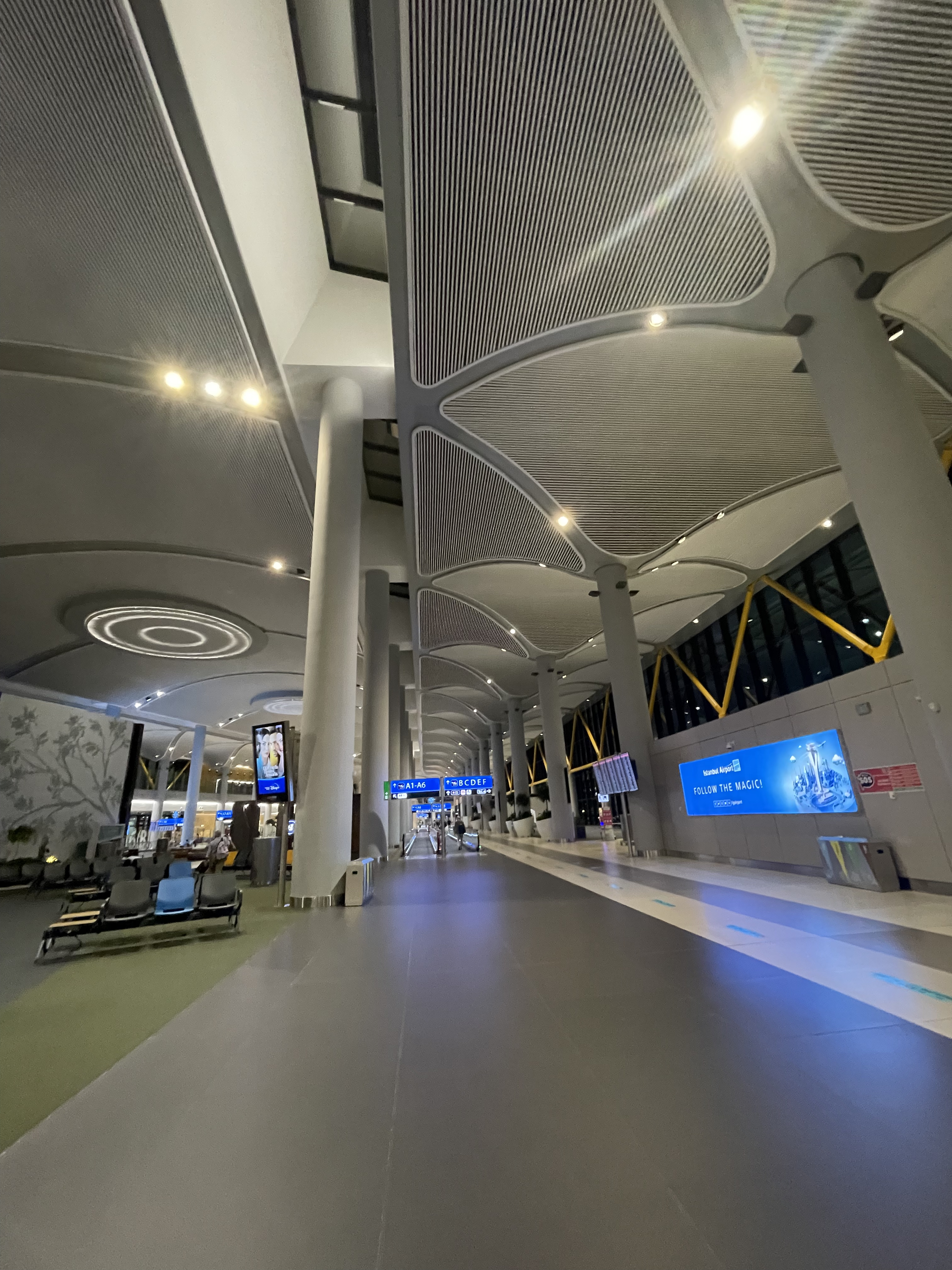
Istanbul Airport’s massive terminal
I spent time at Turkish Airlines’ hub lounge at Istanbul Airport, which I’ve reviewed here. Our gate information was released at 12:55 AM ahead of our 2:10 AM flight (and a printed 1:10 AM boarding time on our boarding pass). It was a 10-minute walk from the lounge to gate D7 – one of the shorter walks in the airport, given its size – and the gate area was already open by the time I arrived. I decided to hang out in the “holding pen” area, and my documents for entry to Hong Kong (PCR test, quarantine hotel QR code) were checked upon entry to the gate area.
Istanbul Airport’s gates have floor-to-ceiling windows, so I had a clear view of my 777 headed to Hong Kong. This was TC-JJE, Turkish’s first and oldest “own” 777 (they used to lease Jet Airways 777s, though have since returned them all), which was delivered to the airline just under 12 years ago.
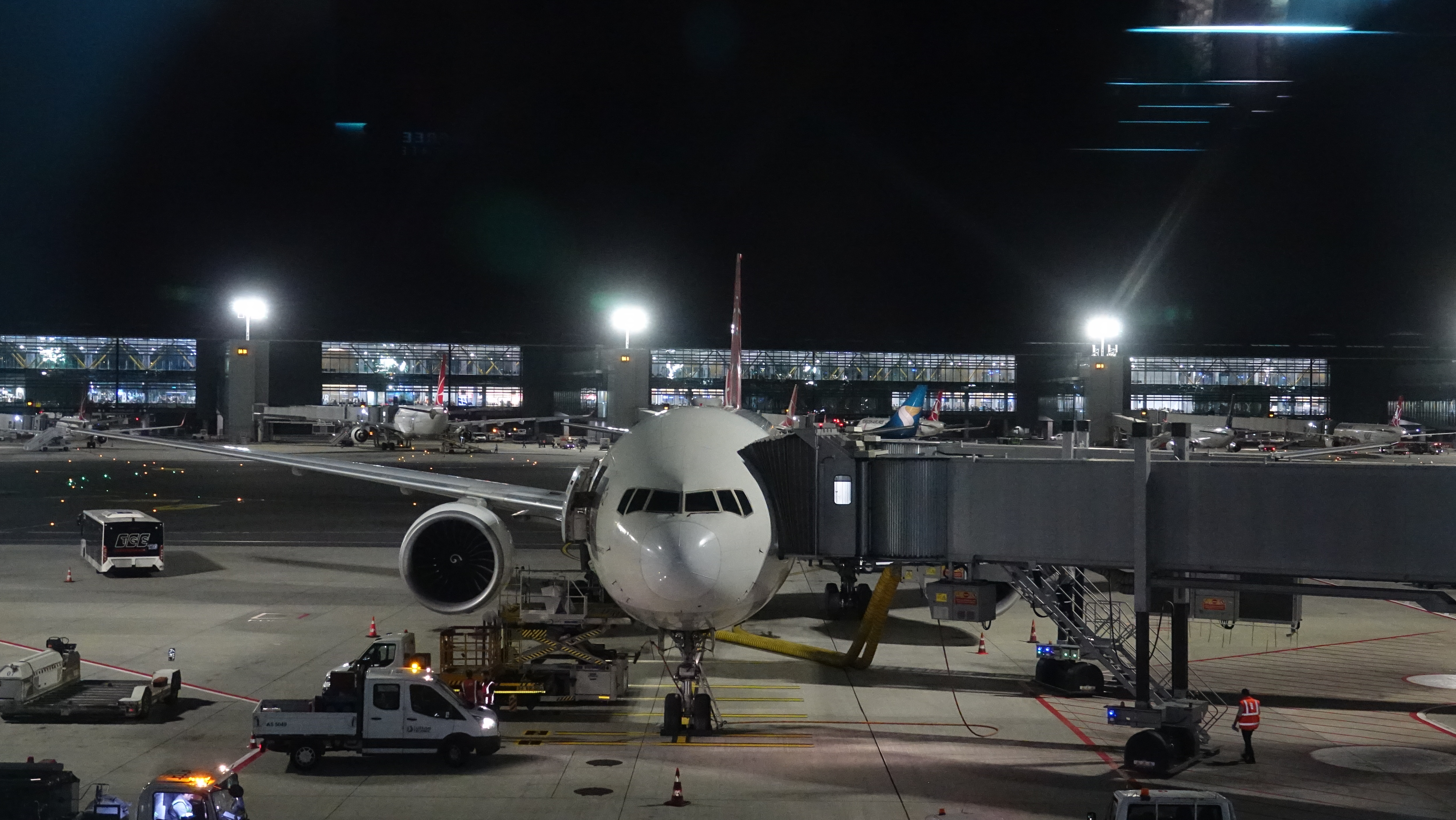
Turkish Airlines 777 at Istanbul Airport
Unfortunately boarding was a mess – you could tell the gate agents were overworked, and there was a large tour group that rushed to line up (in a very disorderly way) whenever a gate agent would approach the desk. At some point a 20-minute delay was announced due to maintenance issues, and none of the passengers in line would take their seats, largely due to a language barrier. The gate agents also didn’t speak much English, so could only bark “sit down” at passengers, who wouldn’t listen, which only frustrated the gate agents even more.
At one point, the gate agents herded economy passengers through the boarding line to the other side of the holding pen (somewhat confusingly, as business class passengers, we weren’t advised to do the same). While there was an infirm passenger in a wheelchair who would’ve boarded first, he seemed to have hurt his foot during transport – his travel companion seemed desperate, and from the sound of it this wasn’t his first time being unable to board his flight to Hong Kong. At one point I offered myself up to the gate agent asking if they needed any help (especially since he was in business class too, and I knew I’d have WiFi onboard), though they didn’t know enough English to converse with me, and just said “maintenance issue” – despite me clearly pointing at my foot and then gesturing at the gentleman. I really don’t envy the gate agents’ job (and genuinely don’t think they’re paid enough to do what they do) – what a hard crowd to navigate!
There was not much that could be done to help the infirm passenger – even lifting his leg onto the footrest on his wheelchair was hugely painful for him – and the gate area also didn’t get any less chaotic. Boarding started at 2:10 AM, an hour later than planned, starting with business class passengers and Star Alliance elite members. (I’m not sure if the infirm passenger made it onto the flight – he was seated in the forward cabin.)
Turkish Airlines Flight TK70
Tuesday, September 6, 2022
Origin: Istanbul (IST) Gate: D7 Dep: 02:10 (02:55)
Destination: Hong Kong (HKG) Gate: 28 Arr: 17:25 (18:20)
Duration: 10 hr 15 min (10 hr 25 min)
Aircraft: Boeing 777-300ER Reg: TC-JJE
Seat: 7K (Business Class)
Turkish Airlines’ 777 Business Class Cabin and Seat
Turkish Airlines’ 777s feature forward facing business class seats in a 2-3-2 configuration.
The forward cabin features four rows of seats, for a total of 28 seats.

Turkish Airlines 777 Business Class Forward Cabin
Meanwhile the rear cabin, which I was seated in, features a further three rows, totalling 21 seats (for a total of 49 seats in the cabin). The rear cabin is more intimate inflight, though all economy class passengers pass by you on the way to their seat.
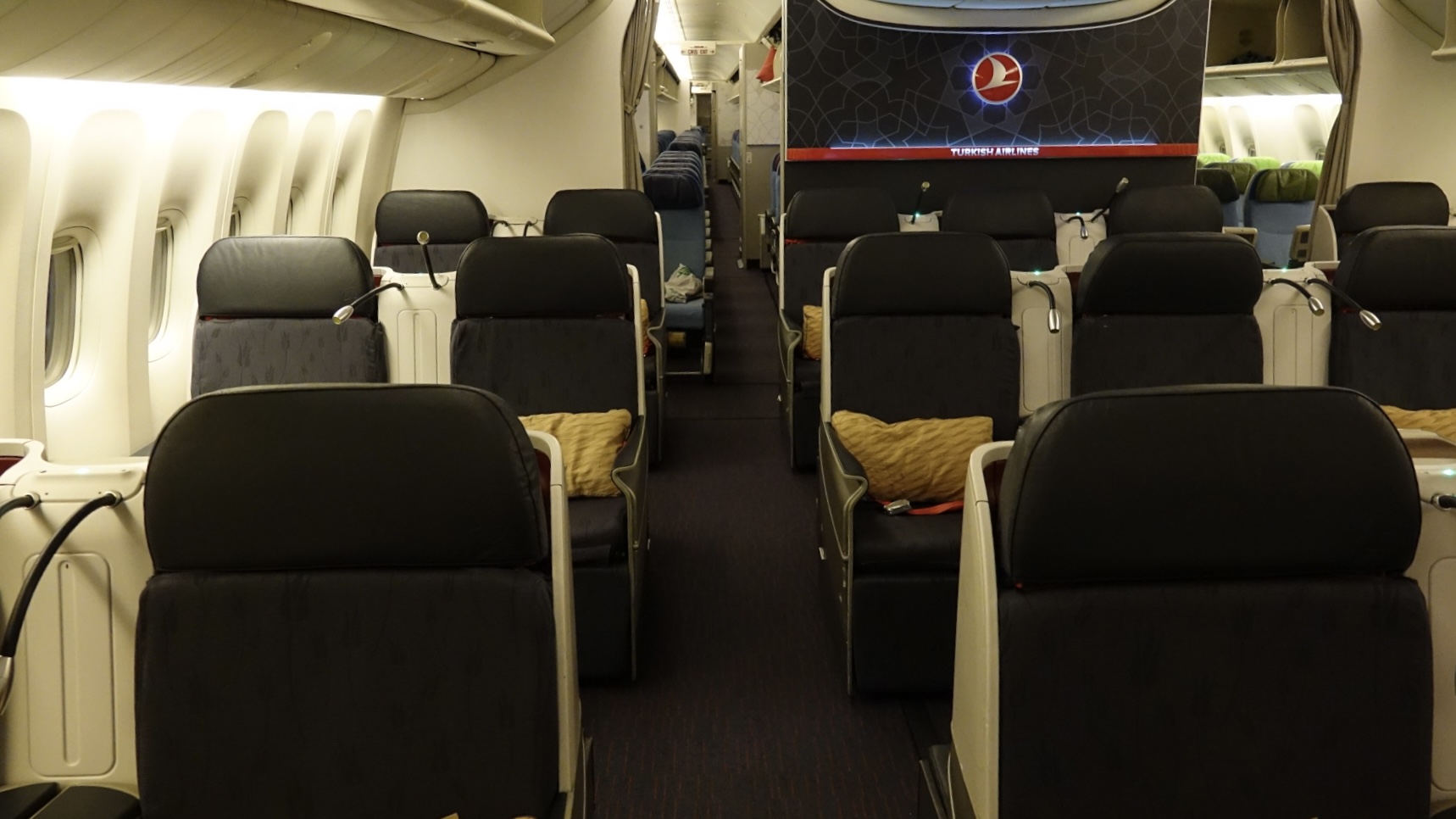
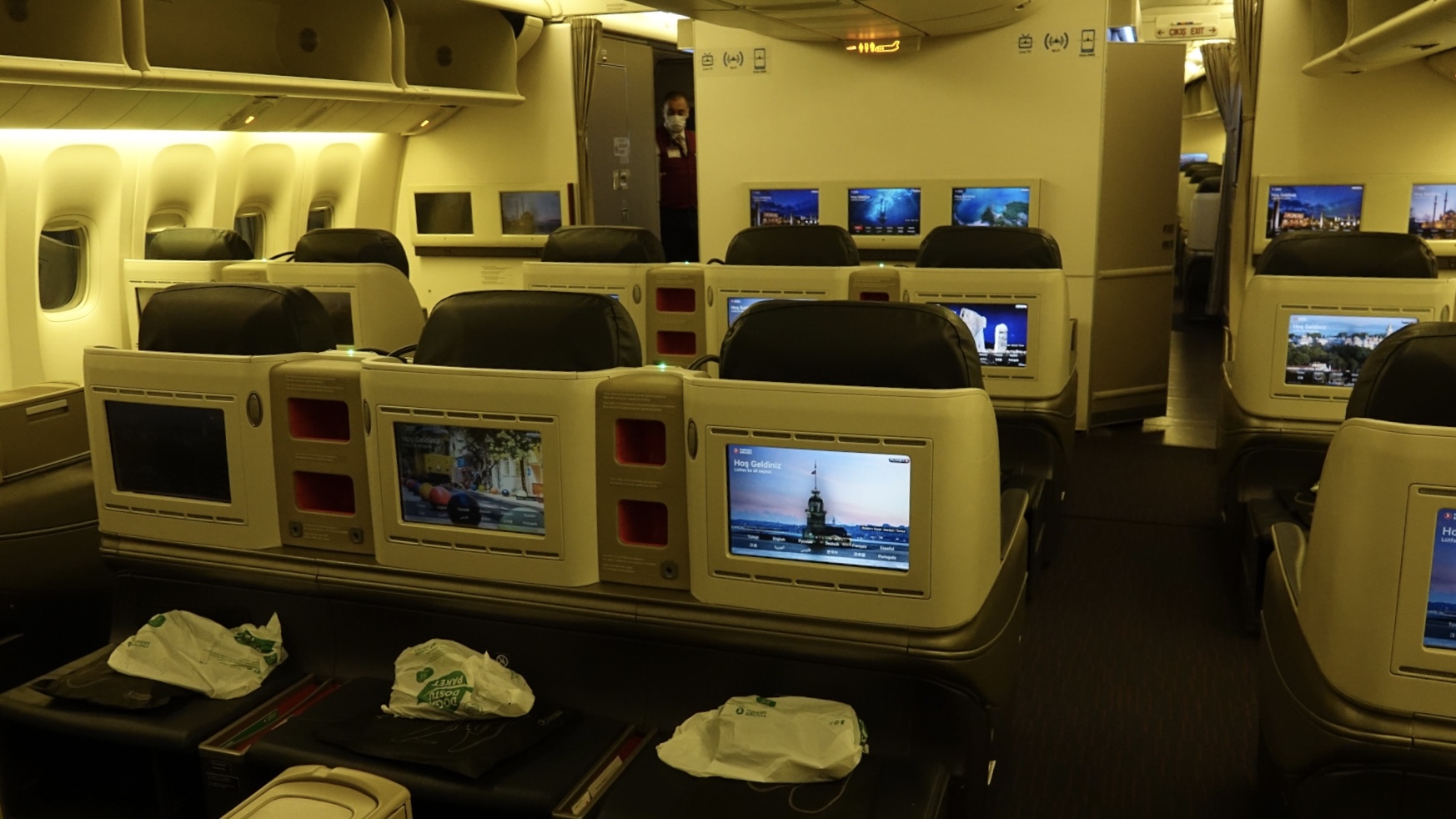
Turkish Airlines 777 Business Class Rear Cabin
I assigned myself seat 7K, once again in the last row of business class. This is normally my preferred place to sit, though I also wanted to heighten my chance of having an empty seat next to me (I succeeded).
As briefly mentioned earlier, Turkish has two iterations of their standard forward-facing business class seat. This was the older iteration, which didn’t have enhanced privacy dividers and featured lower-definition screens.
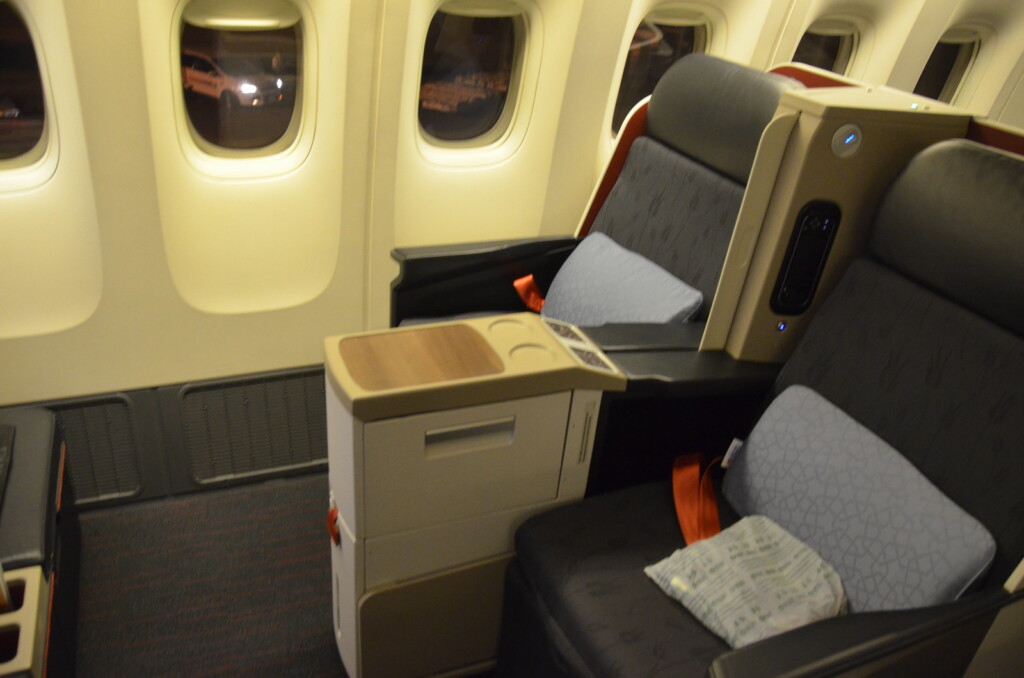
Here’s a picture of the business class seat on their newer 777s, which still isn’t their newest product featuring on their 787s and A350s
As far as I can tell, most 777s with registrations beginning with TC-JJ*/TC-LK* feature this older seat, whereas those with registrations beginning with TC-LJ* feature the newer seat.
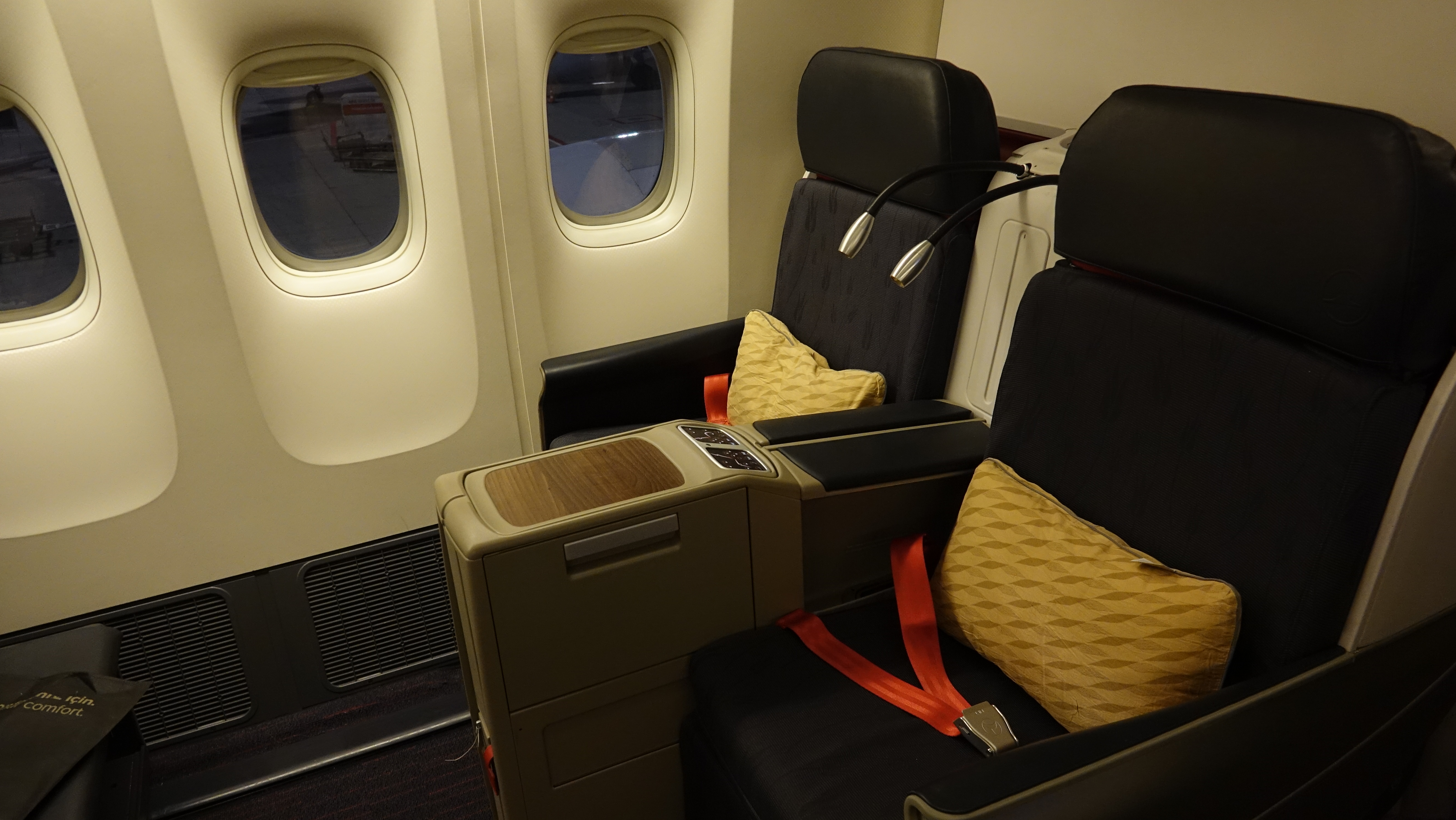
Turkish Airlines 777 Business Class Seats 7J and 7K
This configuration gives you more legroom than just about any other business class seat – to compare, Qatar Airways’ QSuite-configured 777-300ERs only have four less business class seats between doors 1 and 2, despite having business class suites with doors in a 1-2-1 configuration. Of course that’s at the expense of direct aisle access, which I value much more as a business class passenger.
A TV and sturdy ottoman were located in front. The TV screens were smaller and definitely lower definition than the screens on the A321neo (and were also very far away, given how much legroom there was), though I thought the screen was still perfectly usable.
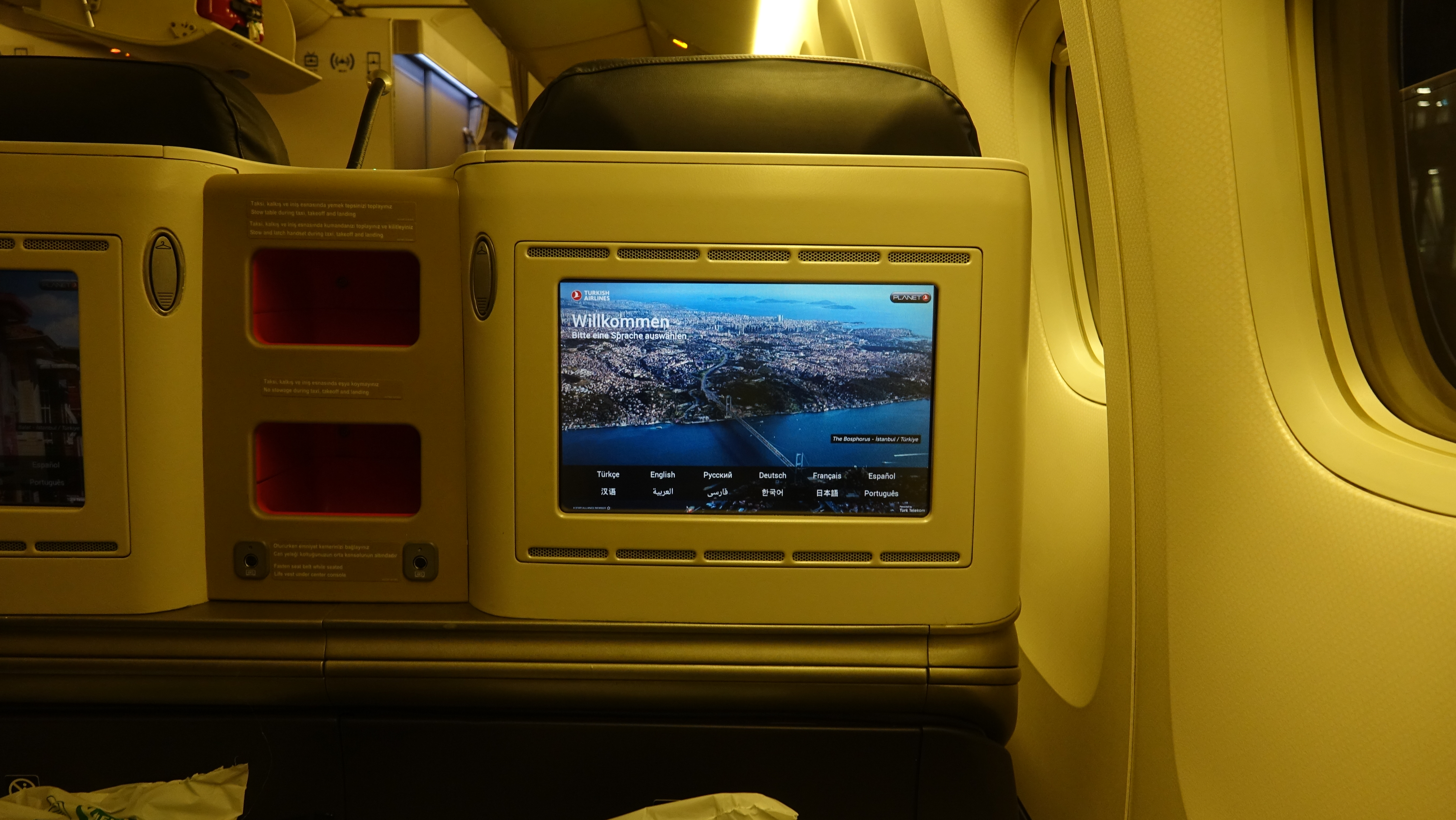
Turkish Airlines 777 Business Class Seatback TV and Legroom
To my left were some intuitive seat controls, which included a lumbar support and massage function, as well as a memory function (though no preset “reclined-but-not-flat” position).
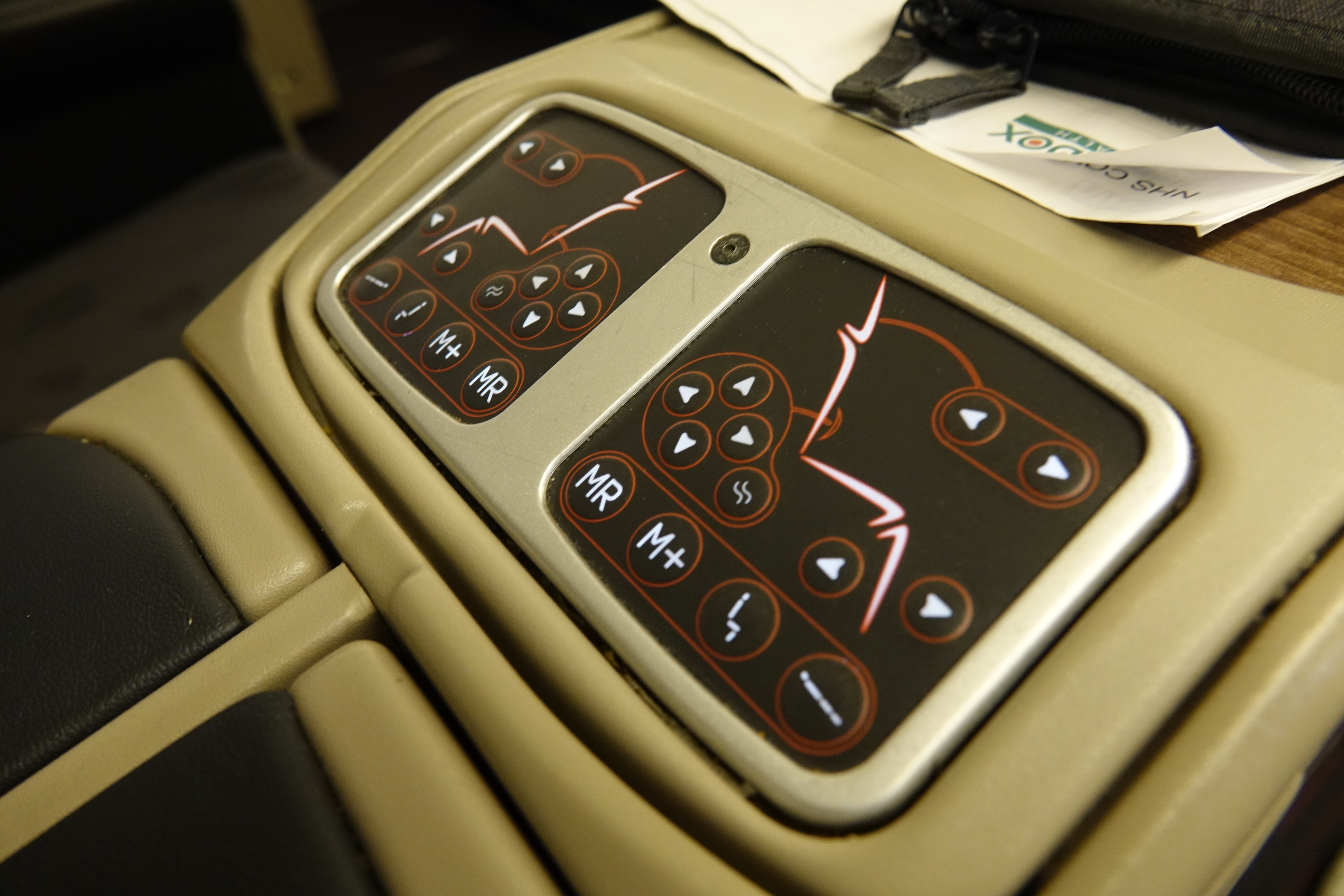
Turkish Airlines 777 Business Class Seat Controls
There was also table space for a drink (apologies for my passport pouch, boarding pass stub and COVID test).
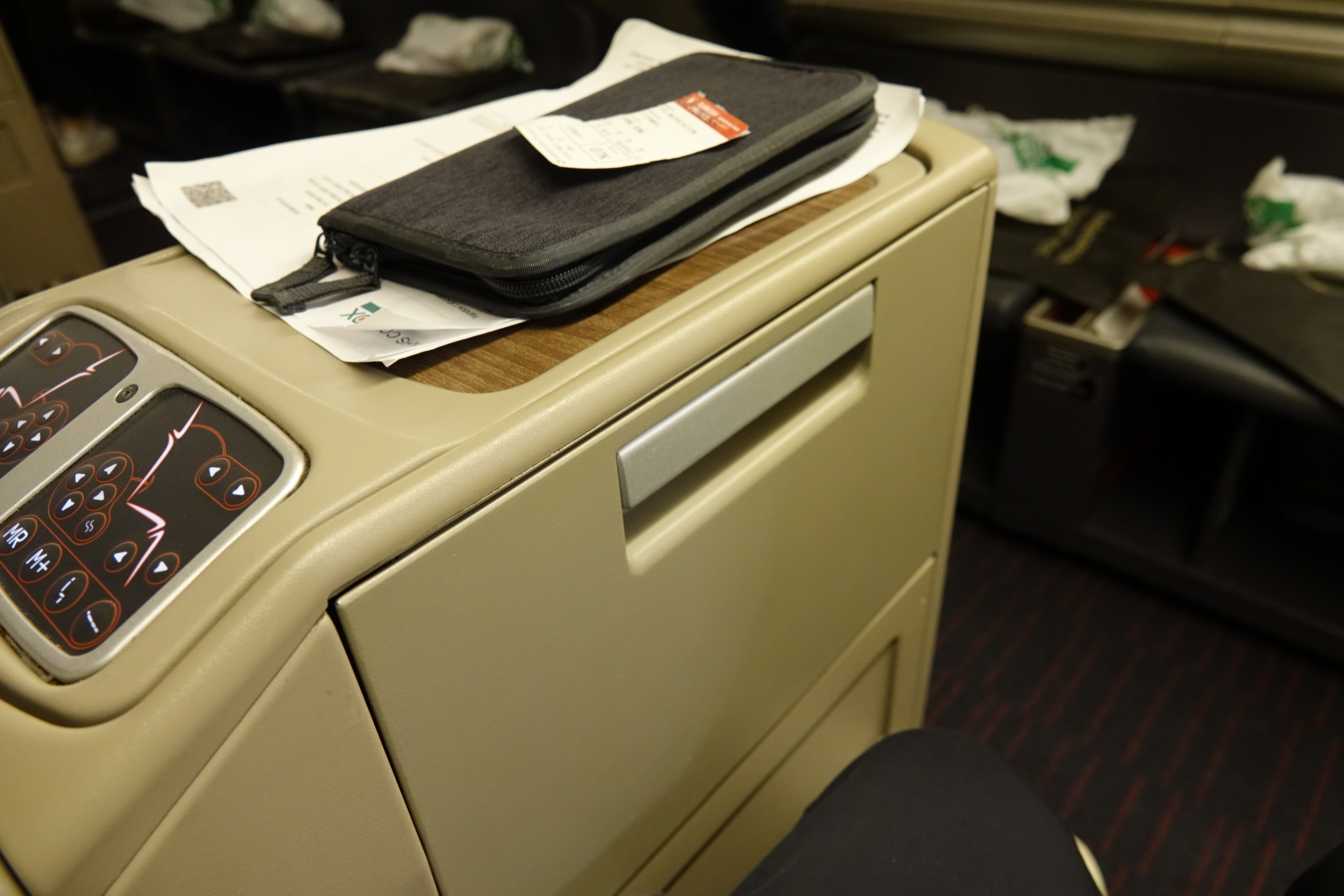
Turkish Airlines 777 Business Class Center Console
A sturdy tray table folded out of the armrest, and I appreciated that it could be adjusted for easy aisle access while dining inflight. I did think it was quite small, though not unusably so.
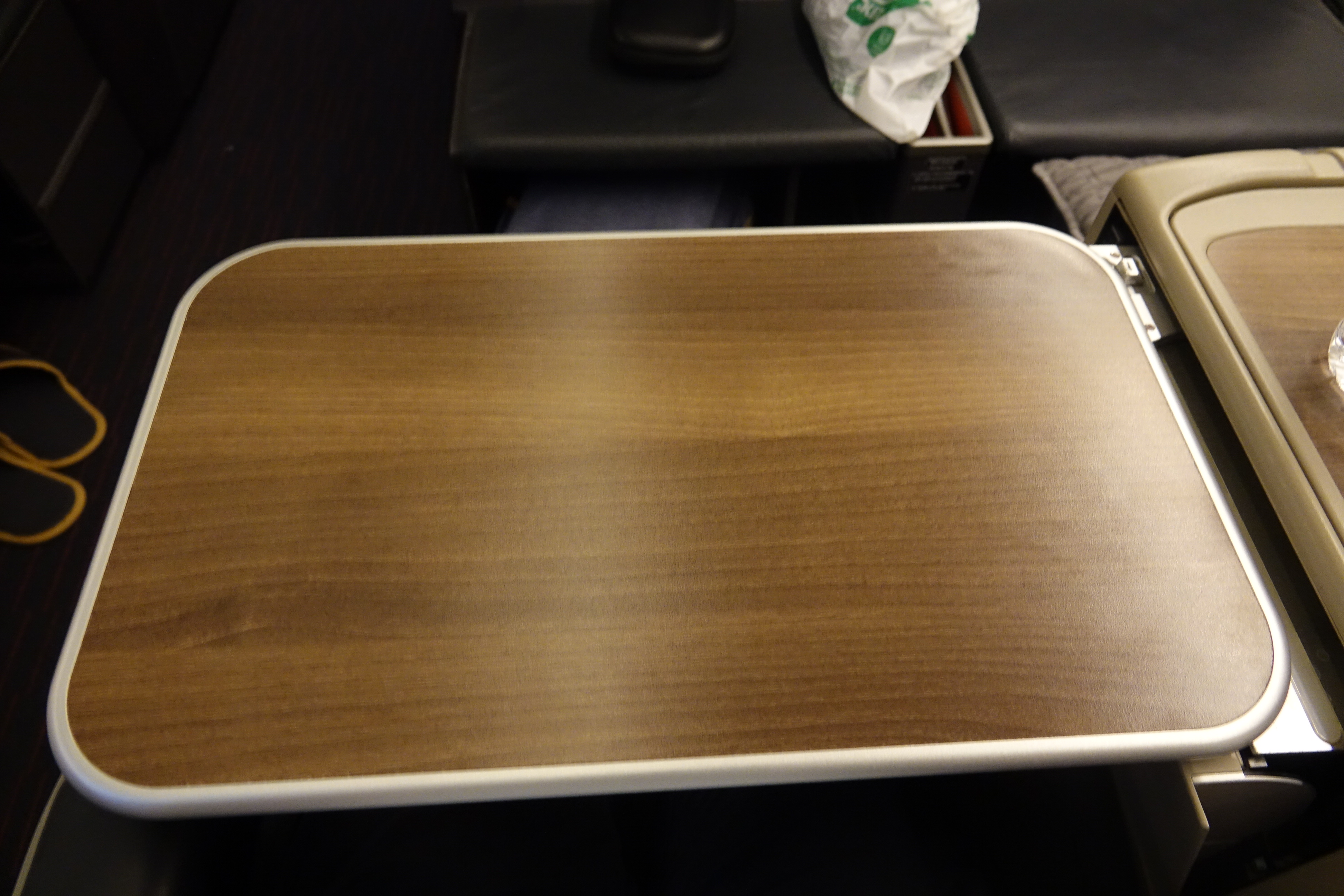
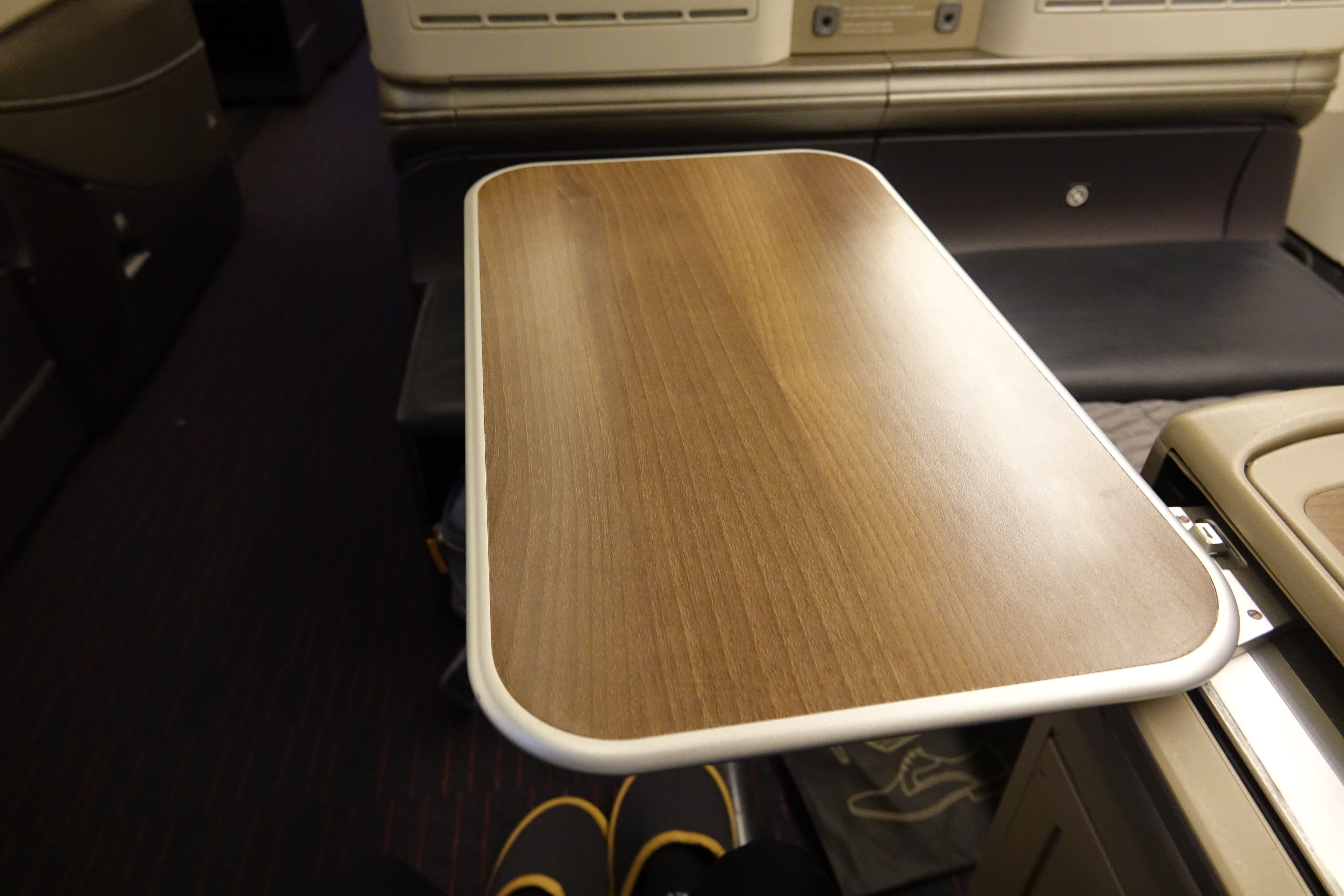
Turkish Airlines 777 Business Class Adjustable Tray Table
Below the ottoman was a large storage area for shoes or a backpack – while a sign indicated no stowage during takeoff and landing, the crew didn’t ask for bags to be removed from this area during their safety checks. The newer 777s feature storage lockers by the ottomans, which I suppose would’ve been a nicer touch (though didn’t mind these older cubbies at all).
More than anything, I thought the ottomans hugely contributed to bed comfort, as the seat was very, very sturdy in bed mode (which I’ll elaborate more on below).
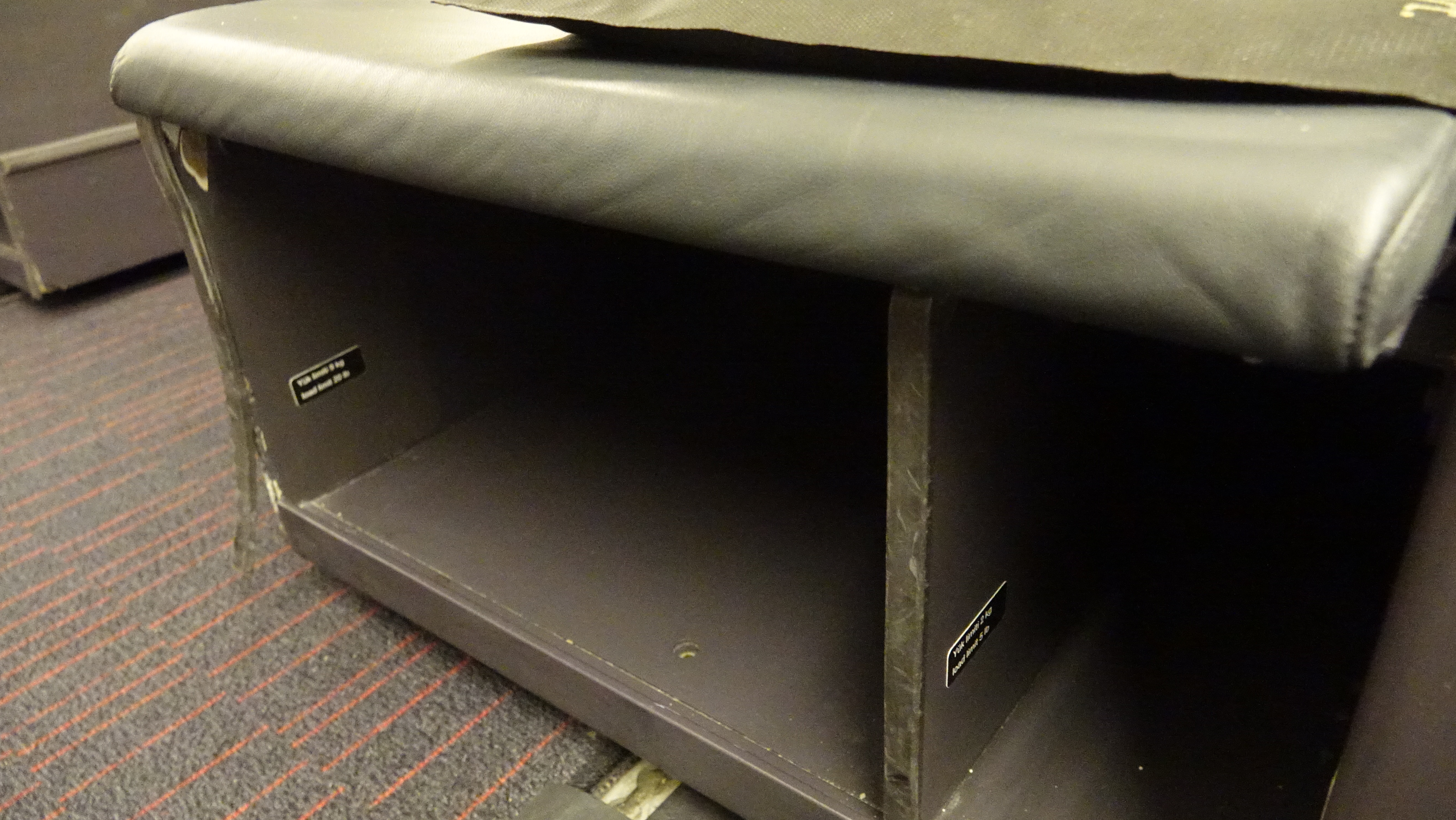
Turkish Airlines 777 Business Class Ottoman and Storage Space
In front of me, between the two TV screens, were two small storage “shelves”. Presumably this would be useful if I had a mini-DIN cable (which connected to the entertainment system – 2010 called and they want their mini-DIN port back), though it was too far away from the USB port to be of any use on my flight.
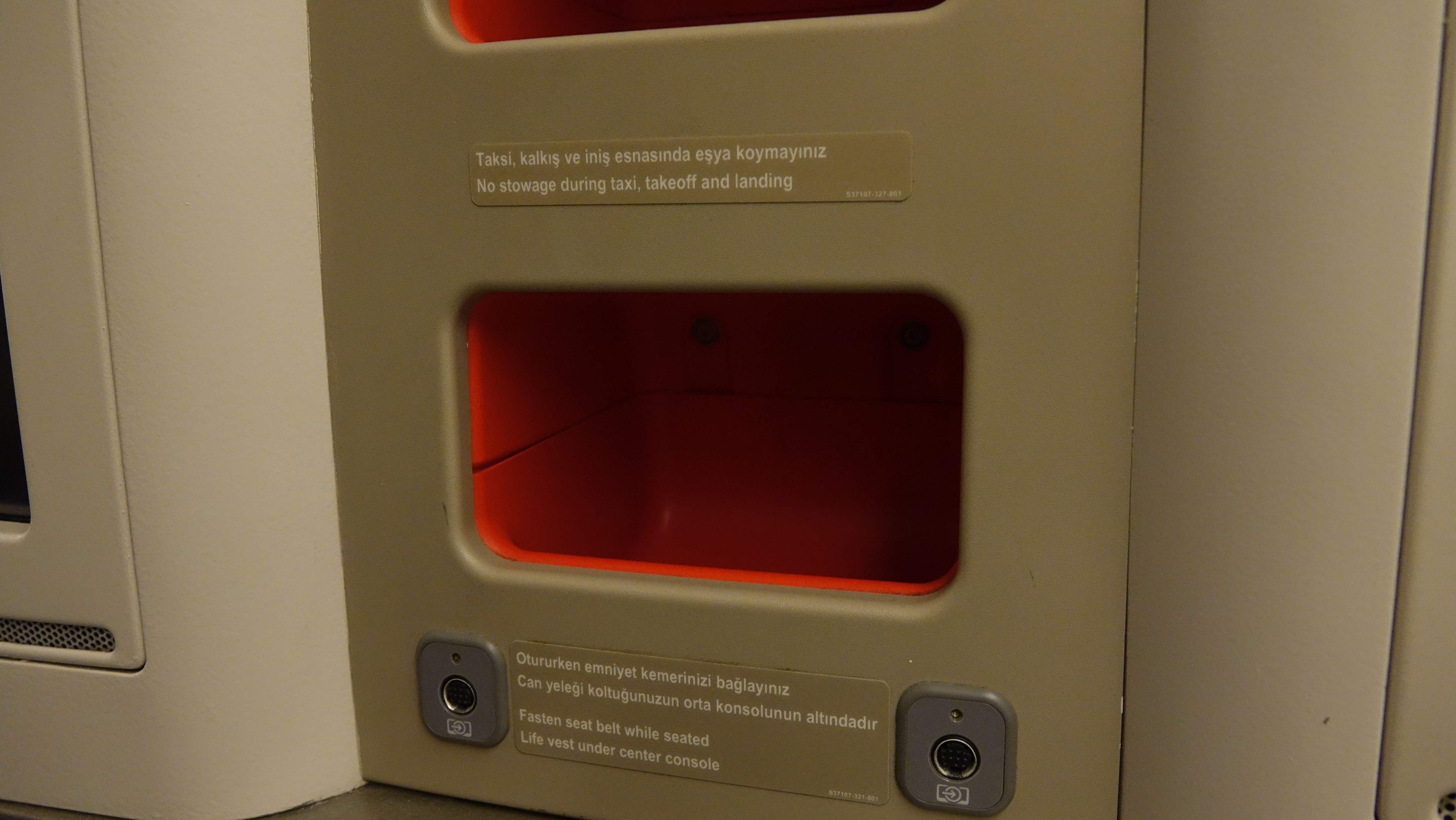
Turkish Airlines 777 Business Class Phone Compartment
While there was no privacy divider on this older 777, I was very impressed to find that the armrests raised to create a little privacy partition of sorts between seats. As somebody seated in a window seat, this made a difference when I was in bed mode.
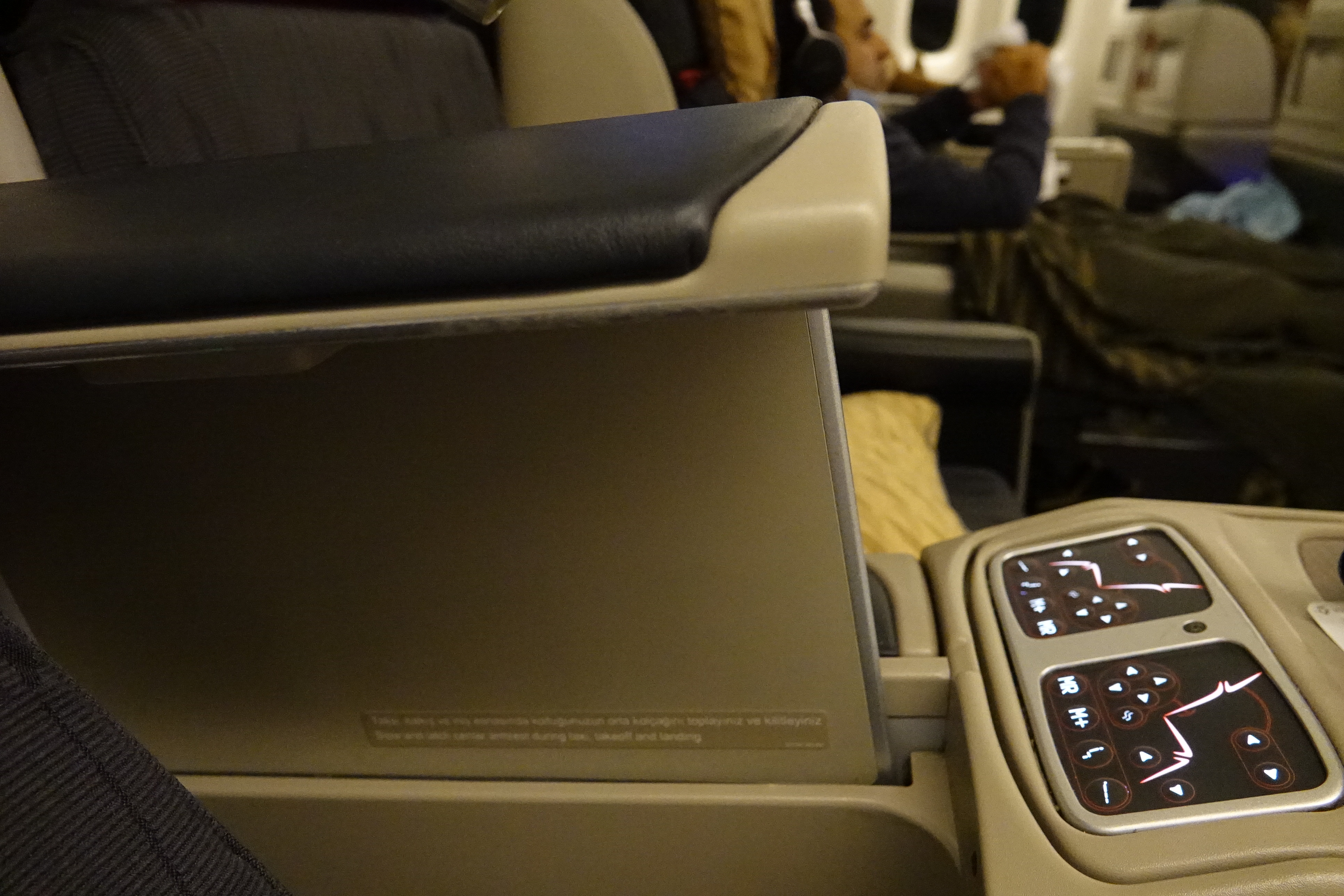
Turkish Airlines 777 Business Class Privacy Divider (of sorts)
A little storage sleeve was located under the armrest between seats, featuring the entertainment screen controller, as well as a 110V and USB power port. Rather unforgivably, both ports at both seats (all four power ports!) were broken on this flight, so I had to charge my devices at another empty seat in the rear business class cabin. This was the most obvious form of wear and tear in an otherwise not-so-shabby cabin.
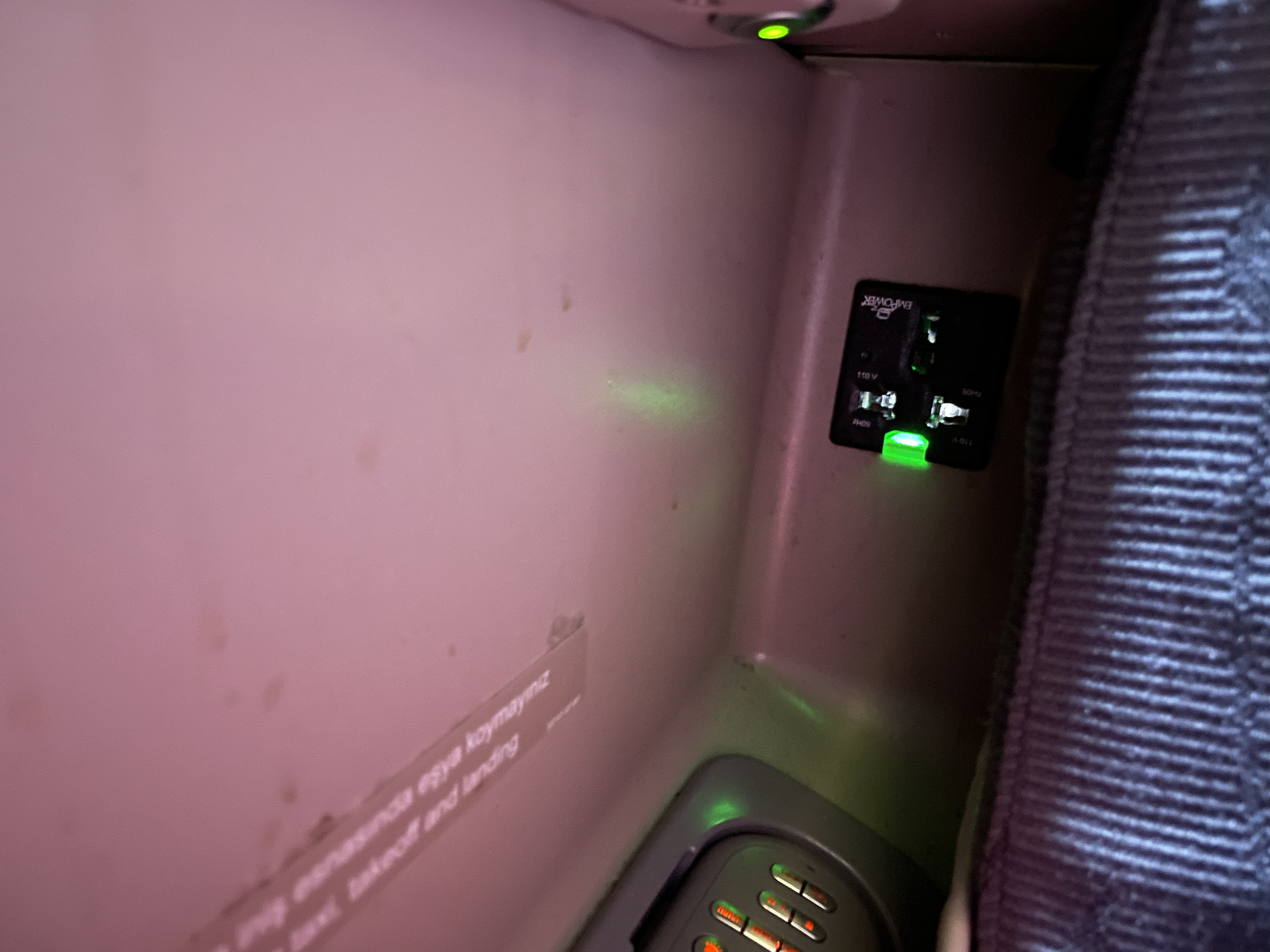
Turkish Airlines 777 Business Class Storage Pocket
Lastly, there were two reading lights in between seats (is that pattern meant to remind me about the lack of a privacy divider, or…?).
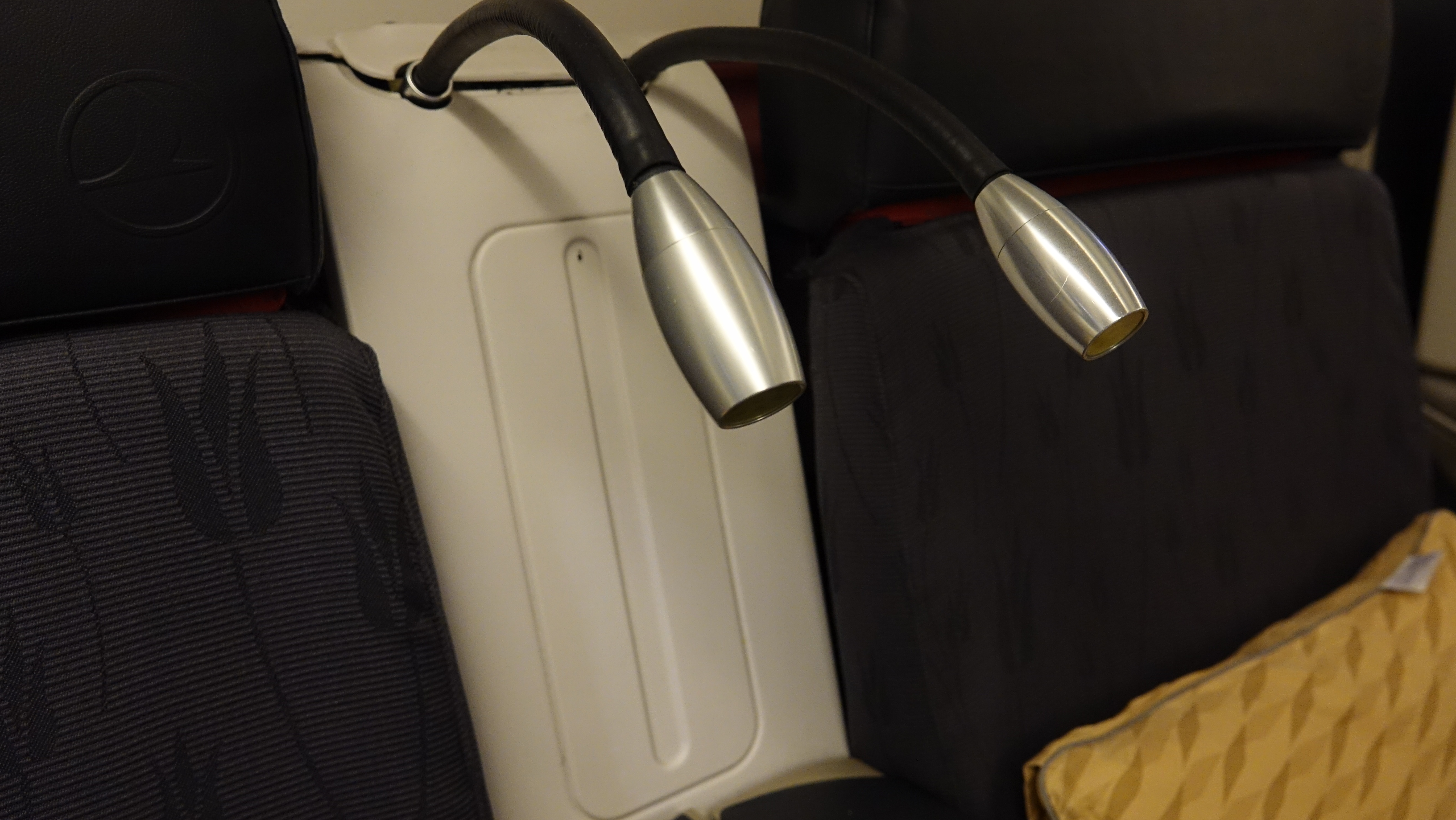
Turkish Airlines 777 Business Class Reading Light
I’d observe that the overhead bin space above seats 7J and 7K are occupied by mattress pads and duvets, so I had to share overhead bin space with the passenger across the aisle.
This isn’t the most modern business class seat out there, and in fact even Turkish’s newer 777s have these seats beat. There’s no denying that I’d absolutely hate to pay a full-fare business class cabin, especially on a last-minute ticket, only to be stuck in a middle seat. While I minded this seat significantly less since I had an empty seat next to me, in terms of an objective evaluation I’ve got to say that the seat is subpar. Thankfully Turkish introduced a new business class seat in 2019, and actually flies an even newer enclosed-suite business class seat these days, as they inherited some A350s from Aeroflot.
That being said, I’d pick this seat any day over Qatar Airways’ old 777 business class, Korean Air’s business class, or Emirates’ 777 business class. The seats on this Turkish Airlines aircraft were manufactured by Safran and are called Aura Lite seats, featuring on Turkish, Ethiopian, Kenya Airways, LATAM, etc. – Turkish’s newer 777 seats are an updated model called called “Aura Enhanced” (which I believe I’ve flown on LATAM before). I found these seats to be 10x more comfortable than the B/E Minipod seat, found on Qatar Airways, Korean Air, Emirates, etc., as they had so much better padding, and were sturdier and less lumpy, especially in bed mode – I’ll elaborate further below.
Turkish Airlines’ 777 Economy Class Cabin
Since I was first onboard and seated in the last row, I had the chance to peek at Turkish’s colourful economy class cabin. The seats looked comfortable, and more than anything I appreciated the spacious 3-3-3 configuration, which is no longer the industry standard on 777s. This is a very standard older-generation economy class seat that you’ll find on many airlines, including Thai Airways.
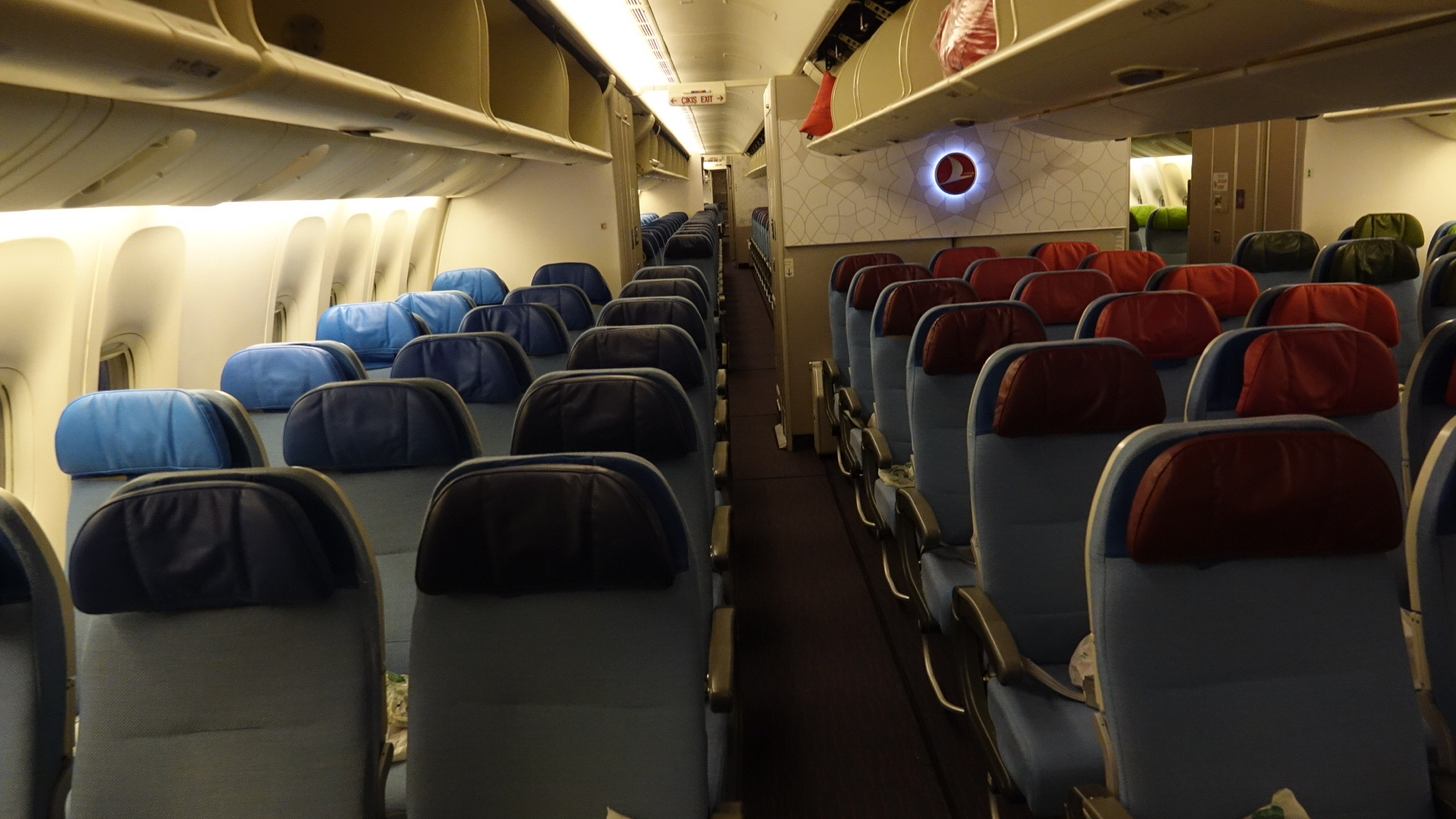
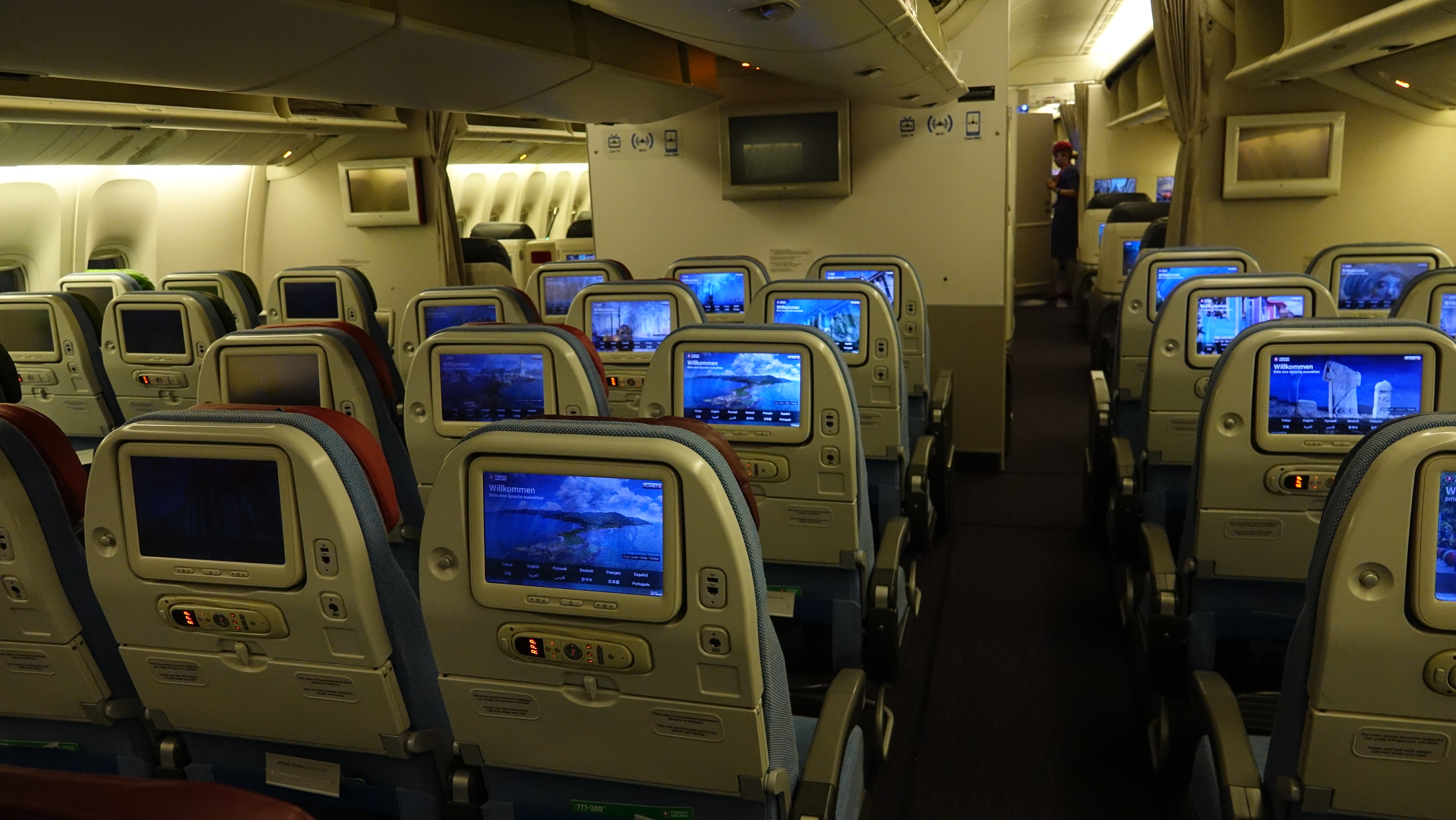
Turkish Airlines 777 Economy Class Cabin
Turkish Airlines’ 777 Business Class Amenities
Back at my business class seat, I explored the amenities that were provided at my seat. On the ottoman in front of me was a pair of slippers, which I found really handy, as I could use the lavatory without having to put my shoes on.
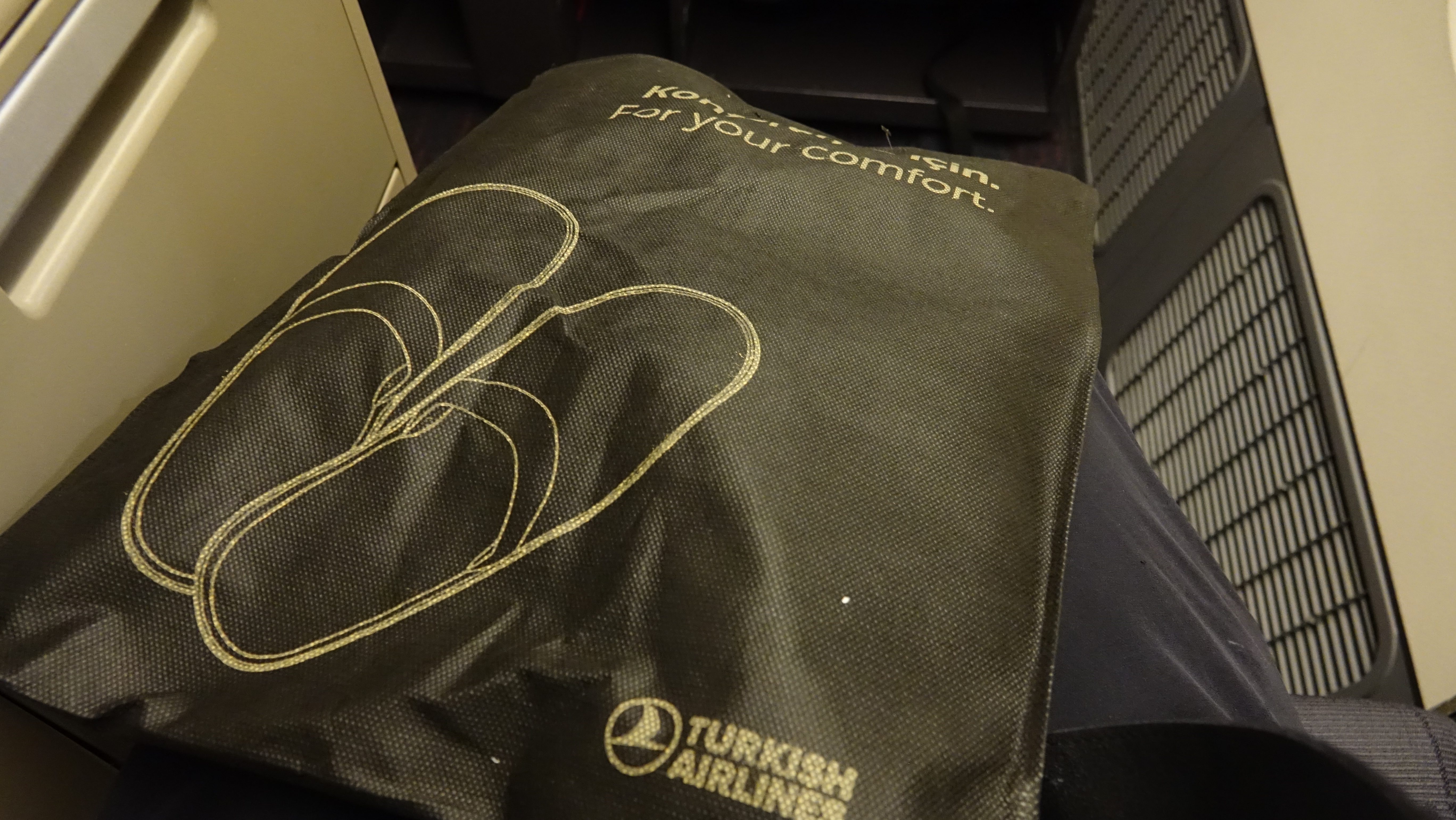
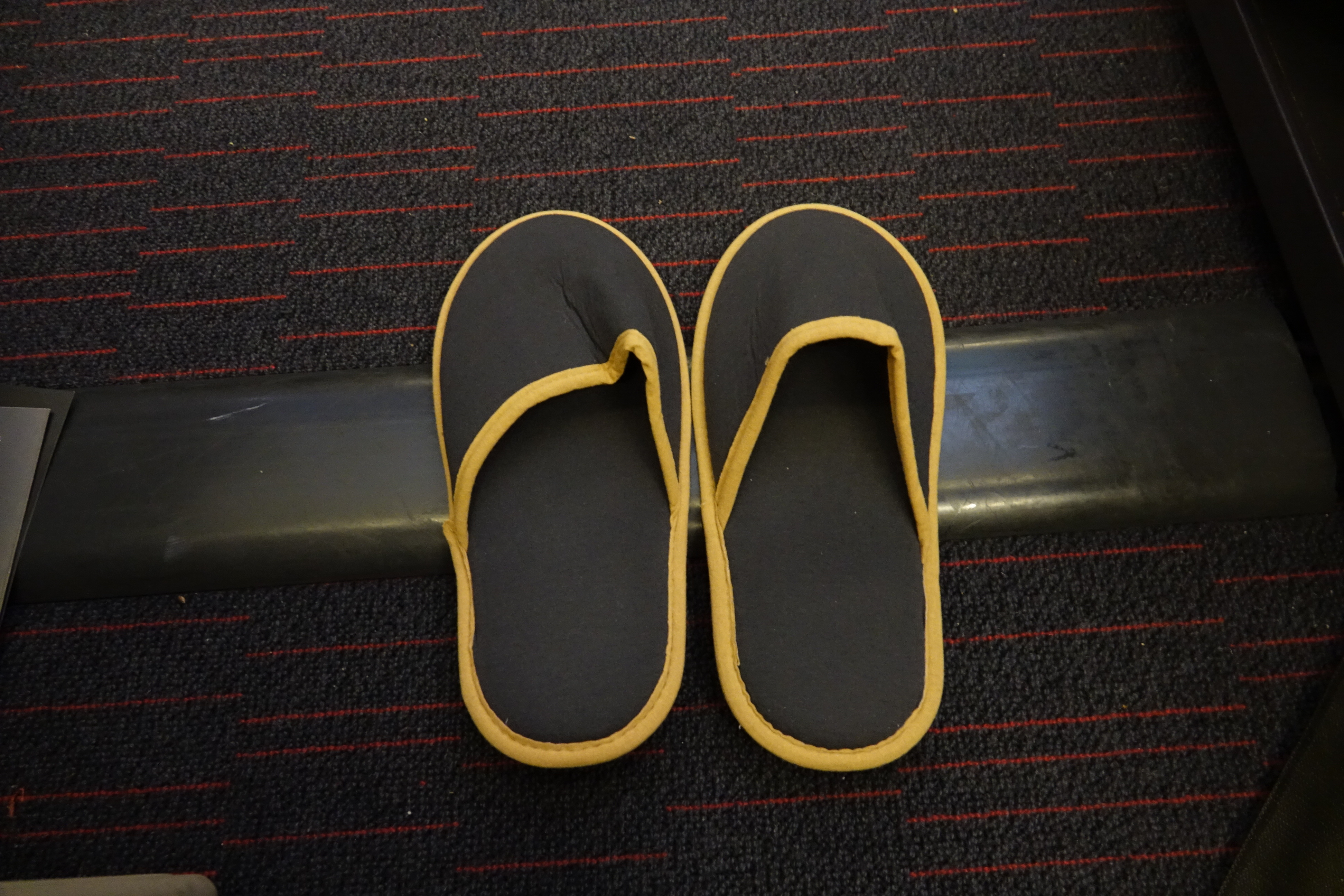
Turkish Airlines 777 Business Class Slippers
There was also a wrapped blanket (a more substantial duvet was provided inflight).
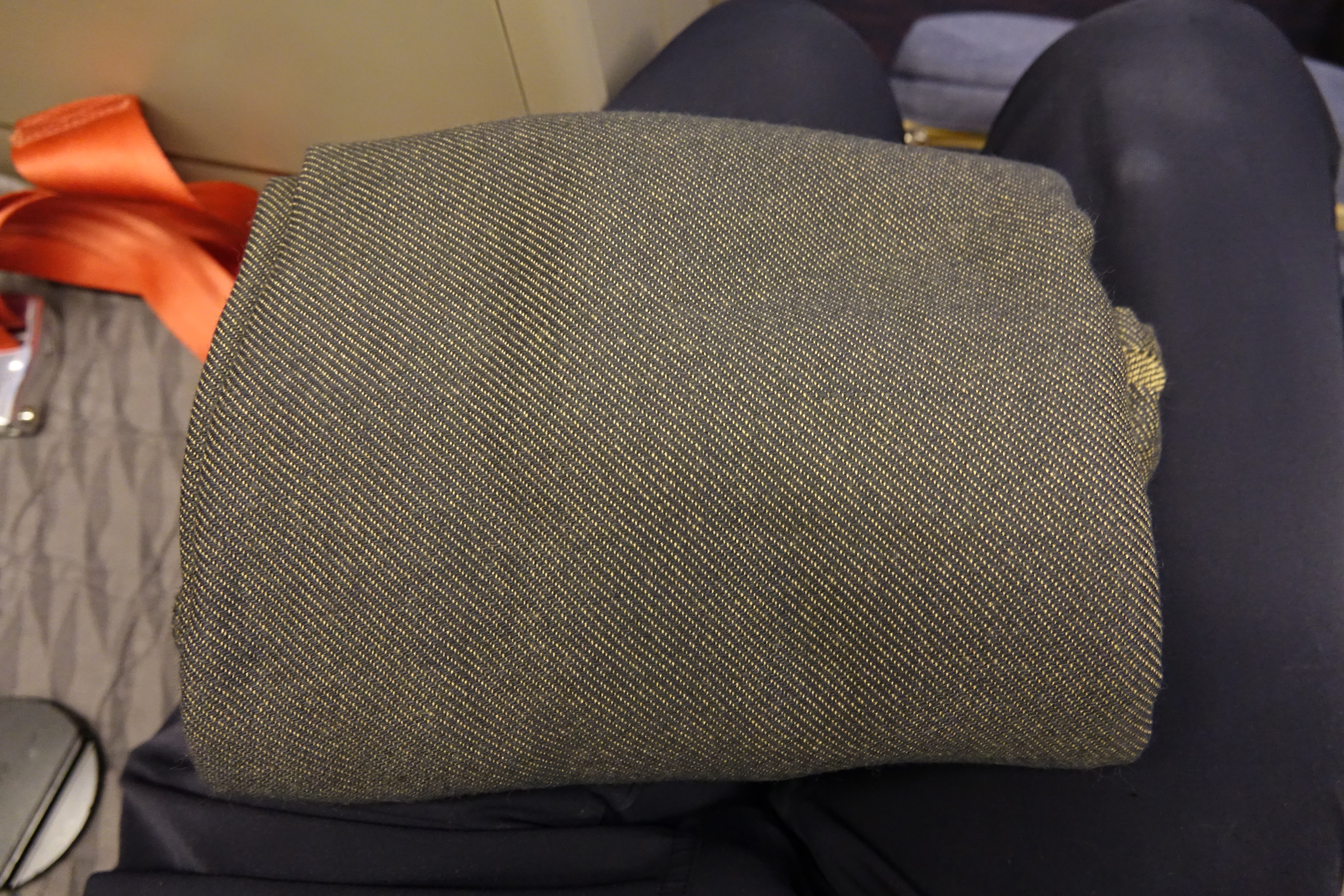
Turkish Airlines 777 Business Class Day Blanket
After takeoff, the crew came around with amenity kits, provided by Hackett. The amenity kit featured eyeshades, earplugs, fluffy socks, and amenities from Qiriness – more than anything, I appreciated the bag that it came in.
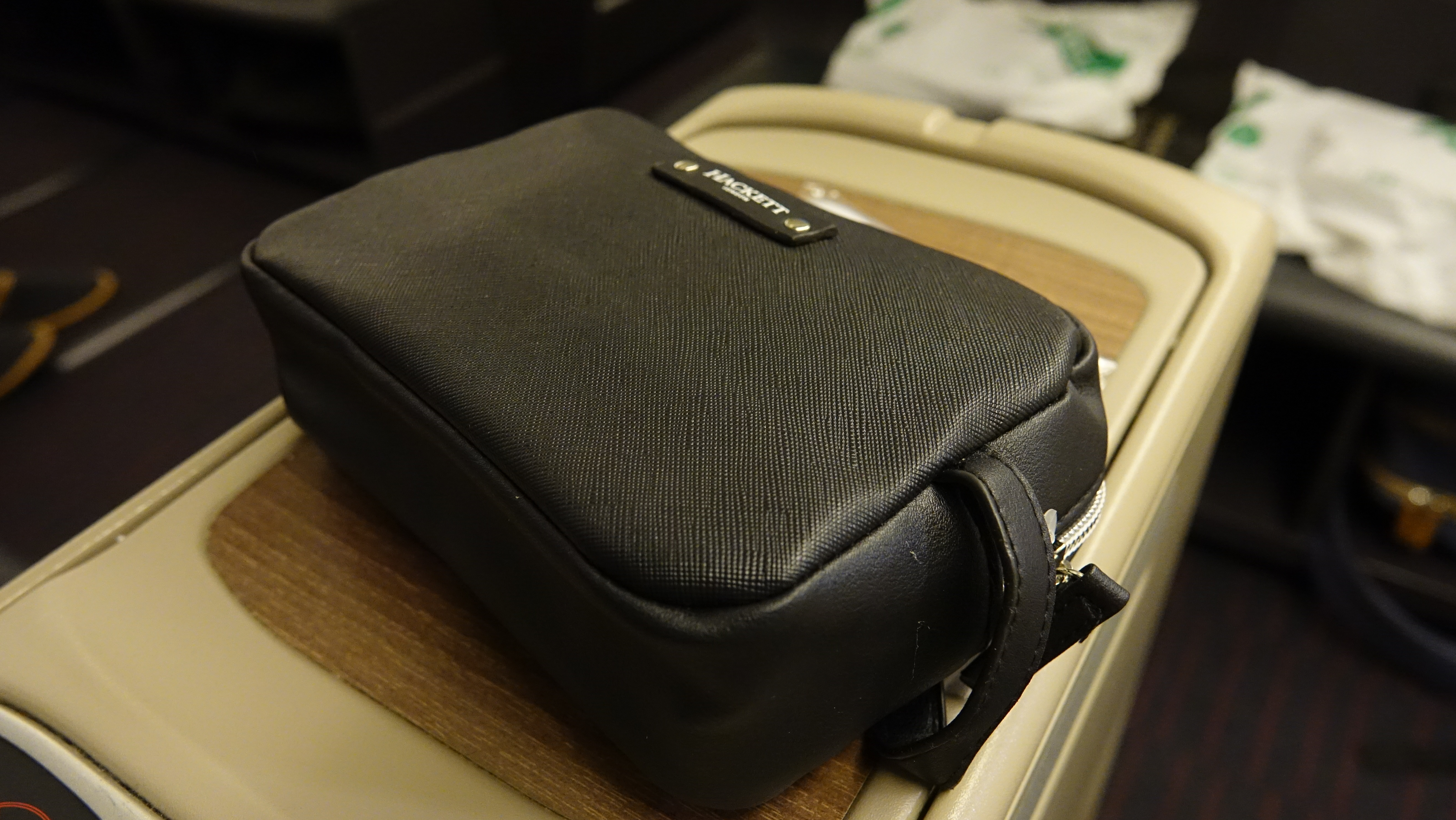
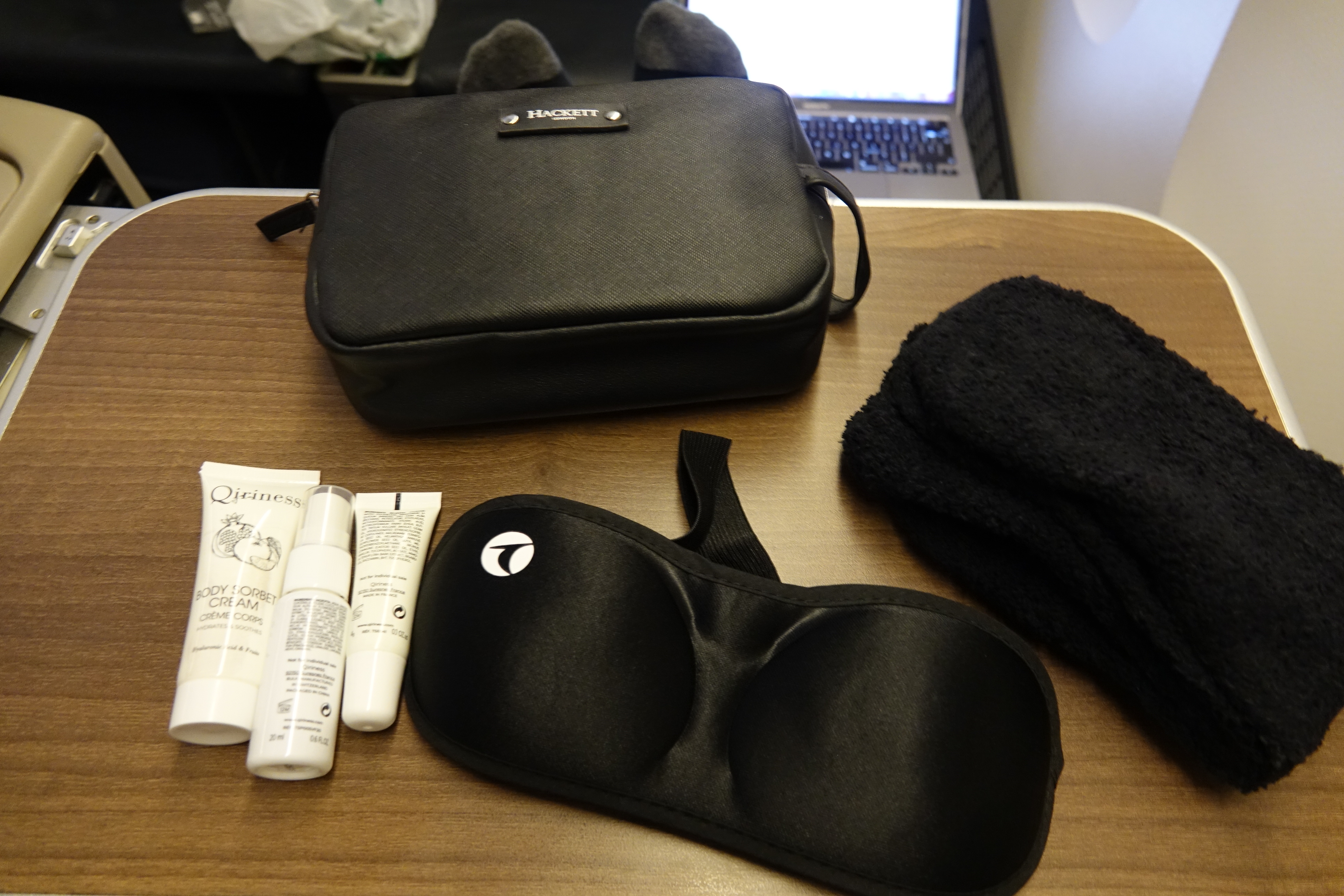
Turkish Airlines 777 Business Class Amenity Kit
Shortly after boarding was completed, the crew came around to pass out Denon noise-cancelling headphones. I found these to be very high quality, which was a very pleasant surprise.
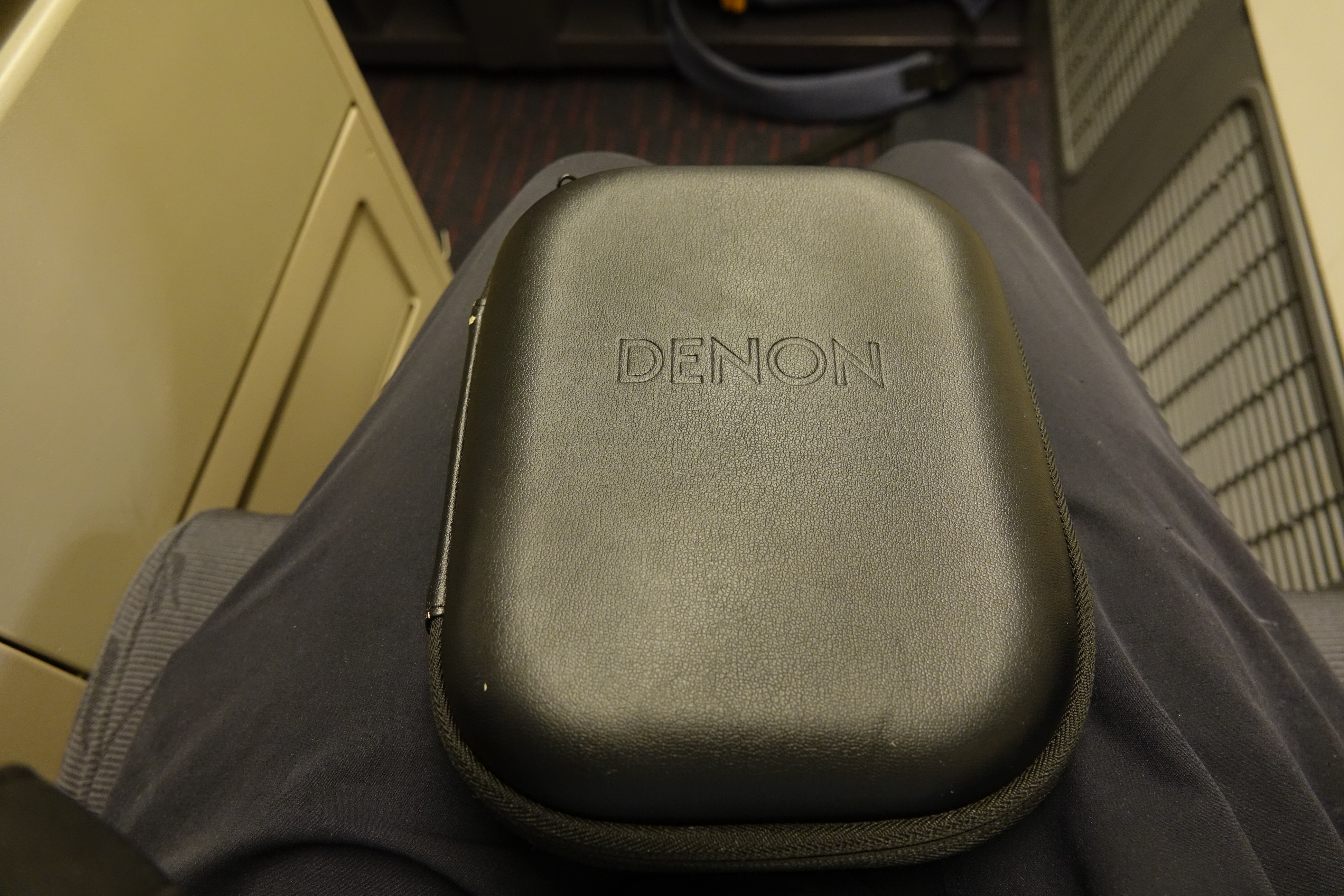
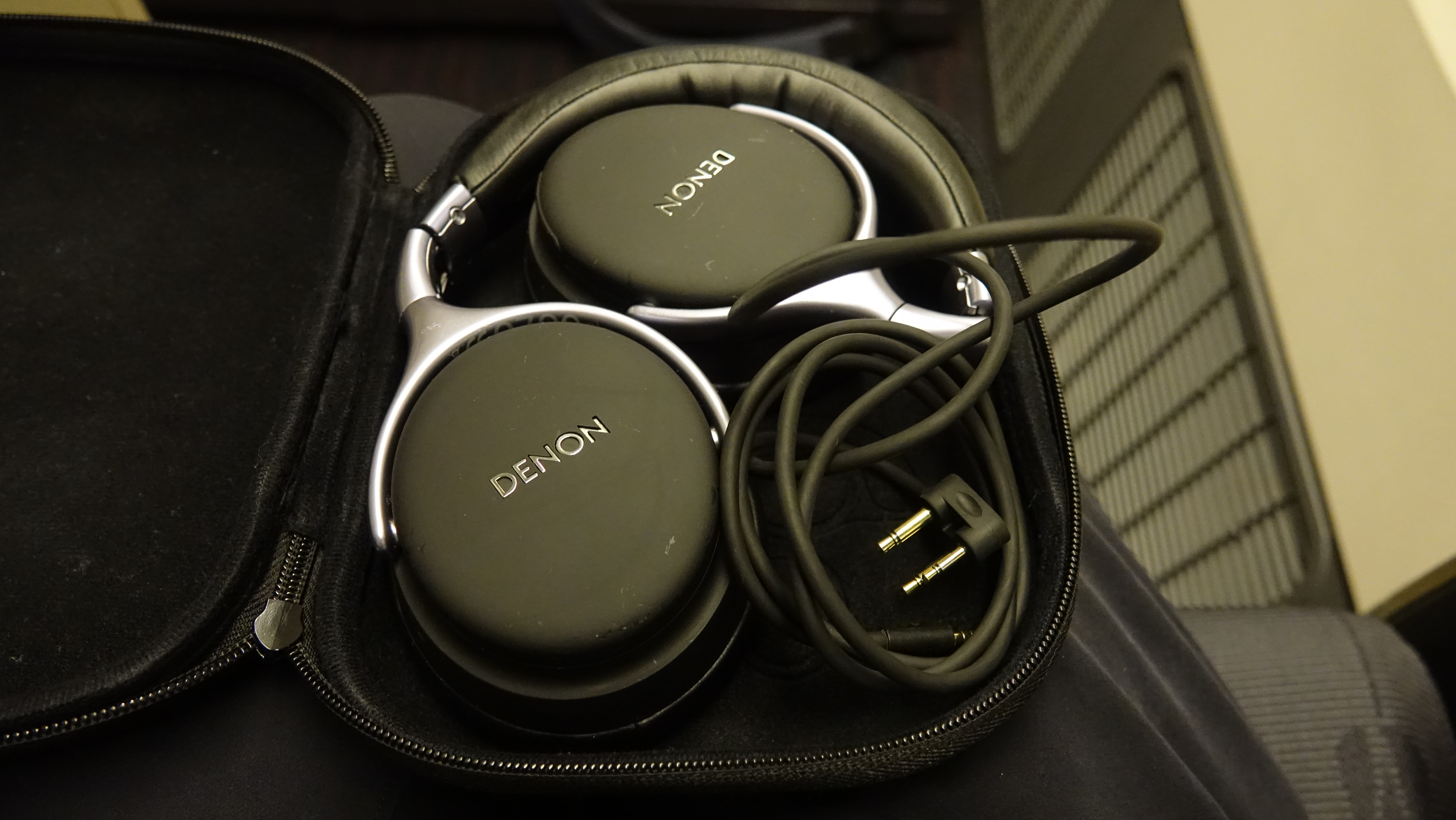
Turkish Airlines 777 Business Class Noise Cancelling Headphones
However, the Denon headphones were confiscated about 45 minutes prior to landing (presumably to prevent any sticky-fingered passengers from taking them off the plane), and we were given a much lower-quality set, presumably similar to those that you’d be given in economy.
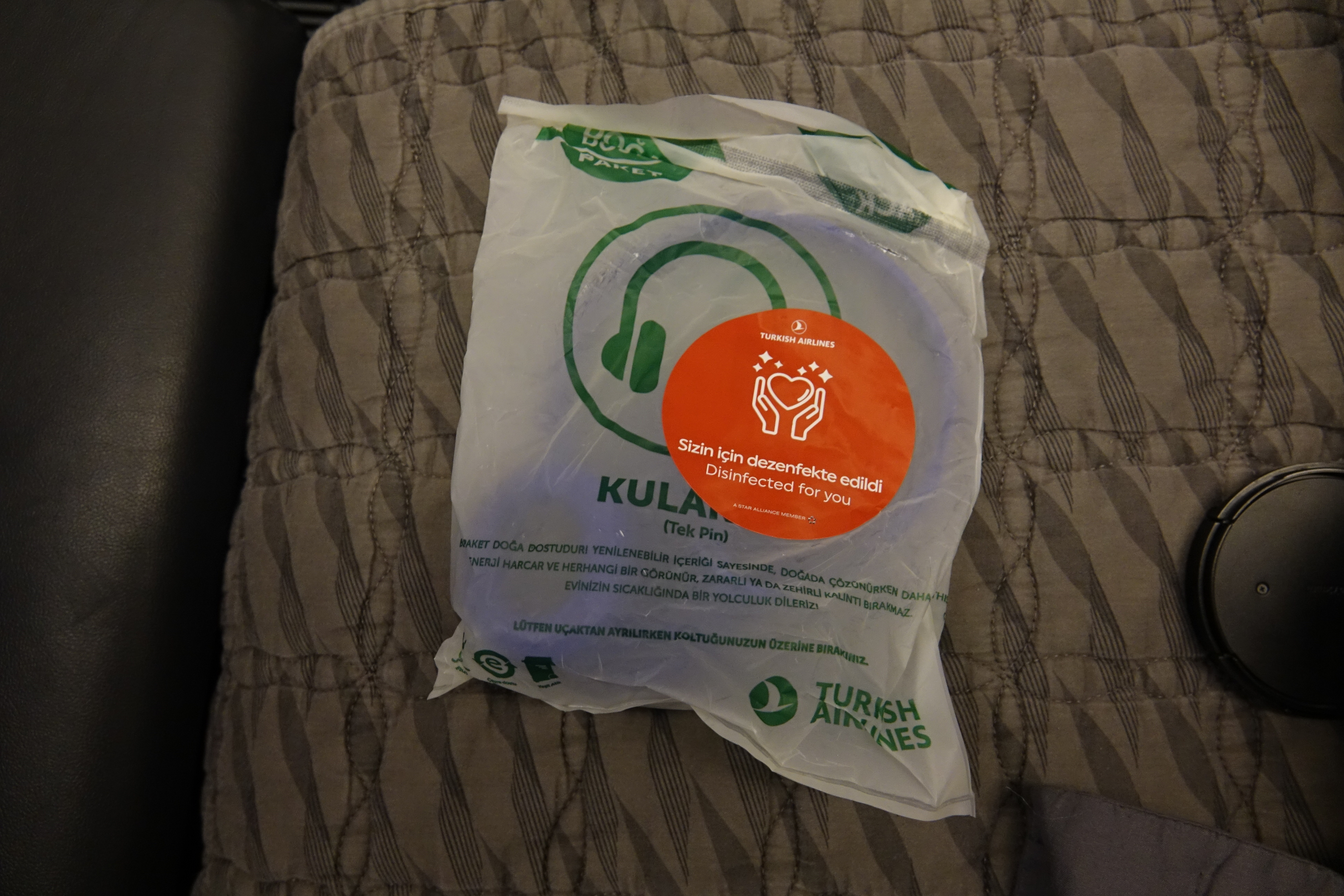
Turkish Airlines 777 Business Class Pre-Landing Headphones
A pillow was also provided at the seat, and a mattress pad and duvet were given during turndown service after takeoff. I’ll elaborate more on these when I review the seat’s comfort in bed mode.
Overall the amenities were probably the most impressive part of Turkish Airlines’ business class product for me, and I found them to be industry leading. Not only did I appreciate the mattress pad, slippers and day blanket, but I also found everything to be very high quality.
Turkish Airlines’ 777 Business Class Pre-Departure Service
Once again, being in the last row on the right hand side, I was the last passenger to be served (I didn’t mind this, as it gave me a better indication of how long service generally took). 15 minutes after boarding began, I was presented with a welcome drink, and this time selected lemon and mint juice. Once again, despite being the last person to be served, I could choose between all options, the other of which were orange juice, raspberry lemonade, and water.
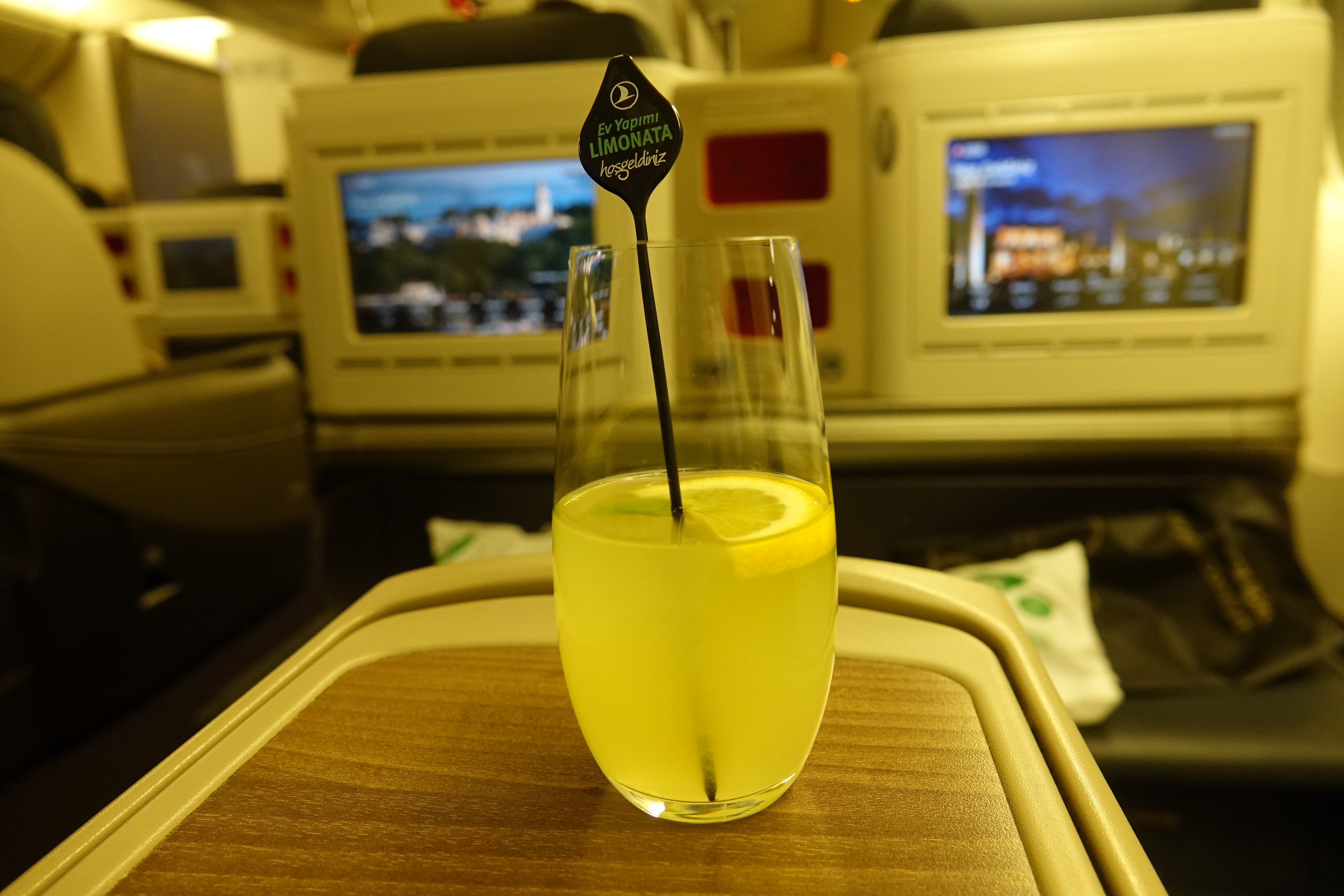
Turkish Airlines 777 Business Class Pre-Departure Beverage
A crewmember came by on separate occasions with headphones and an amenity kit, and on another pass an onboard chef (the main differentiator between him and the other cabin crew was that he was in a chef’s outfit) presented me with a menu.
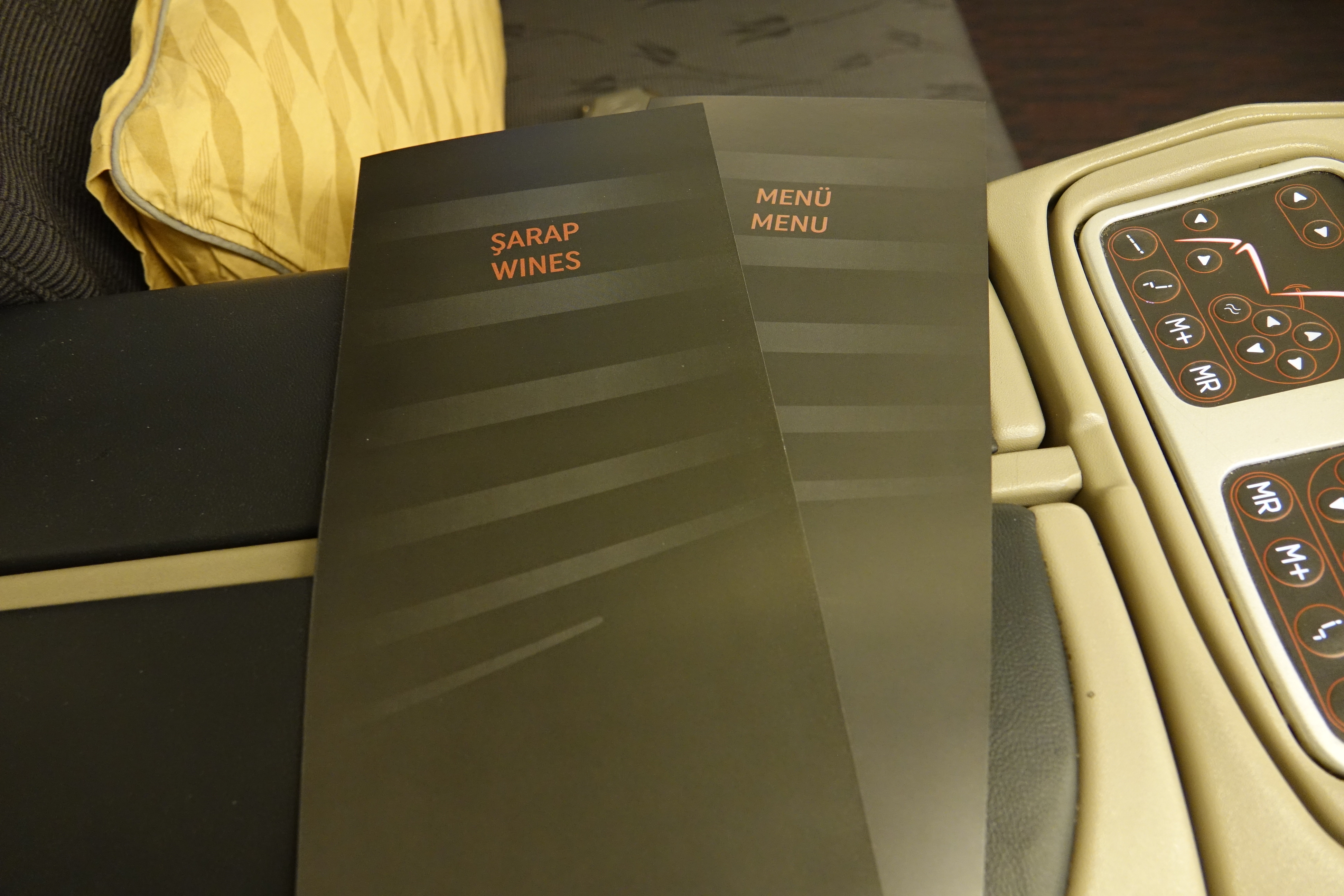
Turkish Airlines 777 Business Class Menu
It’s worth noting that Turkish Airlines theoretically lets you pick your main course in advance, though I couldn’t get my selection to save prior to my flight. Unlike some other airlines’ pre-flight meal selection services, there weren’t any extra options to select online compared to what was on offer onboard.
Takeoff from Istanbul Airport
Boarding was completed at about 2:50 AM, 40 minutes after our scheduled departure time and 20 minutes after our updated post-delay departure time. According to a conversation with a flight attendant later during the flight, there were 10 empty seats on this 349-seater aircraft, one of which was the seat next to me. The middle seat in my row was also empty, and the middle and right center aisle seats in the row in front were also empty (these seats were helpful to me inflight, since my power ports were all broken). The forward business class cabin was completely full, which meant that the remaining six free seats were in economy. The same crewmember also let me know that the Istanbul-Hong Kong flight was generally very packed (this flight was taken shortly after Hong Kong reduced their hotel quarantine duration to three days), and they were looking at a full inbound flight on the following day.
The (Turkish) captain came onto the PA to announce our flight time of 10 hours, our flying altitude of 35,000 feet, and our route over Turkey, Iran, Pakistan, India, Bangladesh, Myanmar, and China (which I thought was super cool). The captain also mentioned Hong Kong’s temperature (I didn’t note it down, but it was rather warm).
The safety video was played, once in Turkish, then once in English.
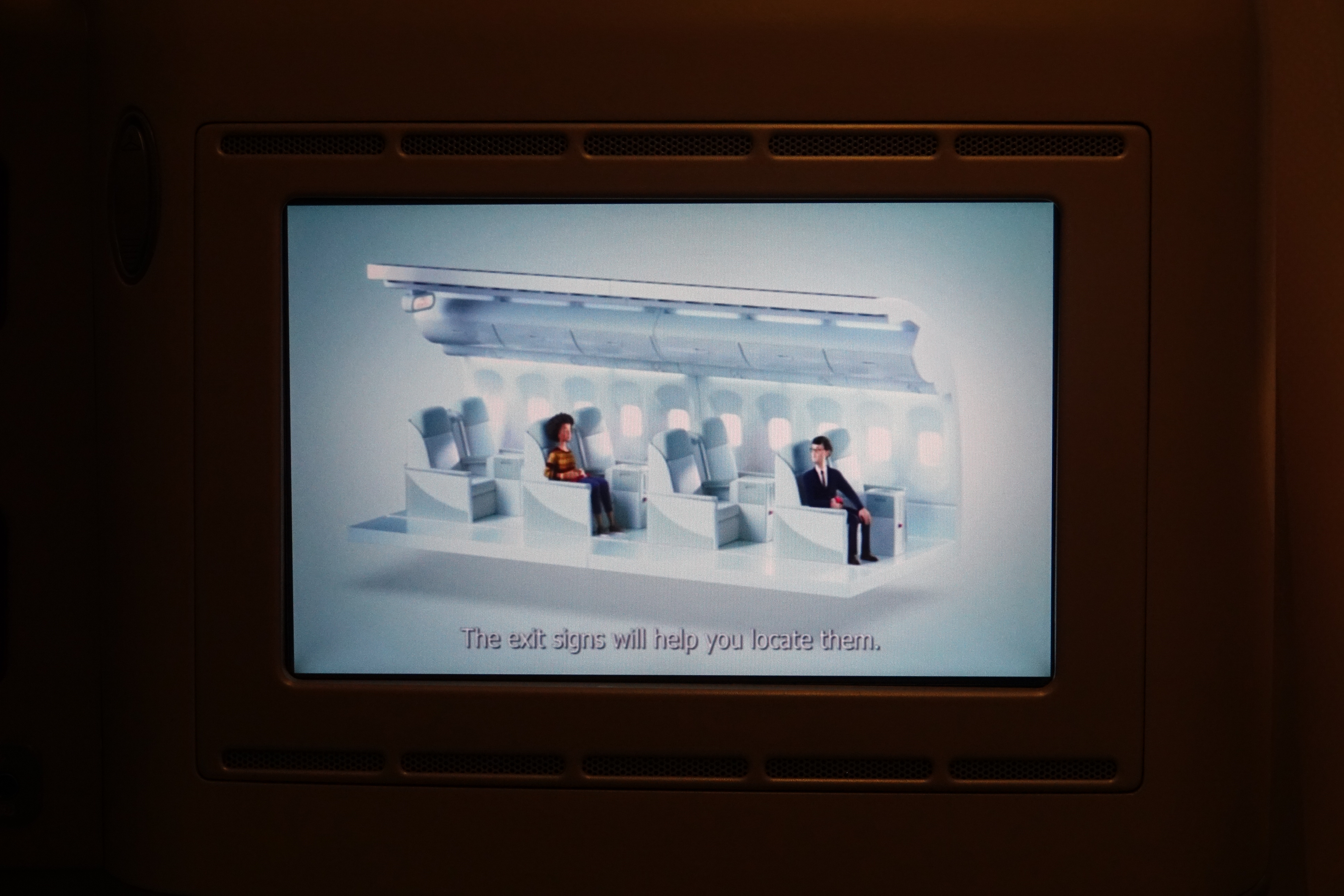
Turkish Airlines 777 Business Class Safety Video
We pushed back at 2:55 AM, where I had a better glimpse of the Lufthansa A321 parked next to us. The most exciting aircraft we passed was probably an Aeroflot 777 (for all the wrong reasons, unfortunately), given how rare it is to see Aeroflot aircraft around as of late.
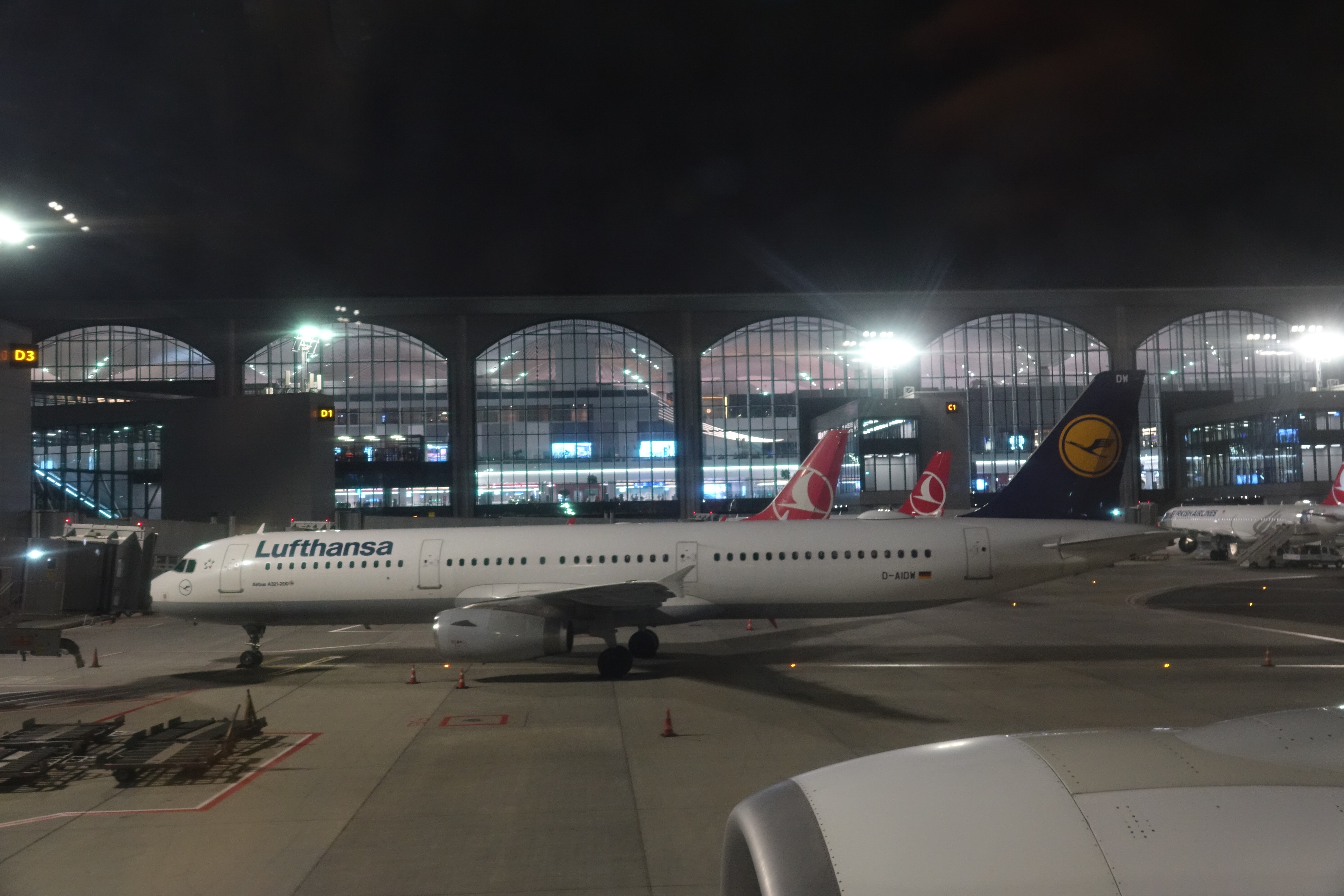
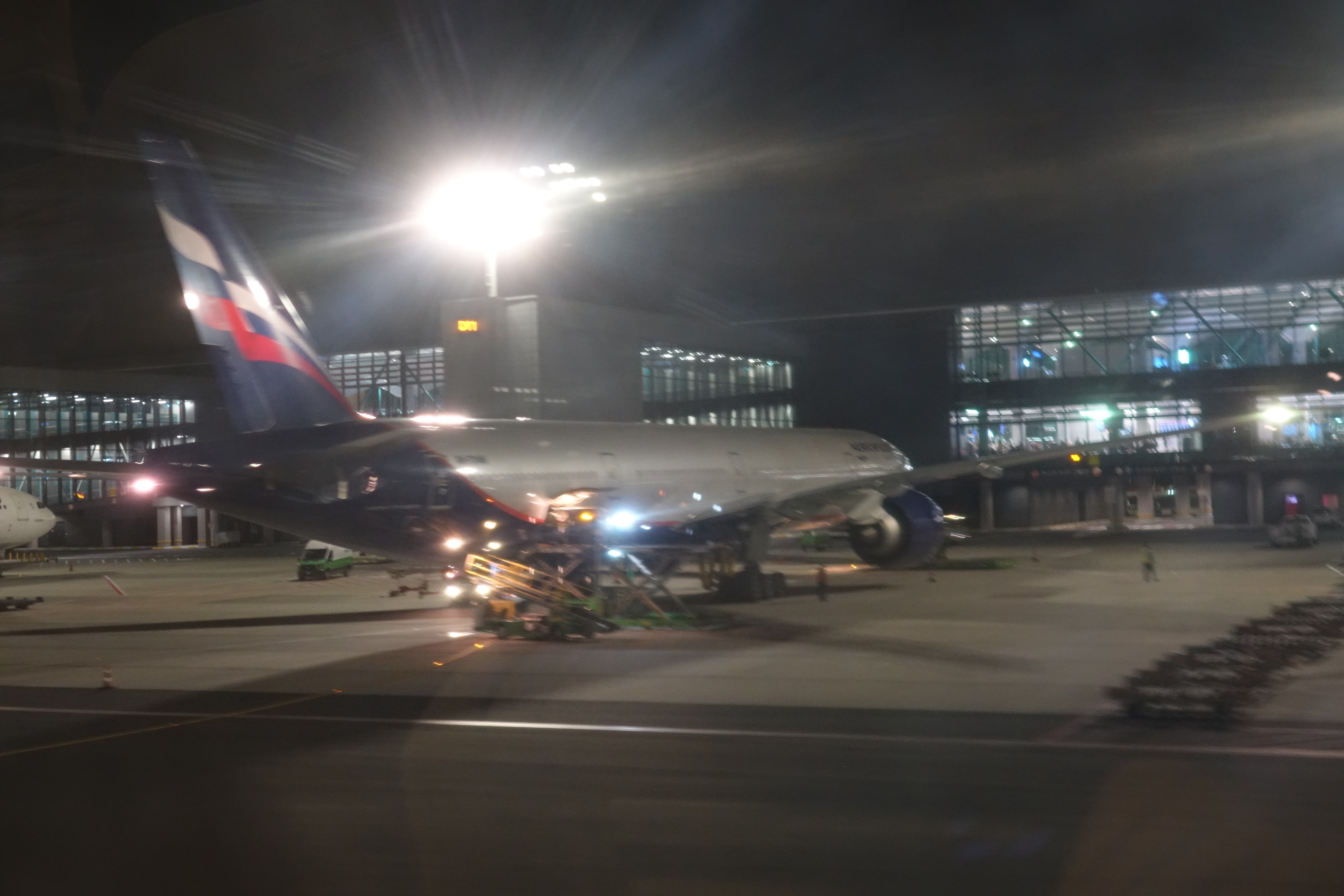
Taxiing at Istanbul Airport
Our taxi to the runway took 15 minutes, and didn’t feel as long as our taxi in on my previous flight (presumably because we were going at a much slower speed). Finally we got to runway 35L at 3:10 AM, where we prepared for departure.
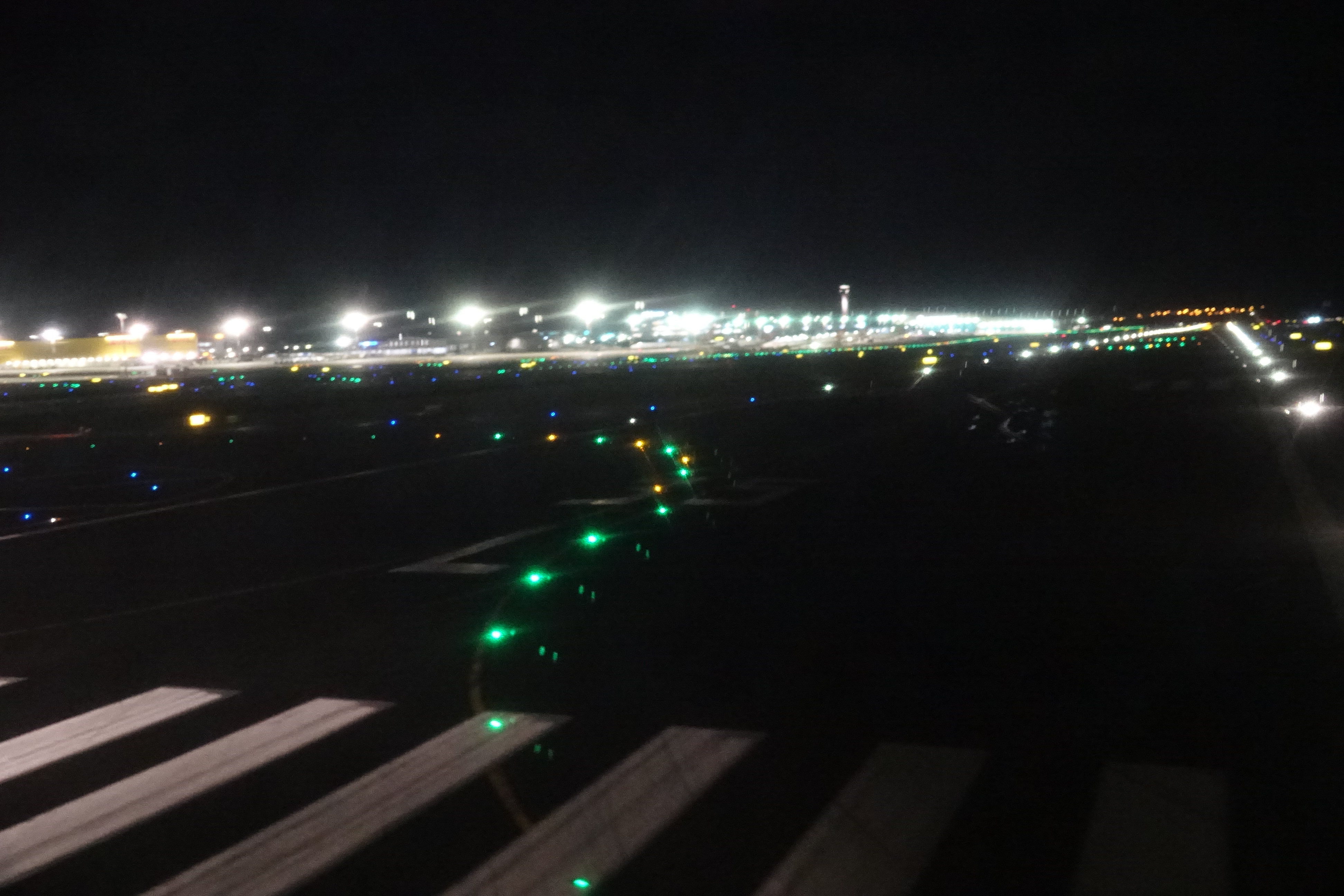
Taking Off at Istanbul Airport
Our departure roll was one of the weakest ones I’ve experienced in recent history, presumably as it’s been a while since I’ve been on such a full flight.
Turkish Airlines’ 777 Business Class WiFi
The airport’s WiFi stopped working at some point on my phone and I was having trouble using roaming services in Turkey, so I was especially looking forward to connecting to WiFi on this flight (especially since I was mid-text conversation with my parents).
One of the USPs of flying Turkish Airlines business class is that they offer 1 GB of free WiFi to business class passengers. Turkish used to offer unlimited WiFi for all passengers, so this seems stingier, at least on the surface; however, Turkish’s WiFi was renownedly unusable before they started charging for it, due to how much bandwidth was stretched out. Also, even after this flight I’d used less than half of my allowance, and I use a lot of data.
Although the system suggests I could only connect one device at a time, I was able to connect two devices at once by entering my ticket number on one device and my seat number and last name on the other (the data allowance totals 1 GB from both devices, so I don’t think I was cheating the system).
The allocation of data varies both by class of service and elite status:
- Business class passengers with Miles & Smiles elite status get unlimited free WiFi
- Business class passengers get 1 GB of free WiFi
- Economy class passengers with Miles & Smiles elite status get 400 MB of free WiFi
- Economy class passengers with a Miles & Smiles account get 10 MB of free WiFi (at that point, why bother?)
If you’re flying economy class without a Turkish Airlines frequent flyer account and/or you’ve used up your allowance, the pricing is as follows:
- 20 MB of WiFi costs US$2.99
- 50 MB of WiFi costs US$4.99
- 100 MB of WiFi costs US$7.99
- 250 MB of WiFi costs US$14.99
- 500 MB of WiFi costs US$24.99
This pricing is just about standard for airline WiFi – while it’s annoying that Turkish Airlines prices WiFi based on data usage, at least 500 MB (or 1 GB, for that matter) is a decent amount of WiFi.
Speeds were good, but not amazing (I forgot to do a speed test on both of my flights) – the only issue was that the portal to purchase WiFi/enter my seat details would always take a while to load, and occasionally required reloading the page several times. WiFi worked for the entire time that the plane was at cruising altitude, and only cut off just ahead of our final descent.
Turkish Airlines’ 777 Business Class Bed
Around 30 minutes after takeoff, I was asked whether I wanted a mattress pad, and a flight attendant offered to install it onto my seat for me. Since I had two seats to myself, I obliged, thinking that I could use one seat for eating and working, and one for sleeping. A 2-3-2 configuration in business class isn’t ideal, though the appeal of this product increases significantly if you have an empty seat next to you (not that you should take this as a selling point, as an empty seat next to you isn’t ever guaranteed).
Turkish’s business class seat is extremely comfortable in bed mode, and that’s largely thanks to how sturdy the seat is. While some other forward facing business class seats are very poorly supported by the foot area, I could sit along any length of the seat without feeling like I was going to break it. I did feel like the seat angled upwards ever so slightly, which didn’t bother me, since it offset the aircraft’s slight pitch. I also felt like the seat was plenty wide. Obviously there’s a huge qualm here, which is that you’ll have to clamber over your seatmate if you ever want to leave your seat (this wasn’t an issue in my particular case).
The flight attendant put a mattress cover onto my seat, put a pillowcase on top of my pillow, and folded a duvet on top to finish. I enjoyed the fact that the mattress cover hugged the seatback, so it wouldn’t slide around while I was sleeping. I also liked that I had a fresh pillowcase, and it also felt soft and comfortable to rest my head on. Lastly, the blanket was also one of the better blankets I’ve had in the sky. The pillow itself was also firm enough to sleep comfortably on yet soft enough to sink my head in, and felt high-quality.
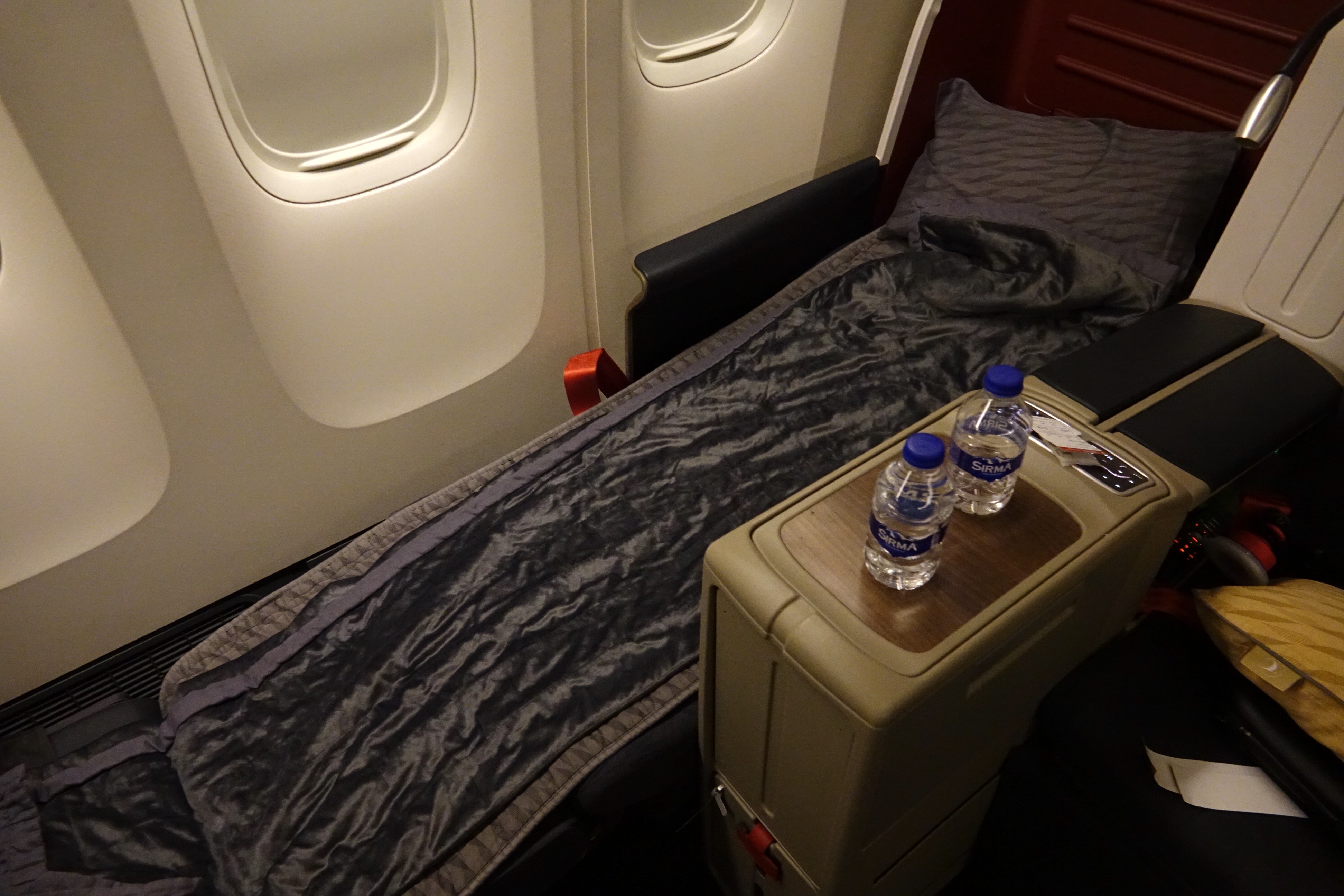
Turkish Airlines 777 Business Class Bed
Obviously the separate bed and desk/office space isn’t always included in your Turkish Airlines 777 business class ticket, though I wasn’t complaining…
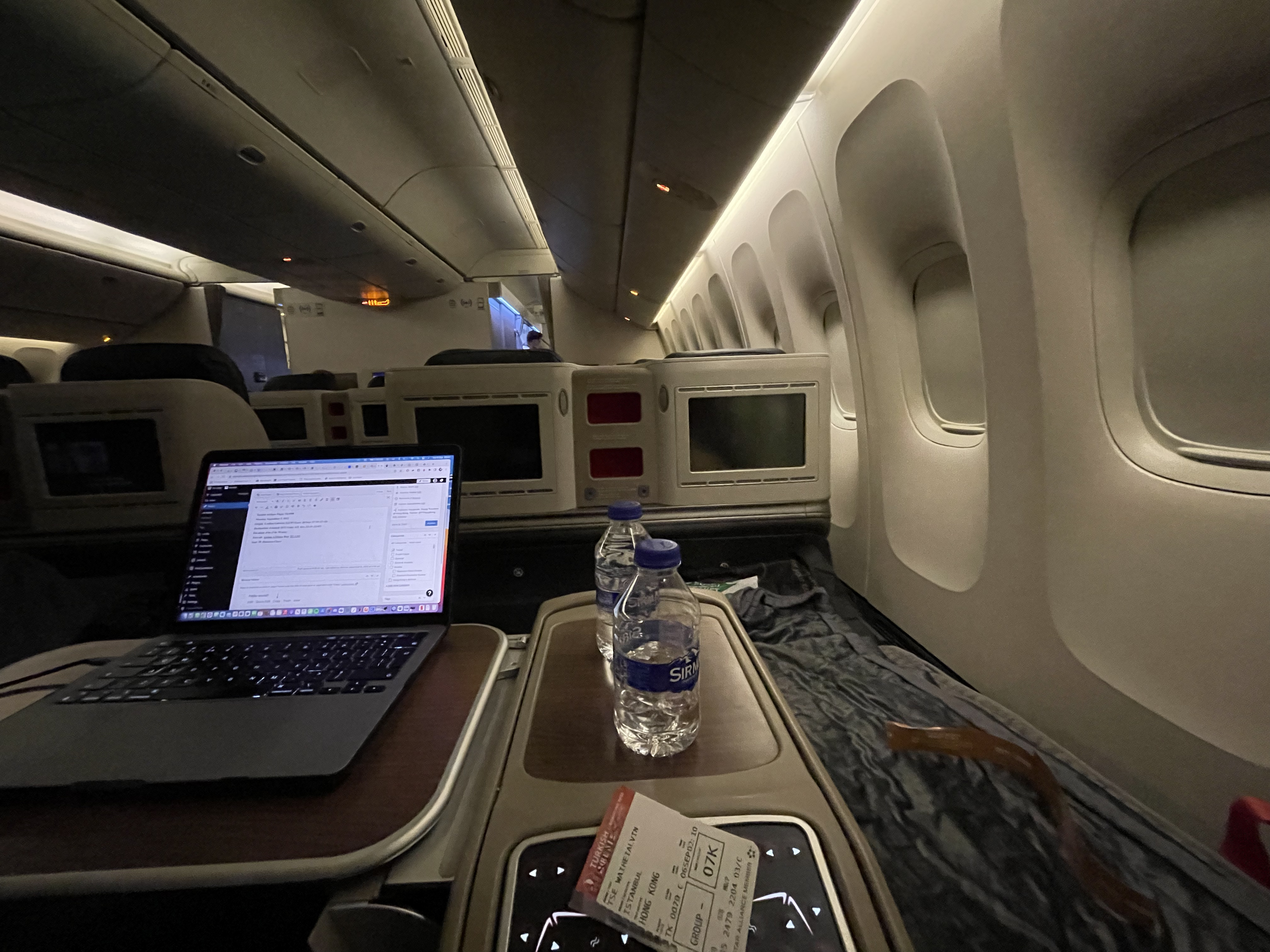
Turkish Airlines 777 Business Class Inflight Office
I was happy to have unrestrained space for my feet, and also liked the raised armrest privacy divider, even though it didn’t quite compare to the “real” privacy dividers that Turkish has on their newer 777s.
This is phenomenal bedding, in my opinion – I’d be careful to call it industry leading, since I know many airlines have upped their bedding game in recent history, but I was very impressed.
I slept very well in this seat, and was probably fast asleep for the entire time between meal services. I woke up feeling very refreshed (to a fault, since this didn’t help with jetlag).
Turkish Airlines’ 777 Business Class Post-Takeoff Meal Service
Turkish Airlines offers dine on demand in business class, but I never would’ve guessed according to how the cabin was served. In fact, I didn’t actually know that dine on demand was on offer until I read the menu at time of editing.
The menu, passed to me before takeoff, read as follows:
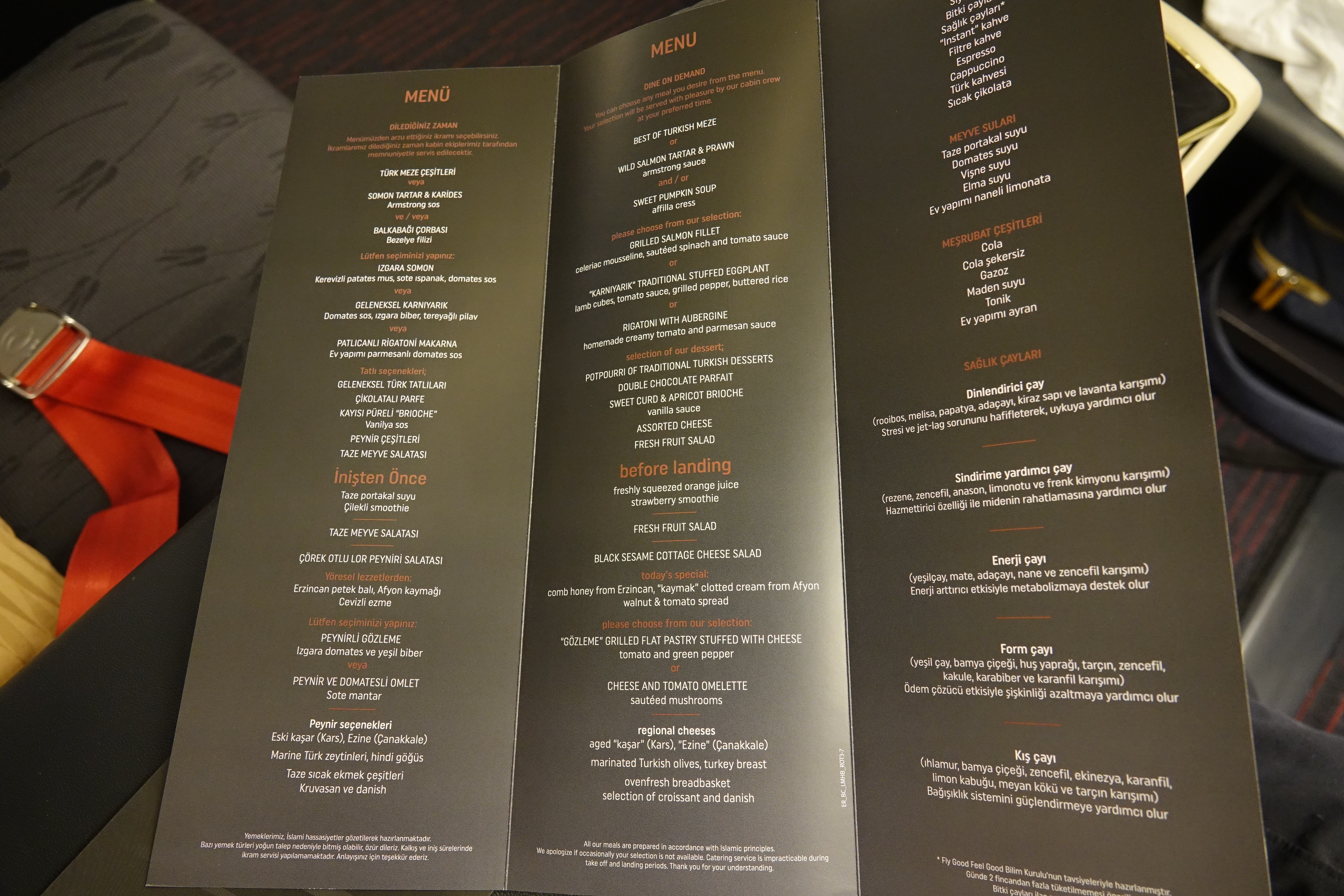
Turkish Airlines 777 Business Class Food Menu
The non-alcoholic beverage list came with the food menu, and read as follows:
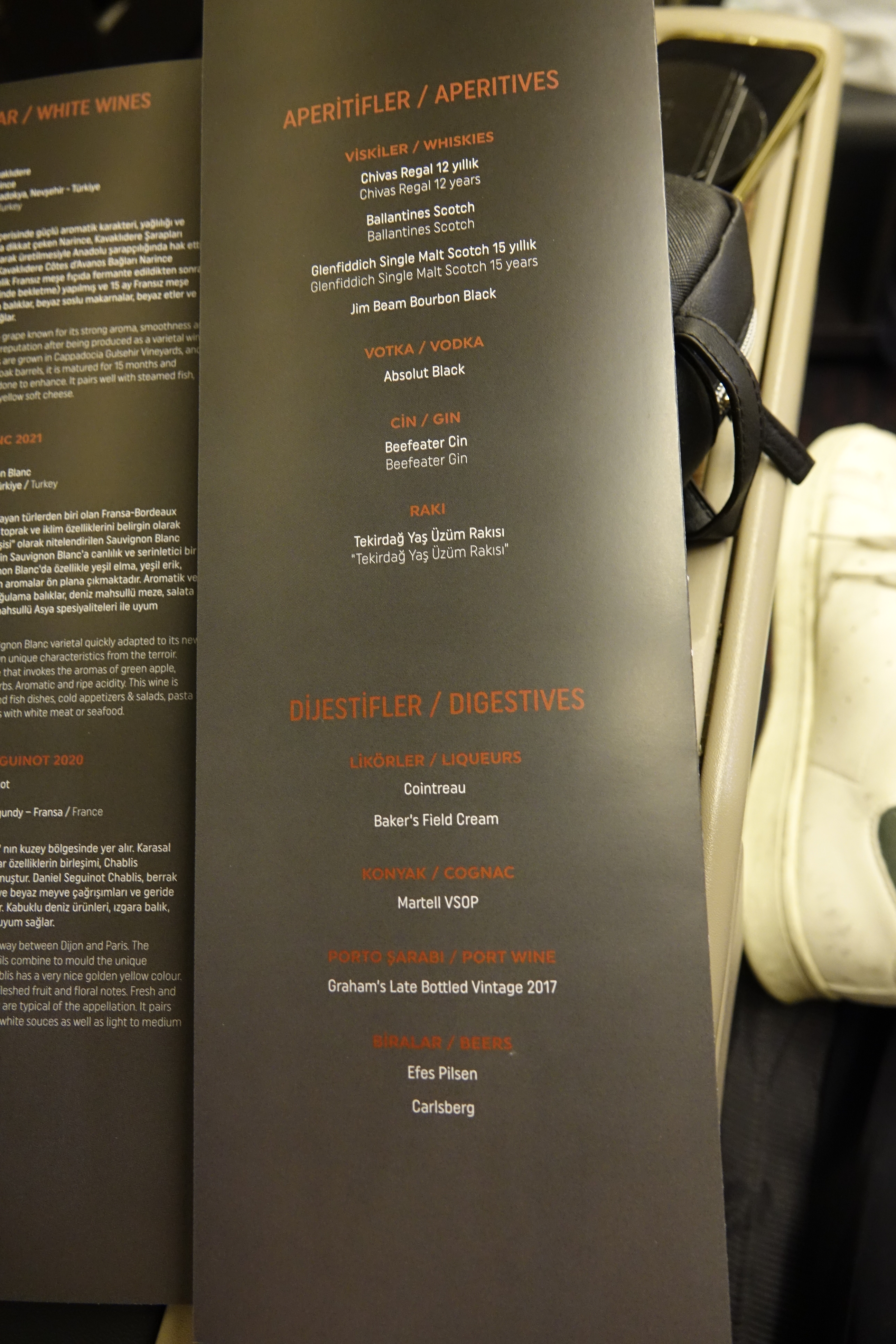
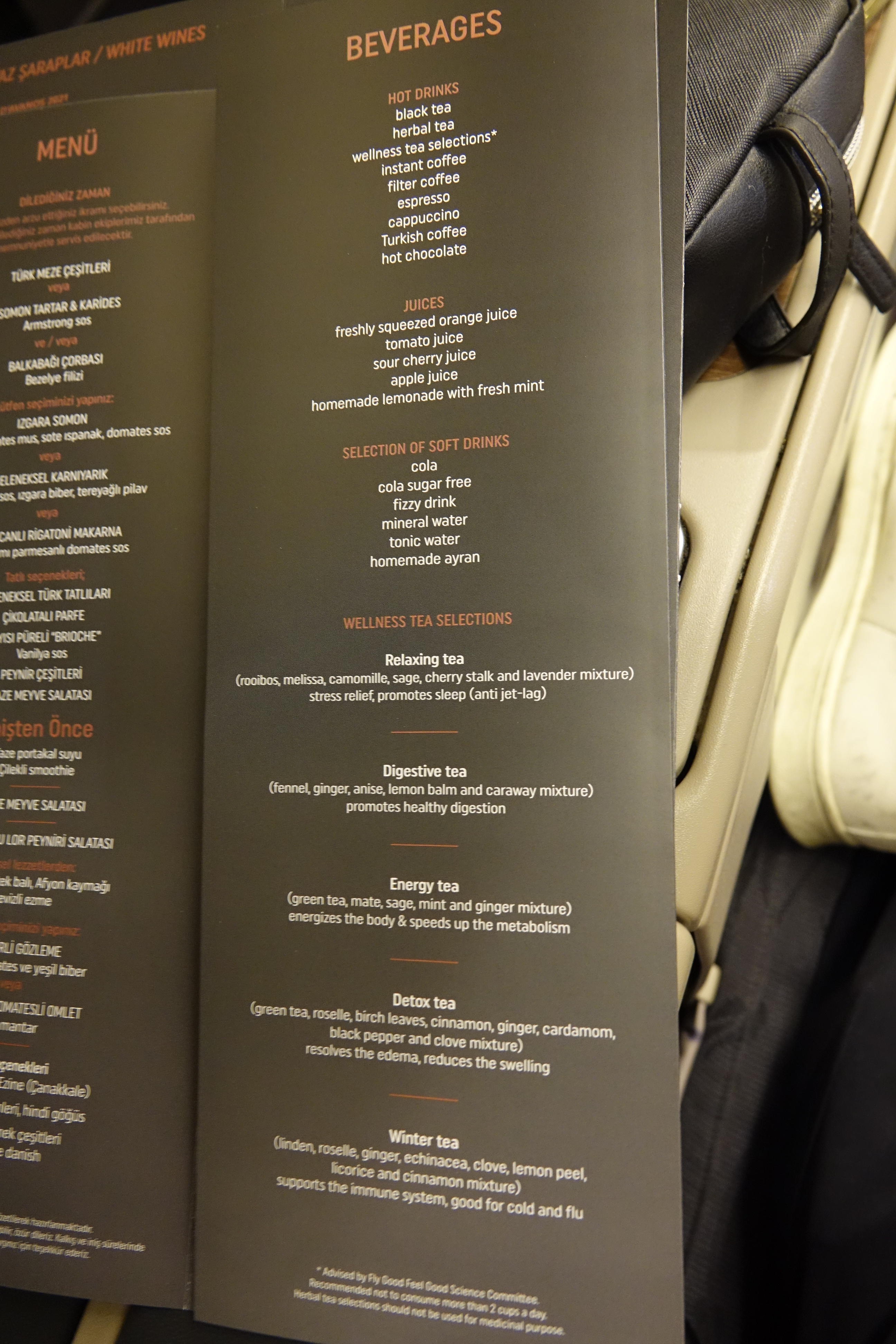
Turkish Airlines 777 Business Class Drinks Menu
Meanwhile the separate wine list read as follows:
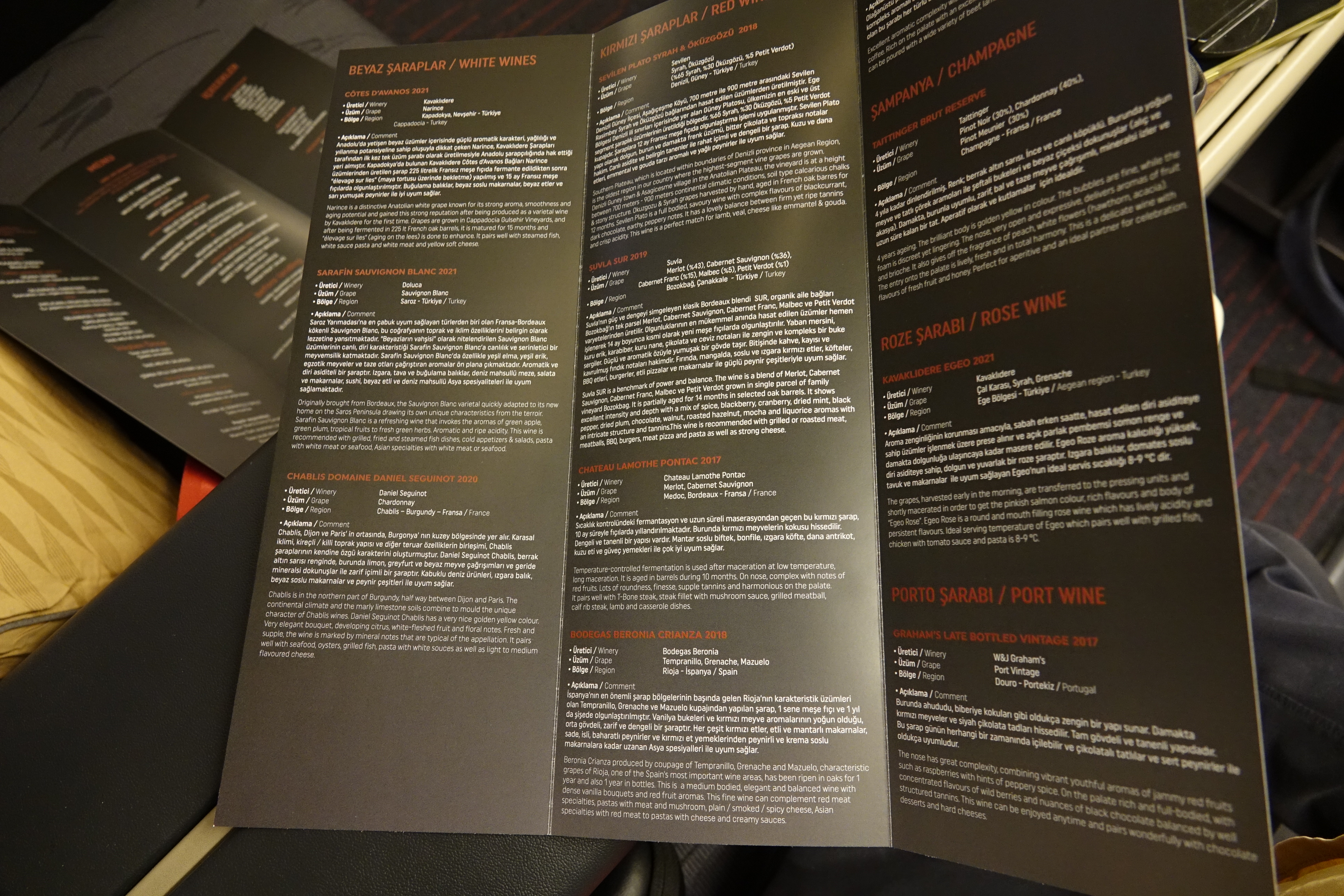
Turkish Airlines 777 Business Class Wine List
I was very excited for my first dining experience in Turkish Airlines’ longhaul business class, and the menu did look very appetising. I appreciated that there were options for my starter, main and dessert. I was also a big fan of the large array of non-alcoholic beverages available, as well as Turkish flair (from the wines, to the ayran, to the wellness teas), though did note the lack of cocktails.
15 minutes after takeoff the crew came around with hot towels, which were presented on a platter.
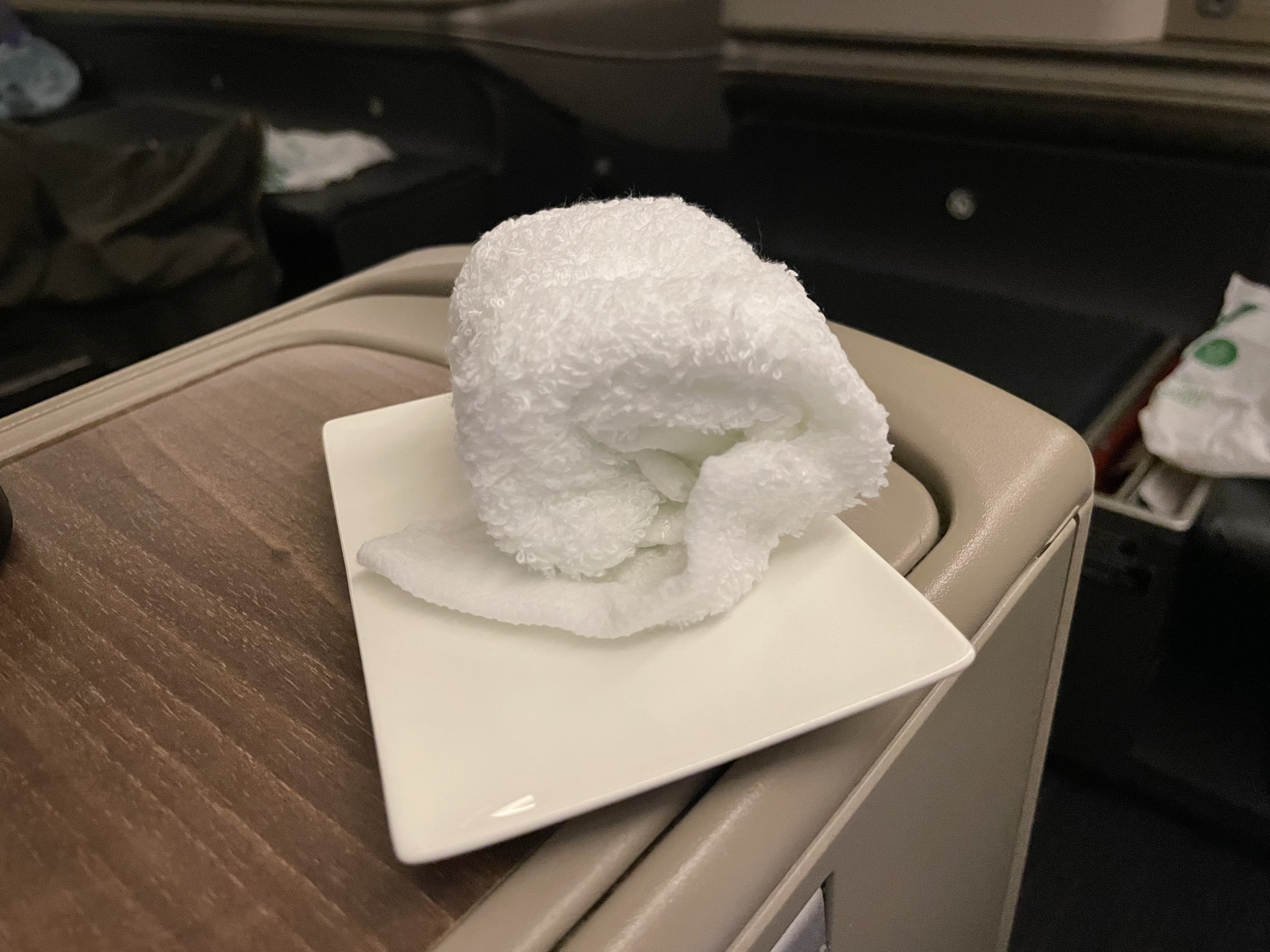
Turkish Airlines 777 Business Class Hot Towel
I was asked for my meal order by the onboard chef. I knew which main course option I wanted, though asked the chef for a wine recommendation to go with my main course – after a little back-and-forth due to a language barrier, he recommended me the Spanish wine on the menu (not the most Turkish thing I ordered on this flight, but…). I also tried to order my breakfast option early (since I knew what I wanted, and it looked very appetising), though I was asked to wait until the breakfast service.
Shortly after the crew came around with water. I was thirsty so asked if I could have two, and the flight attendant obliged.
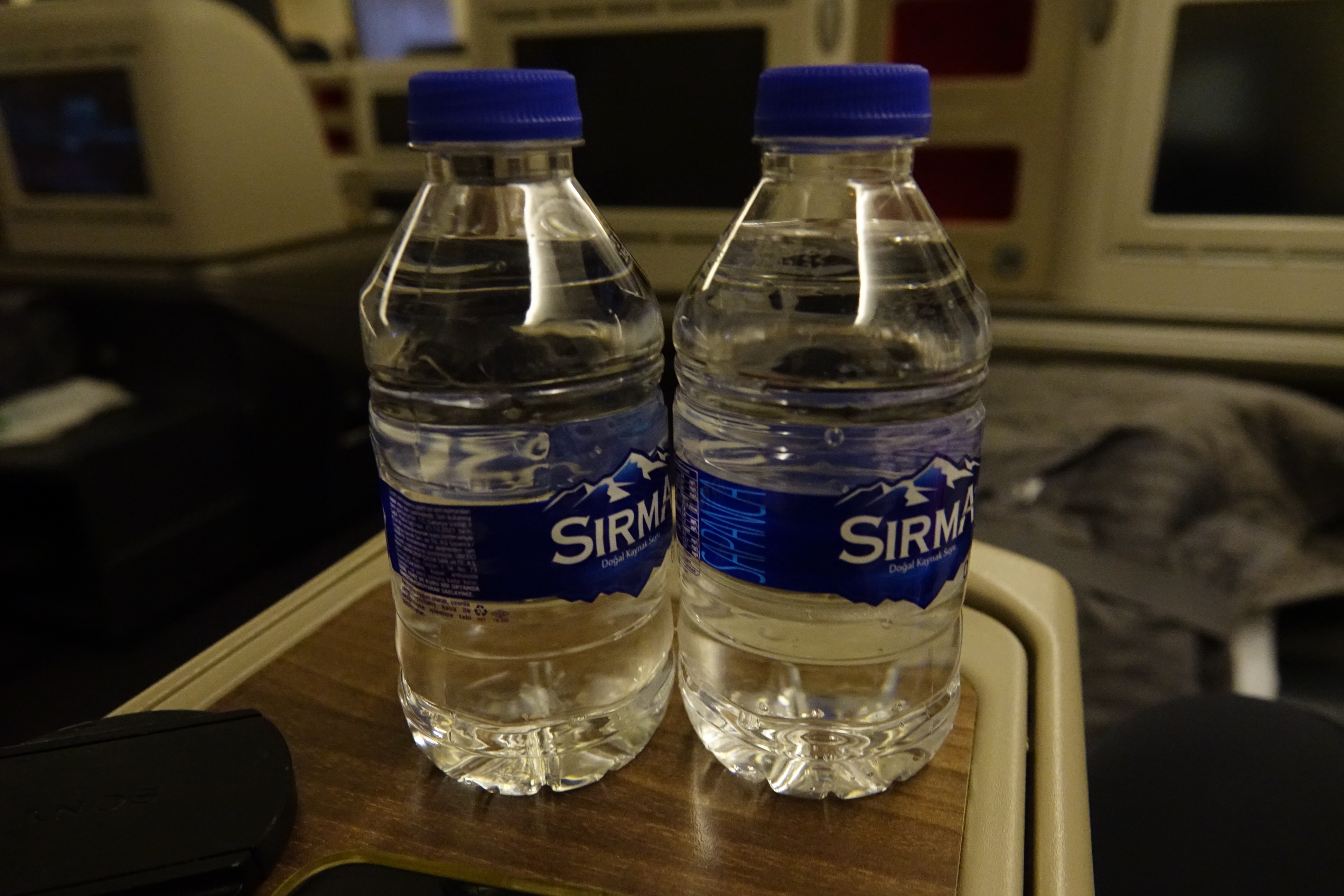
Turkish Airlines 777 Business Class Water
My wine was the first out of my ordered options to arrive, and came with a ramekin of (room temperature) nuts.
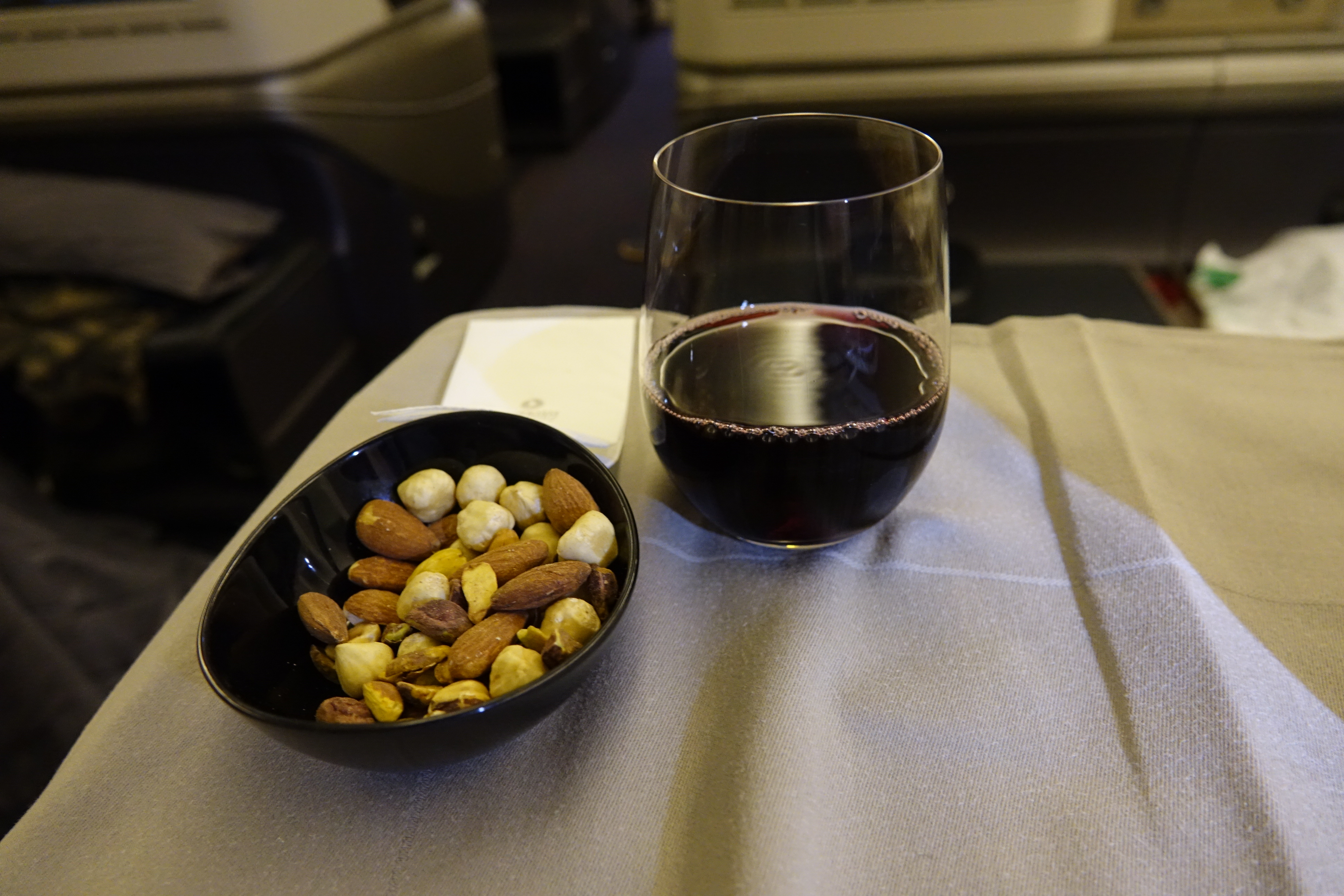
Turkish Airlines 777 Business Class Pre-Meal Service Beverage and Nuts
For my starter I ordered the wild salmon tartar and prawn, which was brought to me on a plate – no trolleys or trays were used. Relative to all of the other dishes this was just okay (I’m still not sure what armstrong sauce is), though I really loved the presentation, including the fake candle. I was particularly a fan of the bread accompaniments, including a room temperature pat of butter (which tasted homemade, as it was more aerated than normal airplane butter), and some delicious za’atar.
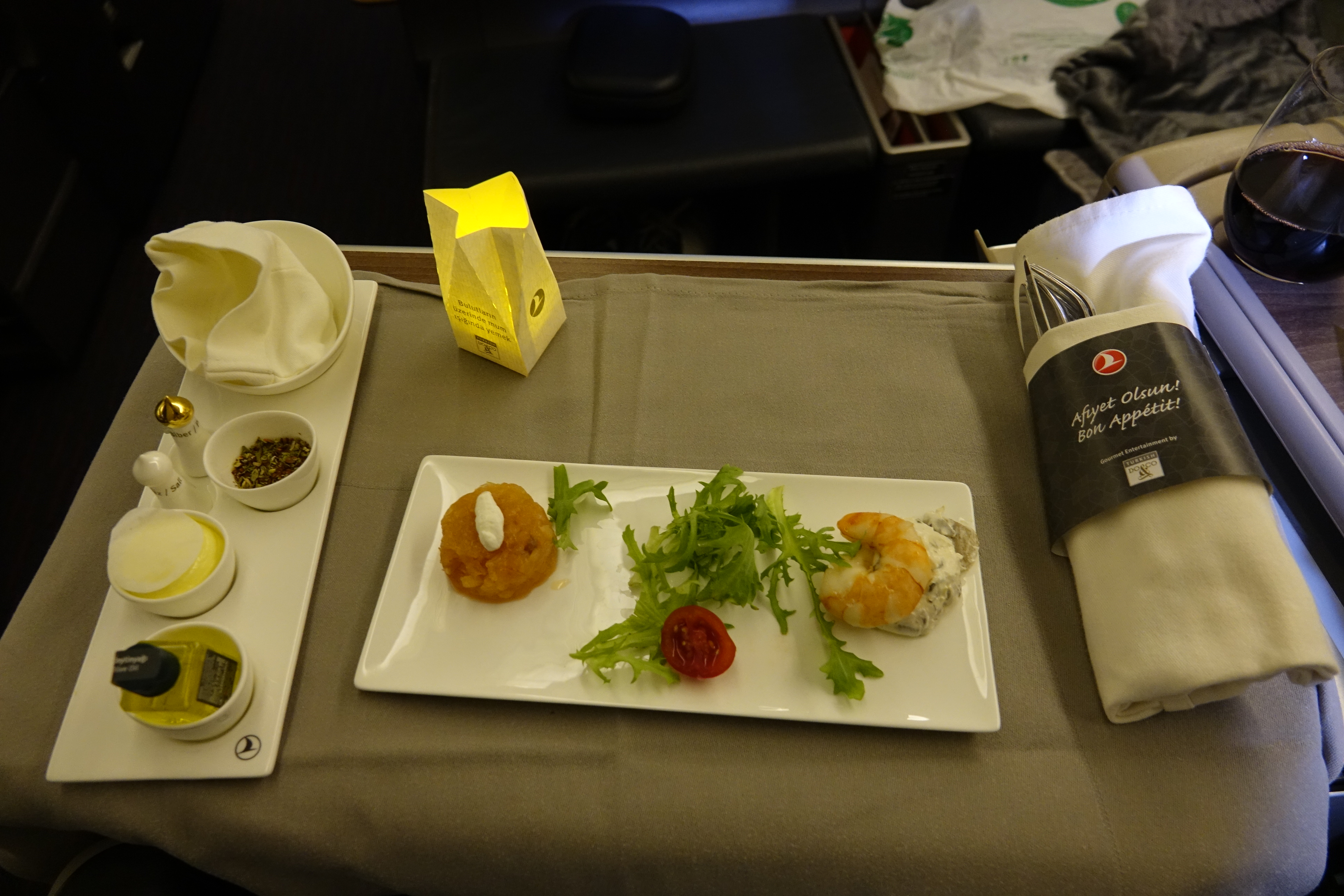
Turkish Airlines 777 Business Class Appetiser – Wild Salmon Tartar and Prawn
Although the soup was also listed as an appetiser, it was served as a separate course. This was sweet pumpkin soup, and it tasted as good as it looked (though I can’t help but wonder whether Turkish Airlines used to serve soup in golden bowls, at least from what I’ve seen online?).
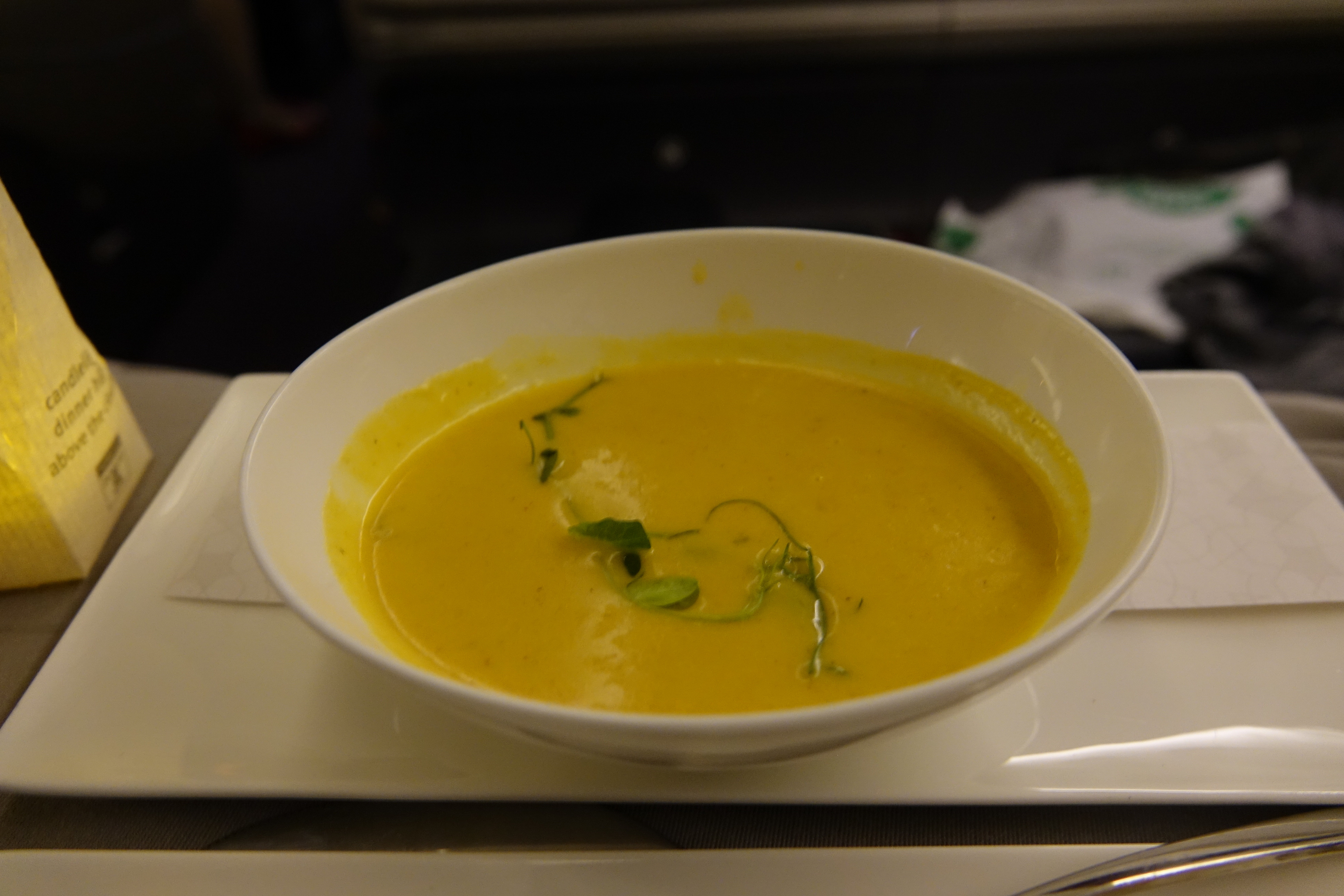
Turkish Airlines 777 Business Class Appetiser – Sweet Pumpkin Soup
For the main course I selected the traditional Turkish dish on offer (karniyarik – eggplant stuffed with lamb cubes), which was absolutely phenomenal. The lamb, eggplant, sauce were all so flavourful and delicious, and even the buttered rice tasted so good – yum yum yum!
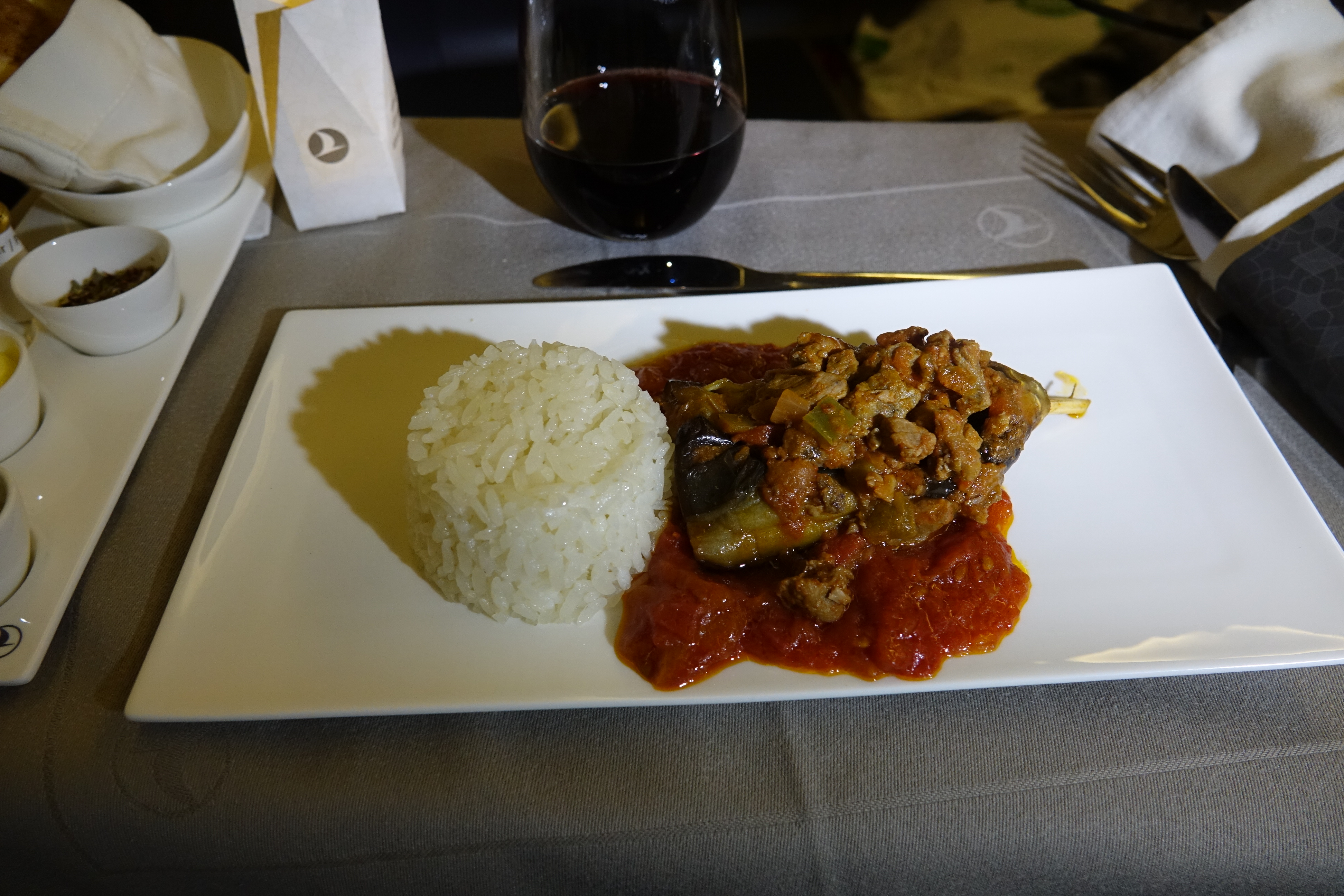
Turkish Airlines 777 Business Class Main Course – “Karniyarik” Traditional Lamb-Stuffed Eggplant
For dessert I selected the sweet curd and apricot brioche. Secretly I wish the brioche was doused in custard (the dessert was a fair bit lighter than I thought it would be), though the dessert did taste great.
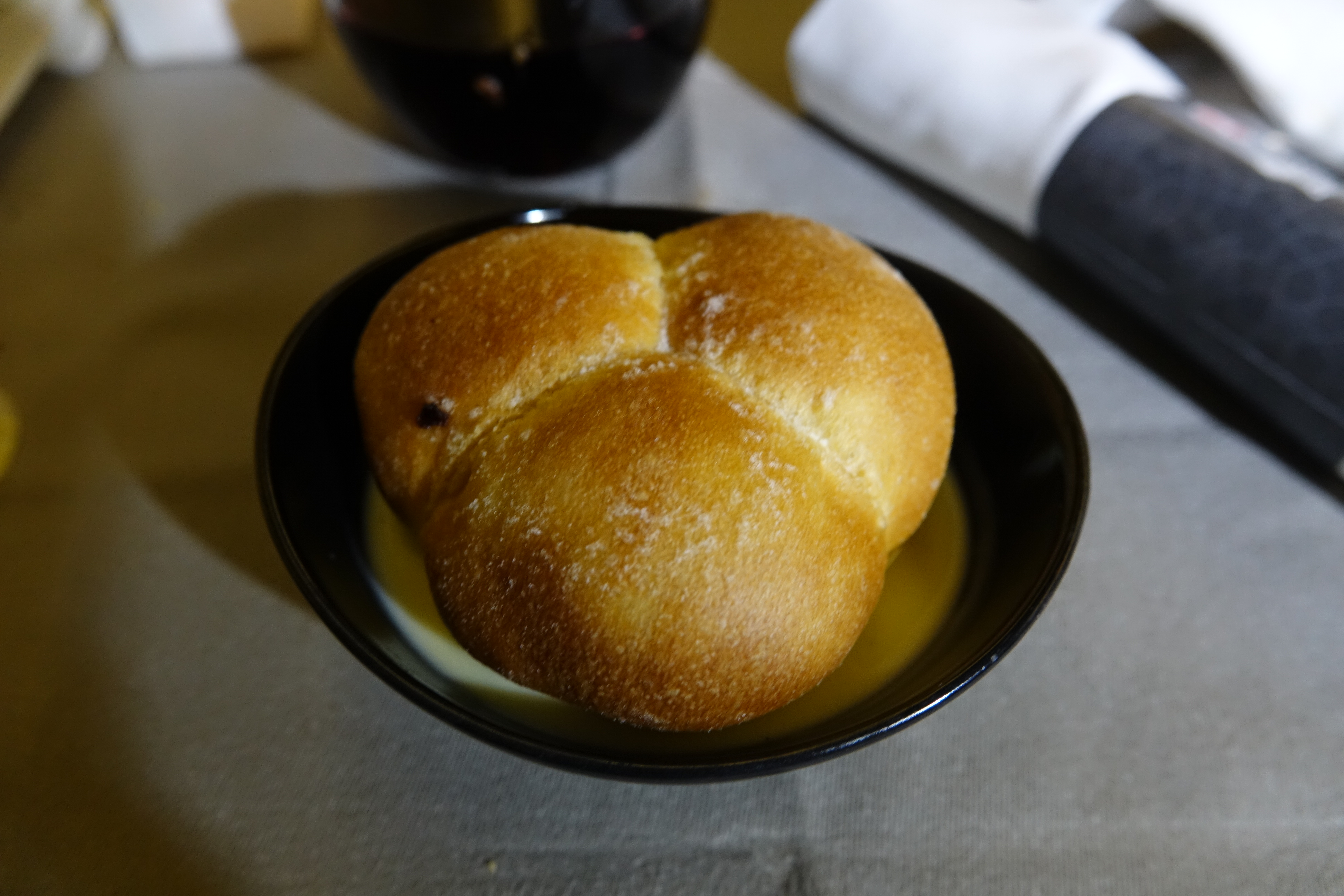
Turkish Airlines 777 Business Class Dessert – Sweet Curd & Apricot Brioche
The meal service was phenomenal and wrapped up in under half an hour, though once again felt very rushed. I felt like the flight attendants came around to clear plates not long after they served them, and my soup was actually taken away before I was done (I’d leaned back to take a break for a bit). I did like that there were no trolleys or trays involved, as service didn’t feel like much of an assembly line at all. Furthermore, I was the last to be served, and the crew didn’t run out of any of my preferred options.
Turkish Airlines’ 777 Business Class Service
The flight attendants on this flight were very friendly. I had the chance to speak to a flight attendant about his experience working the Istanbul-Hong Kong route, which sure isn’t an easy route to work in 2022 – the flight attendants operate under a closed-loop system where they work the flight to Hong Kong, stay overnight in quarantine, and operate the flight back to Istanbul the next evening. I was also told that this flight is consistently quite full, which obviously makes things more difficult for flight attendants.
I did feel like this stress was reflected in service, and sensed that the crew felt quite frazzled. I really can’t blame them – what a stressful flight to operate.
Turkish Airlines’ 777 Business Class Lavatory
Turkish’s 49 business class passengers share three lavatories (signage onboard and SeatGuru suggested that there were two, but the lavatory I used most frequently was probably repurposed from a galley). I only snapped a photo of the lavatory I used, which was quite standard for the 777. Both other lavatories feature a fancier “real” sink, though are otherwise similar – all feature Molton Brown toiletries.
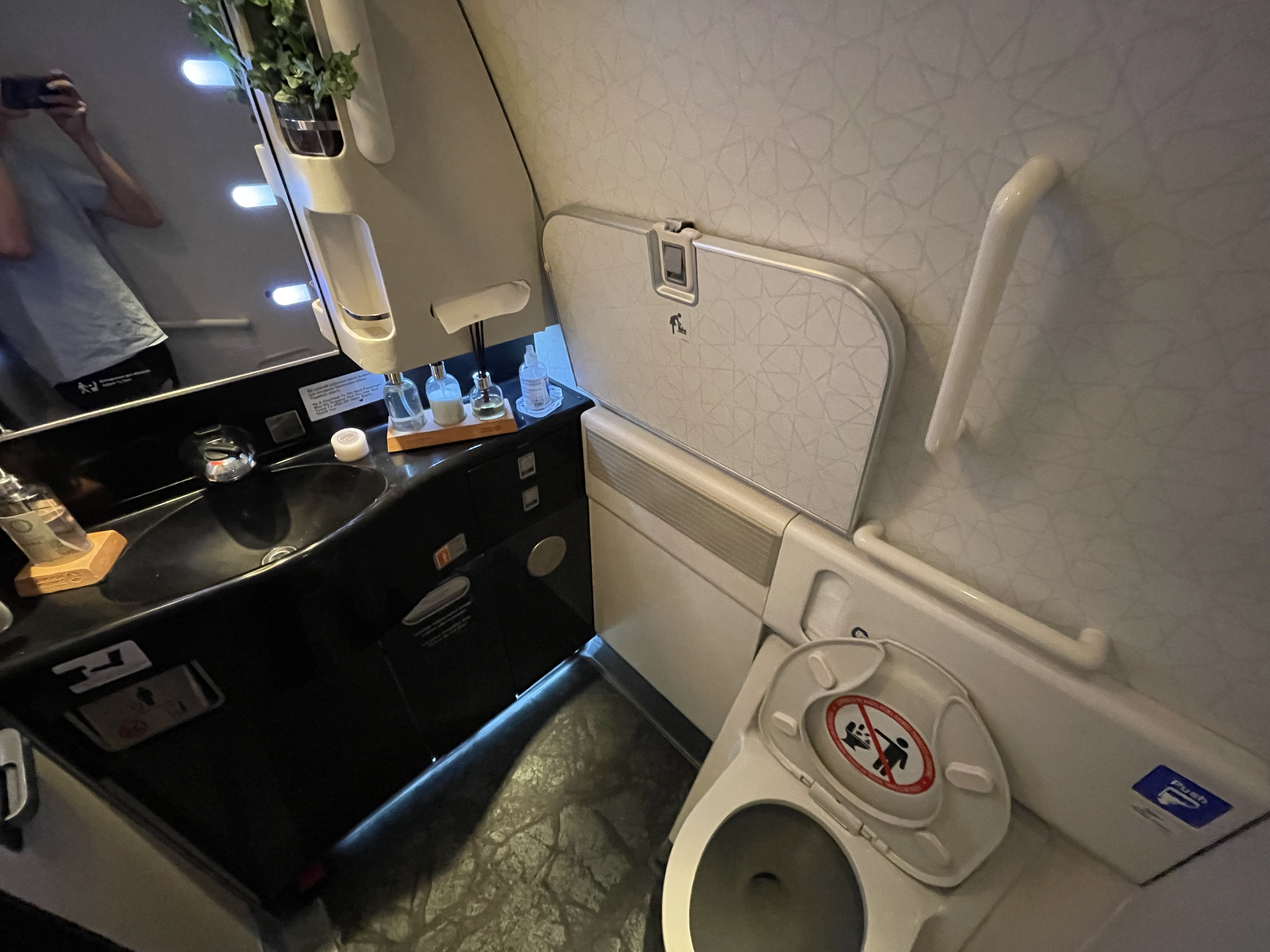
Turkish Airlines 777 Business Class Lavatory
Turkish Airlines’ 777 Business Class Pre-Landing Meal Service
After I returned to my seat, I hopped into bed, and slept very well. I woke up unsure of what time it was (I could’ve checked the entertainment system or my watch, but I didn’t for some reason), so I asked a flight attendant if I’d missed breakfast. The flight attendant reassured me that breakfast was just starting (while reassuring, this reaffirmed that Turkish times their meal services, even though they advertise a dine-on-demand service). After reconnecting to WiFi, I learned that we were just over an hour out of Hong Kong.
Unlike the first meal service, orders weren’t taken in advance, and were served on trays. First an appetiser was served, which featured some mixed vegetables, olives, cheese, and a surprisingly flavourful slice of turkey breast. This was served with a black sesame cottage cheese salad, some walnut tomato paste, a fruit salad, and “kaymak” clotted cream with honeycomb.
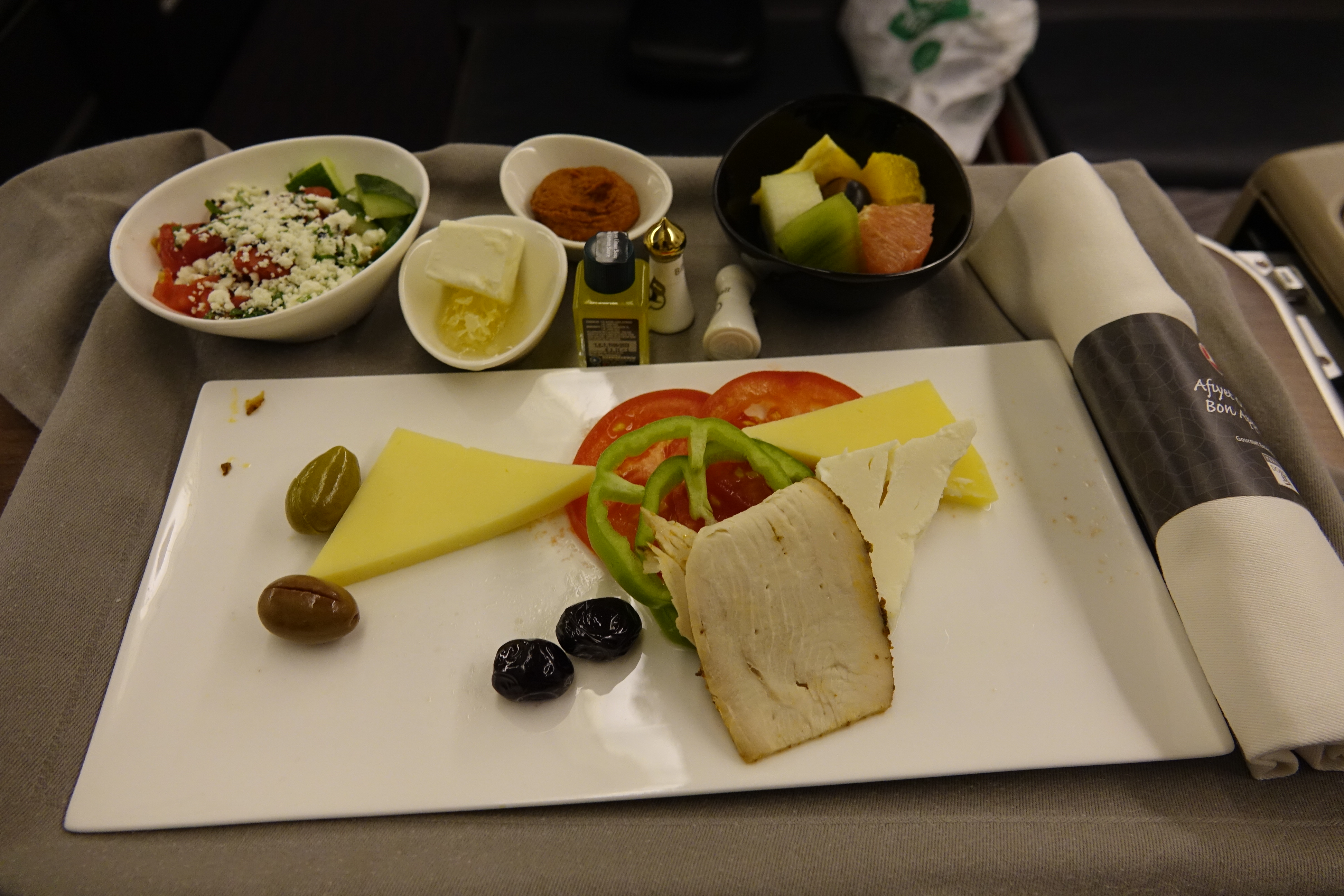
Turkish Airlines 777 Business Class Breakfast – Marinated Turkish Olives, Turkey Breast, Regional Cheeses
For my main I knew I wanted the gozleme, which sounded really good. It wasn’t nearly as good as the gozleme I tried in the lounge (stay tuned for that review), though was still packed with flavour.
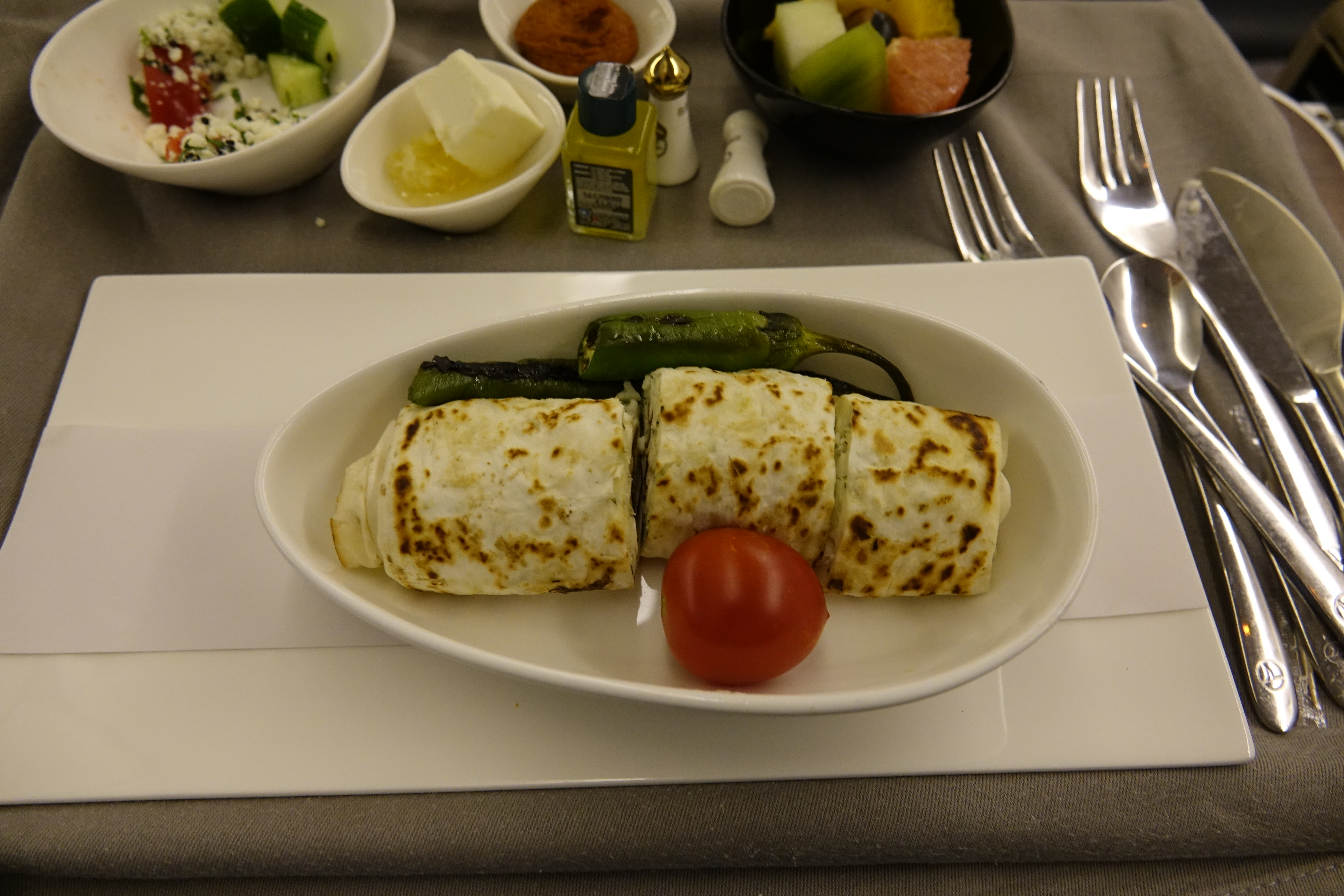
Turkish Airlines 777 Business Class Breakfast – “Gozleme” Grilled Flat Pastry Stuffed with Cheese
Breakfast is normally the least impressive meal of any flight, and I’d say that was true in this case. I mostly appreciated that breakfast wasn’t a simplistic choice between two egg dishes, and was happy to see that Turkish managed to showcase a small part of their massive breakfast culture with a Turkish breakfast dish (not just with the gozleme, but with the kaymak as well). I also appreciated that even the side salad wasn’t your average airplane salad.
During the meal, I had a chance to speak to my seatmate from across the aisle, who was also flying from London to Hong Kong for work (he’d flown in from Heathrow, so wasn’t on my previous flight). He asked if I was reviewing the flight and I said yes, and he said he flew between the two cities quite frequently, so we had a chat comparing his experience on Turkish to his experiences in the (recent) past.
Turkish Airlines’ 777 Business Class Entertainment System
While I was very happy with the free gigabyte of WiFi I had access to, I decided to check out the entertainment system shortly before landing. While the interface was more antiquated, it was still easy to use (and touchscreen, though the screen was placed so far away that the remote was more convenient), and featured the same extensive choice that I found on my previous flight.
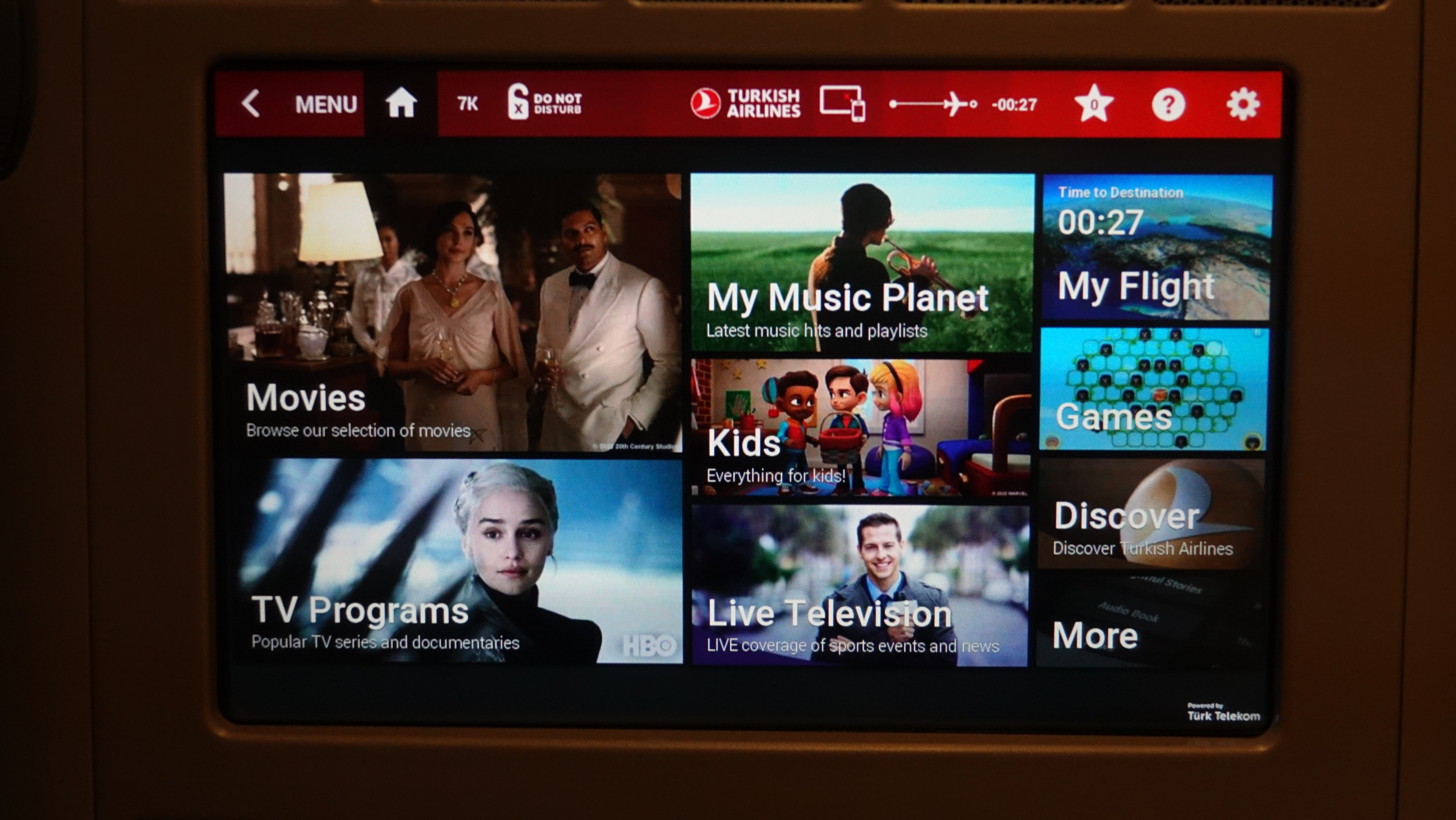
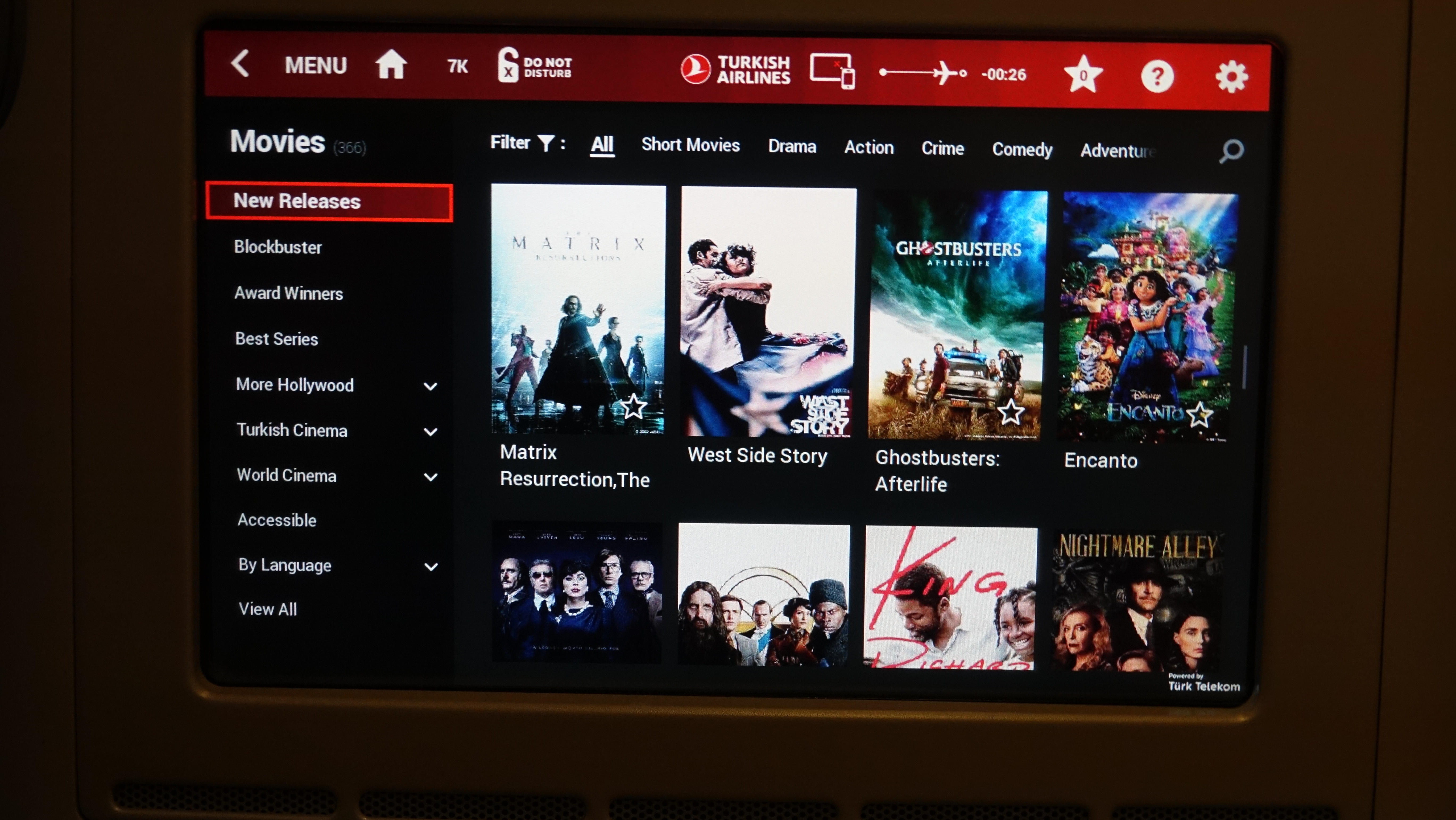
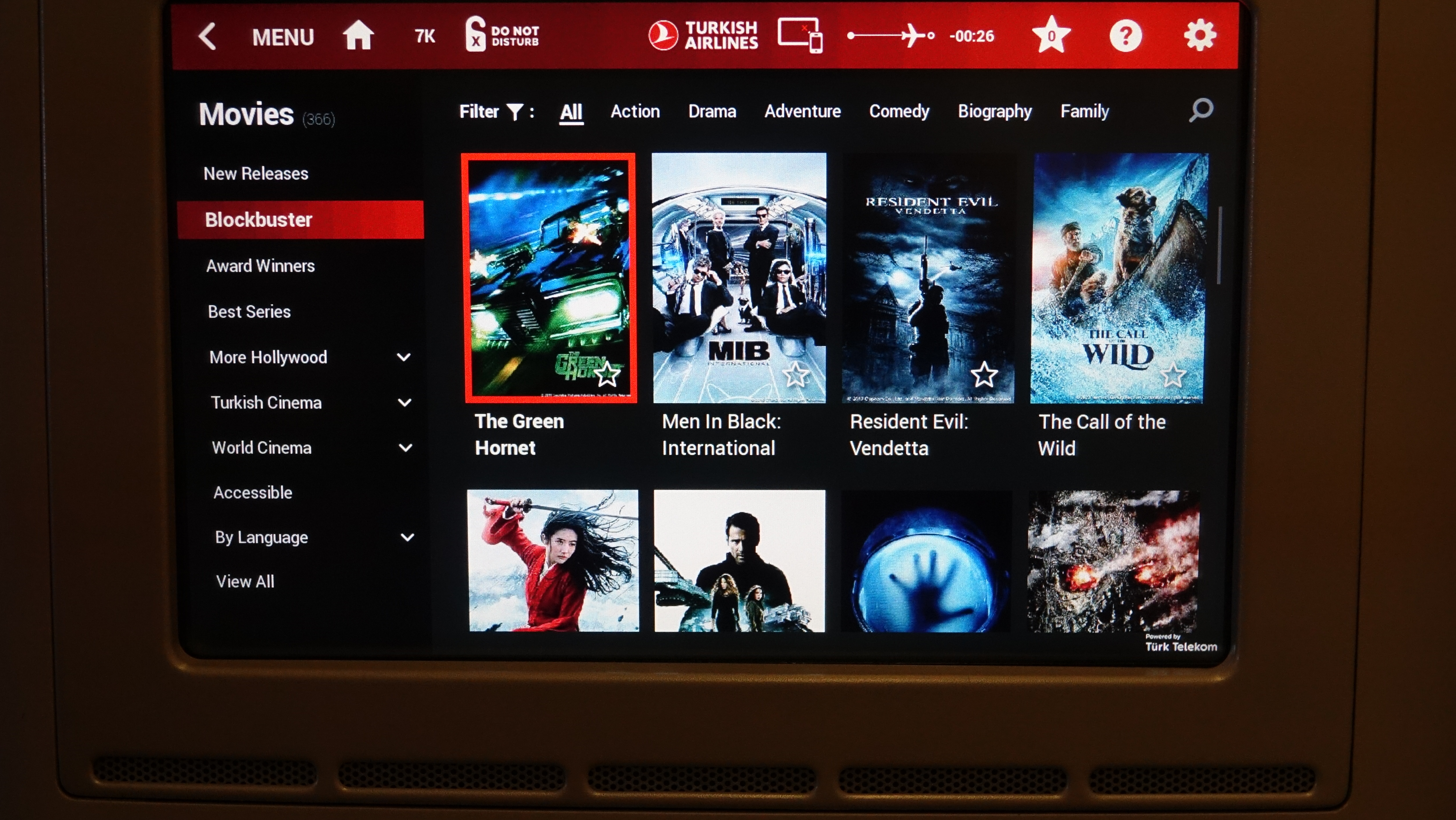
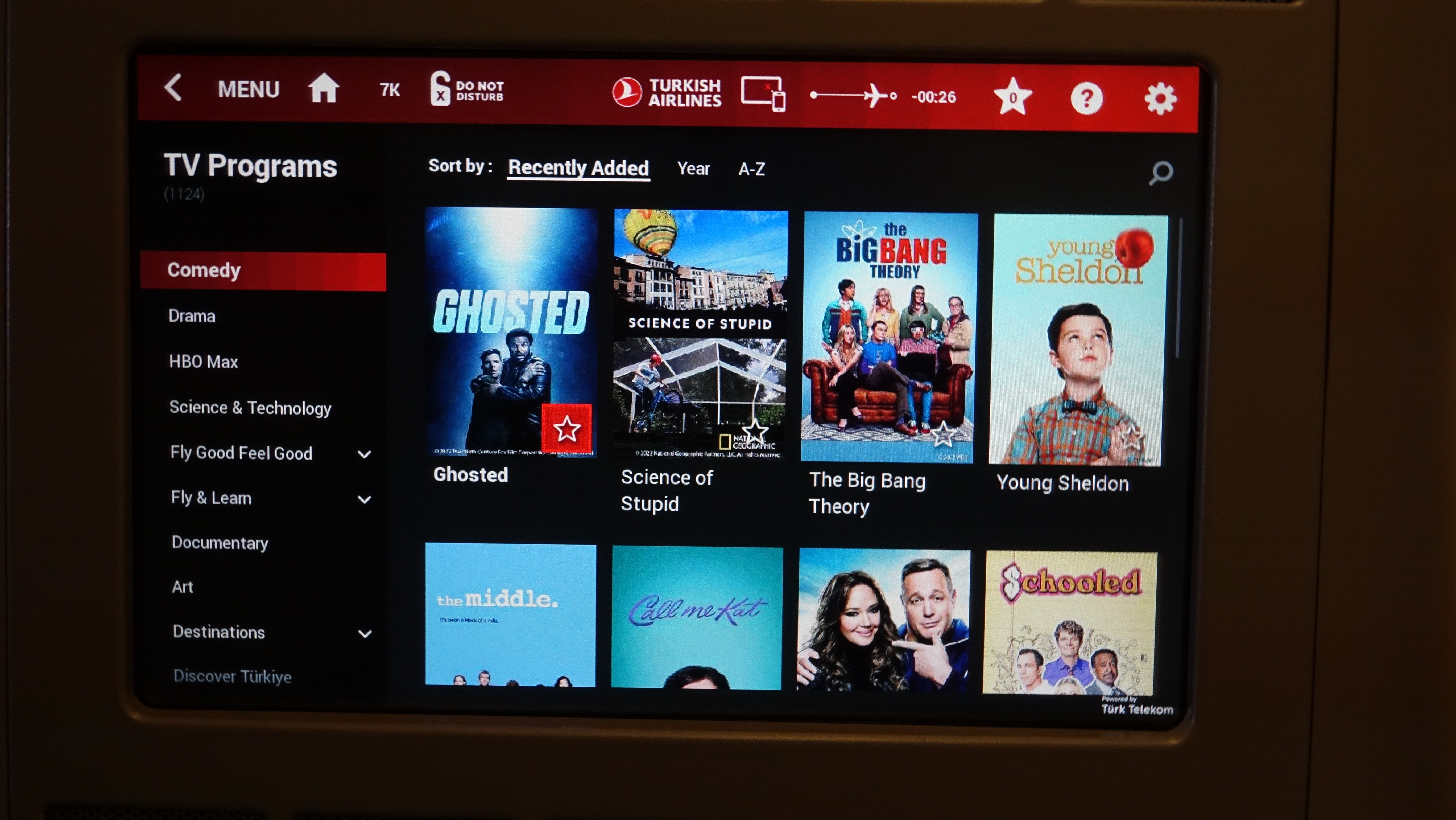
Turkish Airlines 777 Business Class Entertainment System
The one significant downgrade on these older planes was the moving map, which was slideshow-style and not interactive.
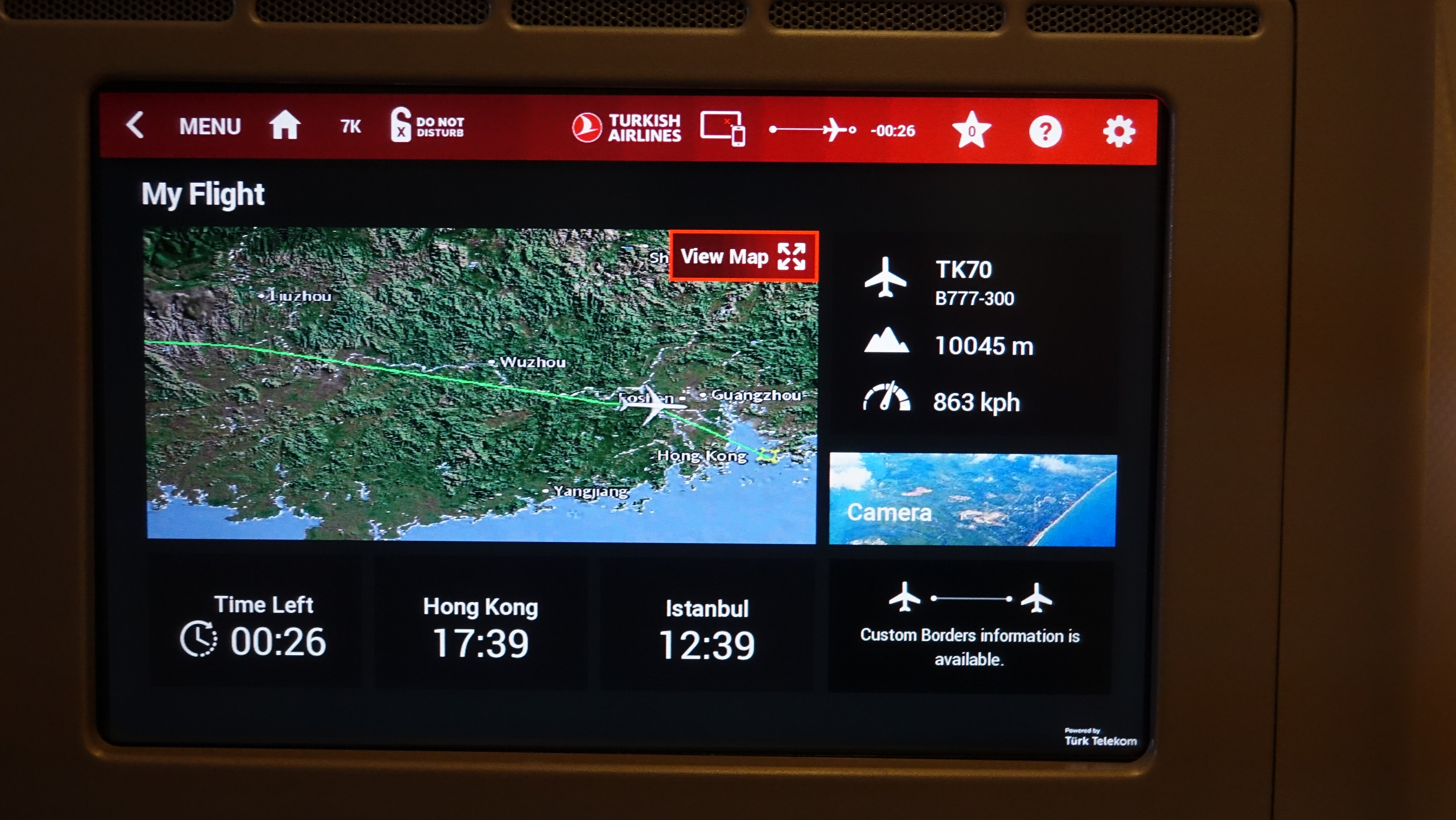
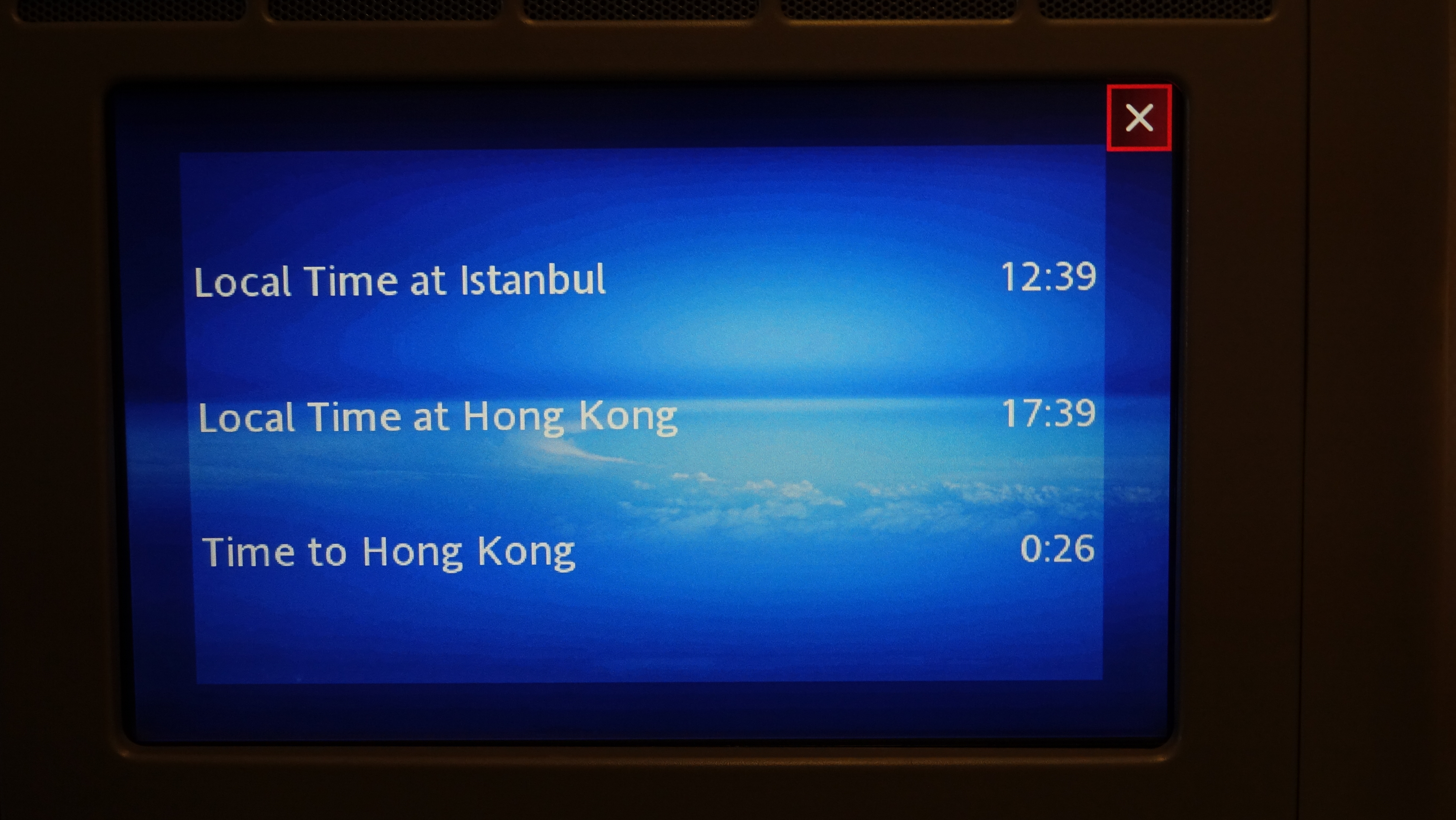
Turkish Airlines 777 Business Class Moving Map
Landing into Hong Kong Airport
30 minutes before landing, the captain came onto the PA to announce our landing time of “five minutes past six PM”. A further 15 minutes later the seatbelt sign was turned on, and we started our descent into Hong Kong Airport. Our approach involved a U-turn past Macao over the sea and the window was rather dirty, so I didn’t get many good photos.
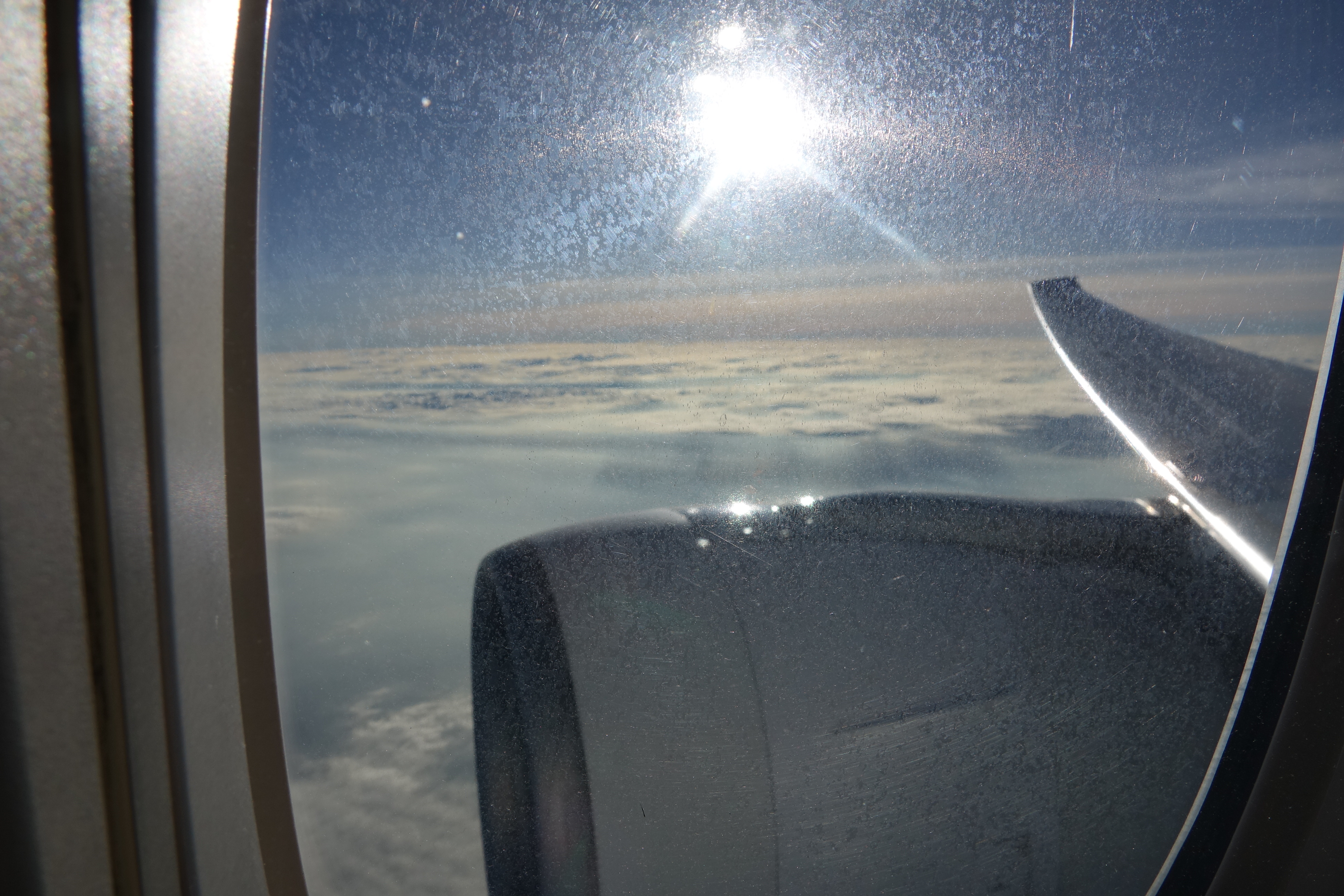
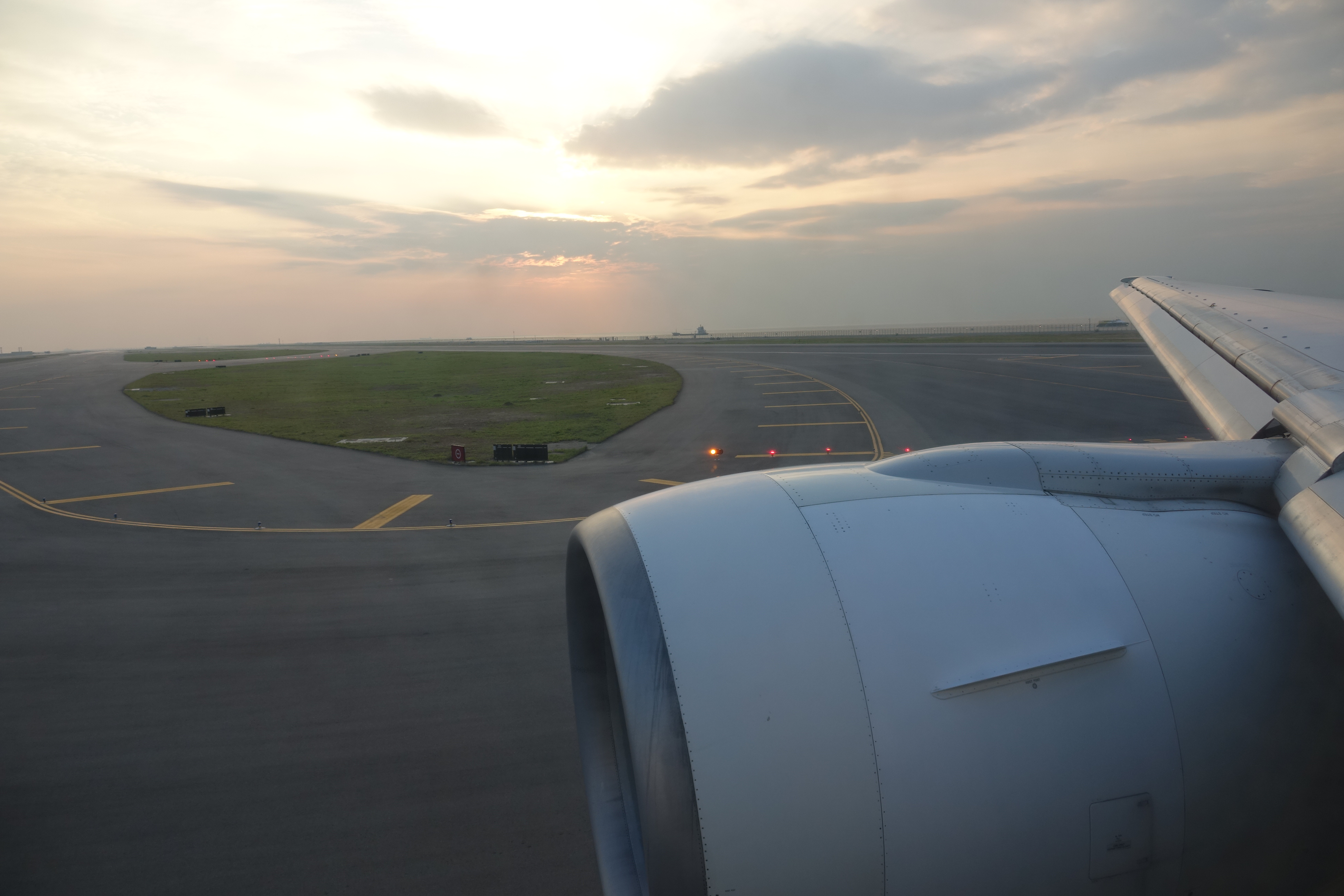
Landing into Hong Kong Airport
After touching down on runway 07L (indeed at 6:05 PM), we taxied over to gate 28, which took 15 minutes. During this time I spotted a Greater Bay Airlines 737 – this airline didn’t exist last time I was home!
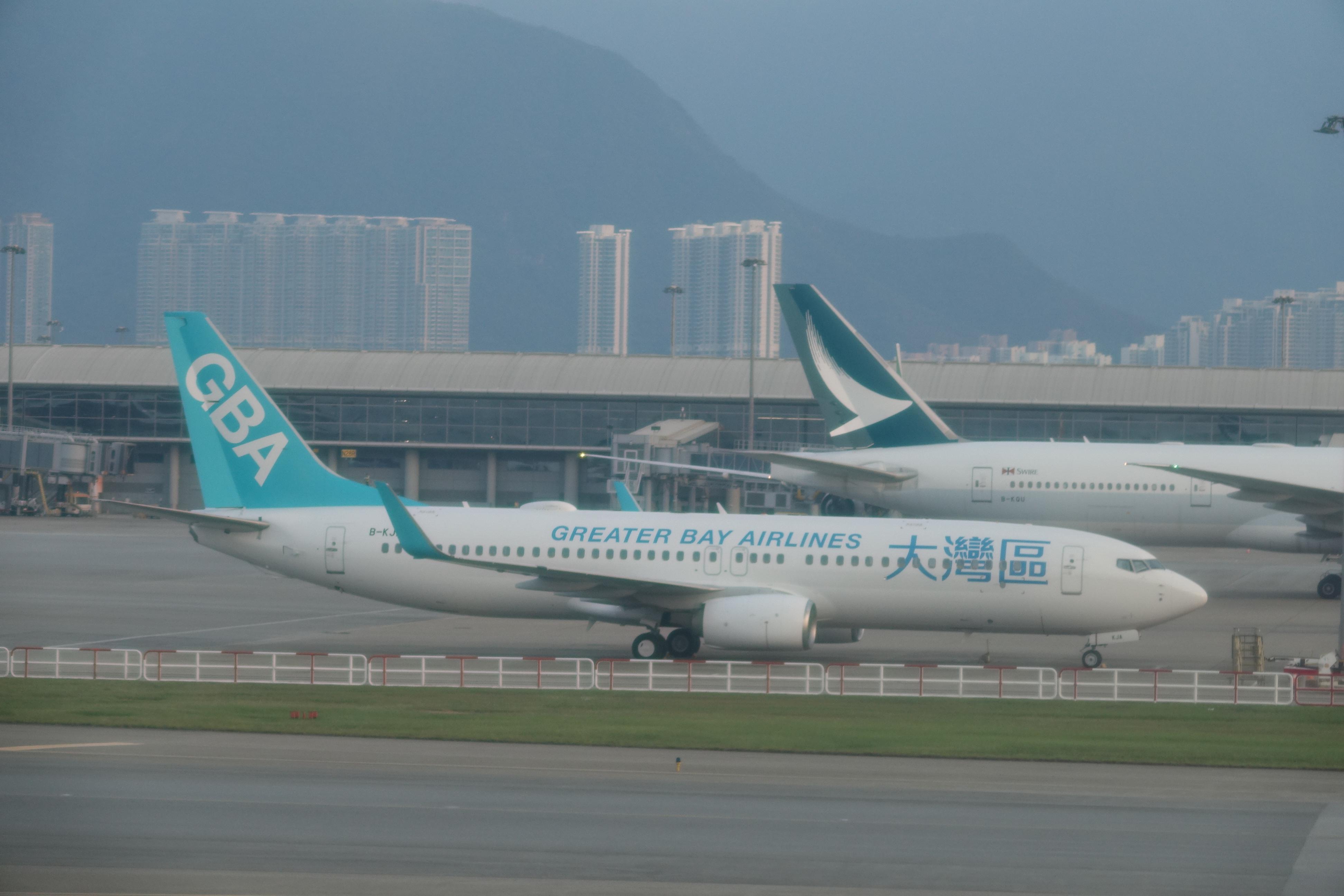
Greater Bay Airlines 737 Hong Kong Airport
Getting off the plane was a breeze, as were arrival, COVID testing and quarantine registration procedures, which I’ll write about in a separate post.
Conclusion: Turkish Airlines’ 777 Business Class
There’s no denying that Turkish Airlines’ 777s don’t offer a great hard product – a 2-3-2 configuration in 2022 simply isn’t competitive anymore. That being said, I did think that this seat was one of the most comfortable standard forward-facing seats I’d flown in, largely due to how sturdy the seat was in bed mode (this doesn’t factor in the empty seat I had next to me, though that sure made my experience a lot more comfortable). I’m hoping to try one of Turkish’s newer 777s to see if the enhancements make a difference, though it’ll still be a far cry from their hard product on their 787 and A350 – while I’d agree that these seats are better for couples travelling, the possibility of booking last-minute and being stuck in a middle seat just takes away from the appeal of this product. I also wasn’t impressed by the fact that all four power ports by my two seats were broken.
I was very impressed by the soft product on this flight, and thought it was industry-leading. I knew coming in that I’d have a great meal on this flight, and they delivered – I so thoroughly enjoyed the way Turkish Airlines invested into their longhaul catering experience, and especially loved the Turkish elements dotted throughout. However, from the phenomenal bedding, to the other high-quality amenities, to the high WiFi allowance, the entire experience felt a lot more polished than I was expecting. At a time like this, I’m also not willing to fault the (otherwise super friendly) cabin crew for a slightly flustered service performance on an Istanbul-Hong Kong flight, with a closed-loop quarantine and another long flight so close on the horizon.
If I experienced this soft product on one of their 787s and A350s, I’d imagine this would be one of the best business class products out there, all things considered. I haven’t even reviewed the lounge yet, which is also very impressive (though not the best of the best, for reasons I’ll elaborate in a future post). And let’s not forget the fact that some of Turkish Airlines’ newest A350s have enclosed suites…
A one-stop itinerary on Turkish Airlines does seem to consistently be one of the cheapest options to get between Europe and Asia, and I’d definitely recommend them, even if you’re flying a 777. In fact, with Etihad’s struggles, Turkish probably rivals Emirates and Qatar Airways as one of the “big three” one-stop carriers between Europe and Asia. Assuming all were priced equally, I’d probably not choose a Turkish 777 business class flight over an Emirates A380 or a Qatar Airways QSuite/A380 flight, due to the inferior hard product – though I feel like Turkish’s soft product may actually surpass them both. I’ll compare and contrast the three airlines properly in a future post.
Read more from this trip:
Have you flown Turkish Airlines’ business class before? Were you as impressed by the soft product as I was?

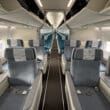

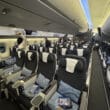

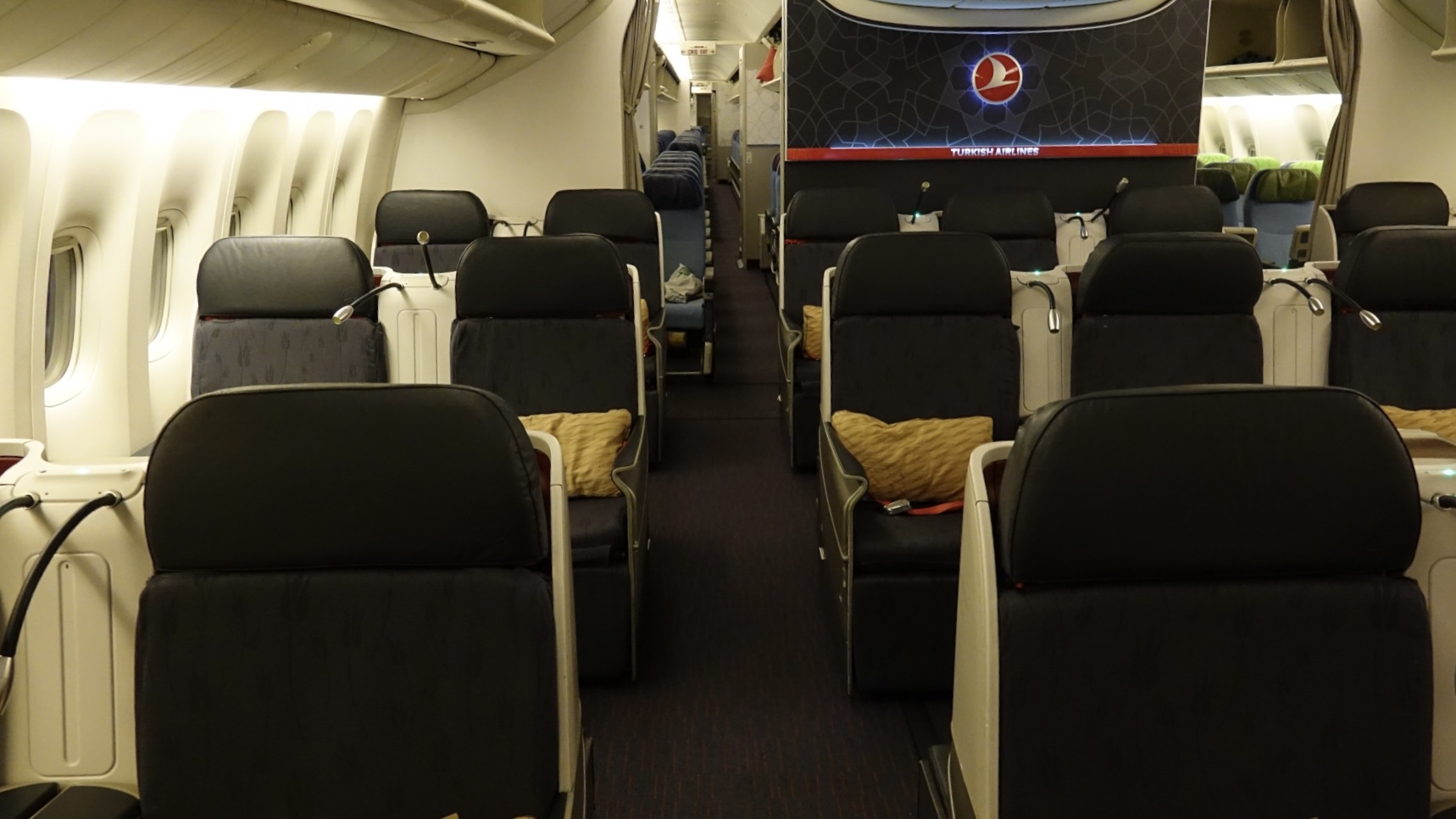






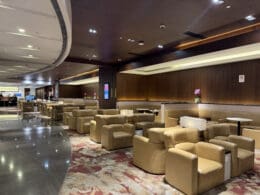
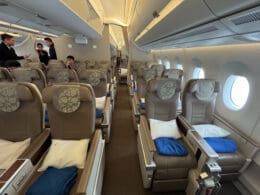
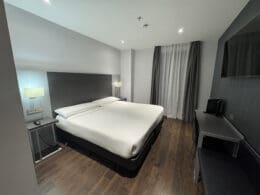
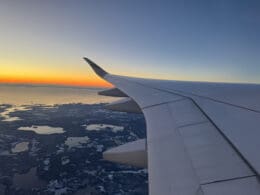
2-2-2?
No-No-No
If it was 1-1-1, it’d be Cathay Pacific first class
Thank you for this review, I will be traveling with Turkish Airways Business Class in November 2023 from CPH to Cancun.